
N° 20 / SUMMER 2024 BUSINESS & LIFESTYLE MAGAZINE


Constantly chasing Unicorns
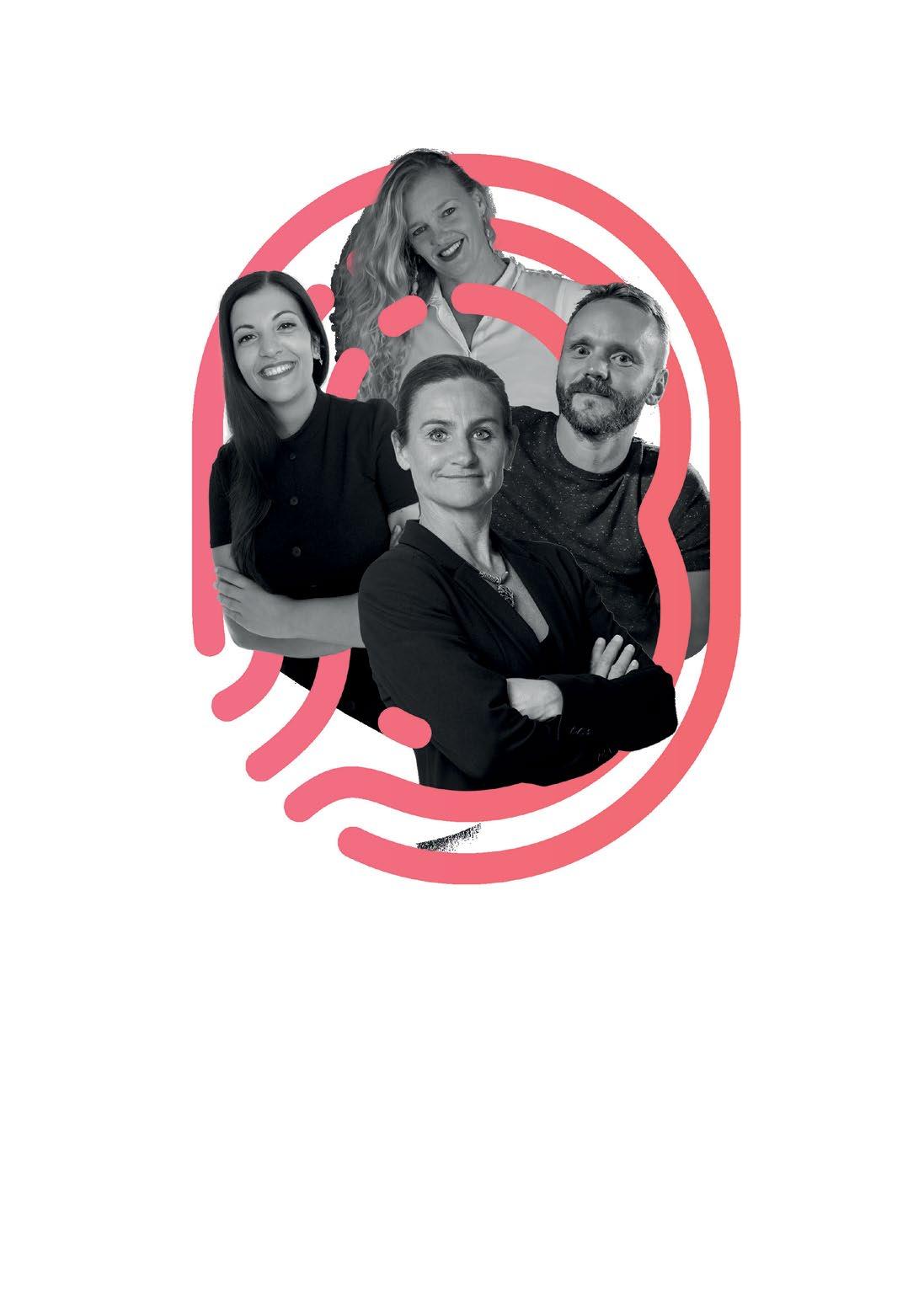






EBM Magazine has rebranded into NEXT Magazine! What are some of the changes you can look forward to? For the most part, nothing will change, apart from perhaps more iGaming content and more in-depth business interviews. Nevertheless, a significant portion of lifestyle content will continue to be delivered to you with lots of love and passion.
In this issue I will take different approach to the editors note and share two of my favourite passions: movies and food, with a particular focus on films centred around culinary delights Movies and food hold significant sway over our emotions, evoking a diverse range of feelings. Cinema, throughout history, has mirrored society's triumphs, challenges, and intricacies. It tells stories that resonate with our lives, attempts to predict the future, and fosters a sense of connection and empathy. By depicting various cultures and issues, films promote understanding and compassion among audiences. Similarly, food has the power to transport us through time, space, and memories, but most importantly it makes us feel. In this note I will match favourite movies with corresponding restaurants of the same cultural background found in Malta.
The initial film on my list is a true masterpiece, delving into the intricacies of love, food, and the passion for flavours. "Tampopo," a dark comedy, weaves together multiple narratives into one captivating story. Many scenes from this film have achieved cult status due to their stunning portrayal. As for my favourite Japanese restaurant in Malta, I highly recommend N Japanese Bistrot. Their menu boasts delicious dishes such as battered chicken, radish salad, tomato salad, and octopus sashimi. Additionally, their extensive selection of sake is worth exploring - don't miss out on the tasting experience!
Italian cuisine holds a special place in my heart, and one of my cherished films beautifully intertwines food with a captivating narrative, featuring the talented Tilda Swindon. In "I Am Love," the journey to her character's heart is intricately linked with her stomach. An interesting tidbit: Swindon dedicated herself to learning both Italian and Russian for this role. When it comes to dining, my top pick for Southern Italian and Maltese cuisine is Terrone in Birgu. The menu boasts numerous delights, but my personal favourites include red prawns crudo, langoustines, and anything with burrata. A recent addition, Wagyu beef tartare, is simply exceptional!
When discussing food, it's nearly impossible to overlook the allure of fine dining—the whole experience, from dressing up to dedicating an entire evening, holds a unique charm. A beloved film that explores this world, set in France, is "The Hundred-Foot Journey." This heartwarming tale is sure to leave you feeling warm and inspired, perhaps even imparting some culinary wisdom, like mastering the perfect omelette. In Malta, Ion the Harbour stands as the epitome of fine dining and recently boasts two Michelin stars. With its breathtaking views, spacious ambiance, and impeccable service, it promises an unforgettable dining experience. Among the standout dishes on the tasting menu, categorised by main ingredient, are duck, artichoke, gem lettuce, pork and eel doughnut. Whether it's a special occasion or simply a Wednesday, Ion the Harbour offers an exquisite culinary journey worth savouring.
Is it even possible to discuss food without delving into the realm of French cuisine? Certainly not. While the following film isn't French (as I've yet to come across one centred on French cooking), “Julie & Julia” is a remarkable and uplifting true story featuring Meryl Streep and Amy Adams. This narrative traces the journey of French cuisine into the hearts of the American public. A word of caution: you might find yourself intimidated by French cooking afterward, but you'll undoubtedly be left with a sense of inspiration. While there's no particular French restaurant that stands out on the island, there's a culinary gem that was founded in Monaco by Italian Riccardo Giraudi - Beefbar in Malta. Brought here by Jean Paul Testa, this establishment offers an exceptional menu inspired by street foods from around the globe. Among the favourites on the menu are rock corn, caesar miso salad, mini-burgers, prawn crudo, and lemon chicken.
To be continued…

For sales, contact Julia Boikova
julia@next.io
sales@next.io
For any other enquires
info@next.io
Art Direction
Julia Boikova www.juliaboikova.com
Words
Nicolà Abela Garrett linkedin.com/in/nicola-garrett/
Design
Fran Borg
N o 20 - NEXT MAGAZINE - 5
N o 20 / SUMMER 2024 Next Magazine @nextmagazine #nextmagazine
EDITOR'S LETTER
Julia Boikova | Editor, Next Magazine

Dining
David
Phil
Pedram
Josefine
Elite
In
Laurent Reysbosch,
Delving
Savouring
N o 20 - NEXT MAGAZINE - 7 CONTENTS 08 FIGHTING FOR THE PERFECT BALANCE
Yatom, General Counsel of Soft2Bet 48 TERRONE
experience 49 CONTESSA
everyday
Mediterranean
50 ION HARBOUR
fourteen chapters
a michelin epic 52 CHRIS BRIFFA
architecture and hospitality meet 58 LUCERNE
magically medieval and mountainous retreat 64 HOT ON ITALY'S HEEL
weekend getaway to Puglia's finest spots 72 VENETIAN BITES
Fortifying an exeptional dining
The
luxury that is southern
Cuisine
The
of
When
A
A
Il Palazzo Experimental 78 HOTEL VITZNAUERHOF
a new age of Alpine hospitality 84 MARIO ABELA Contemporary artist 84 ALBERTO FAVARO Sunset, sunrise synchrony, 2017 90 RECIPES BY MICHAEL DIACONO 96 PRESERVING SALINA NATURE RESERVE 14 MODERN MARKETING IN THE AGE OF SOCIAL MEDIA
Ristorante Adriatico at
Generating
Pearson, CEO of White Label Casinos 16 THE RETENTION FORMULA
COO of Enteractive 20 WORK HARD. PLAY KIND
Padidar,
Hellström General Manager of ChristchurchCasino.com 22 GIANTS IN CONFERENCE
Retreat & Next.io
with Pierre Lindh 23 IGAMING, CRYPTO, INVESTMENT PHILOSOPHY, START-UPS & AI
Valletta,
conversation with Tim Heath, GP of Yolo Investments 26 RIPPING UP THE RULEBOOK IN TECH SALES
Co-Founder & COO of Paytently 28 OUR FUTURE WITH AI
Alexandre
of Alea 30 WANDERING WORKERS
coworking spaces across Europe 36 REDEFINING THE STARTUP LANDSCAPE Station F in Paris 38 TA' BETTA WINE ESTATES
in with
Tomich, Co-Founder & COO
Exploring
& Maltese Vine Yards 44 BEEFBAR
Sauvignons
in
city &
beach
the
on the
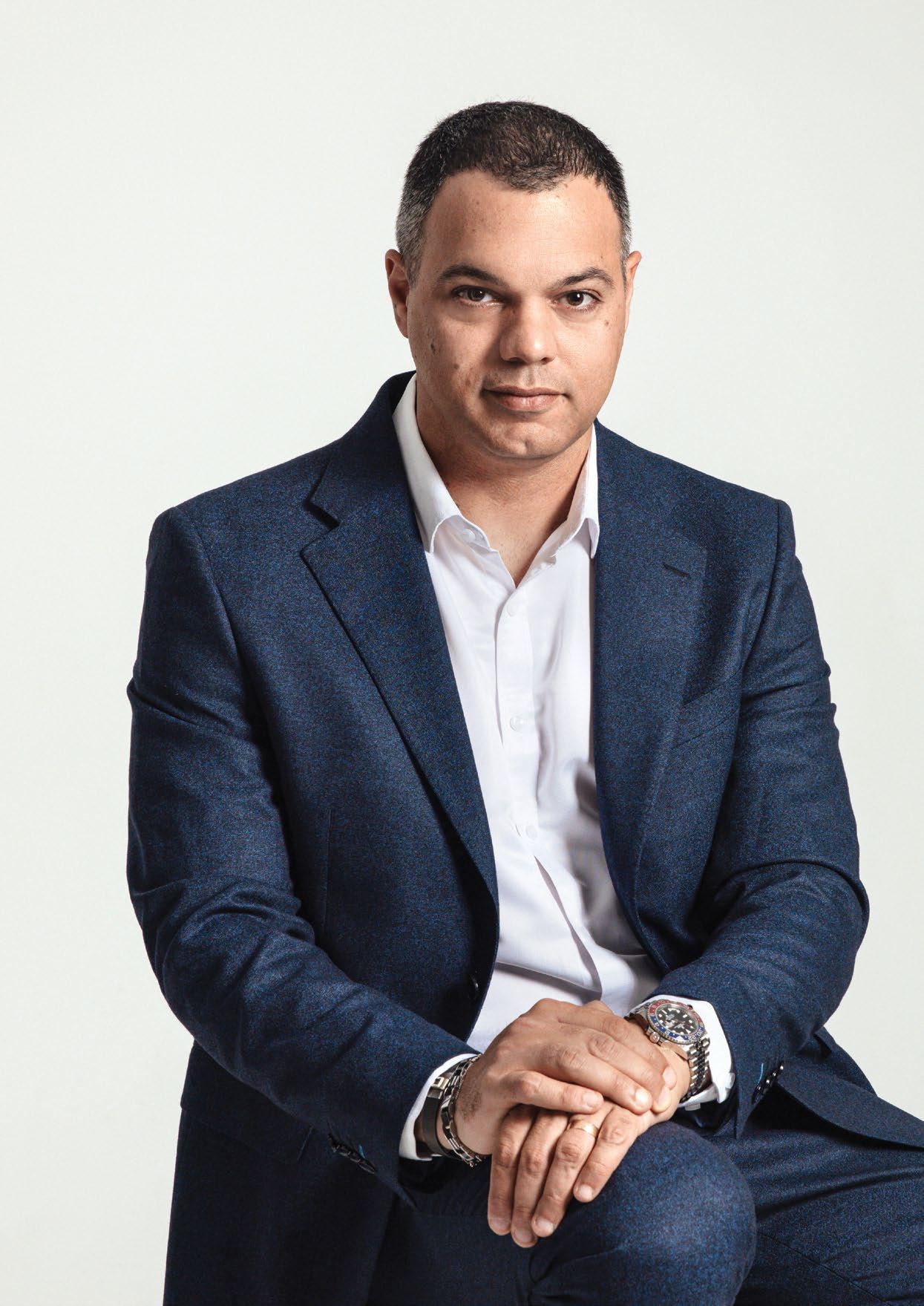
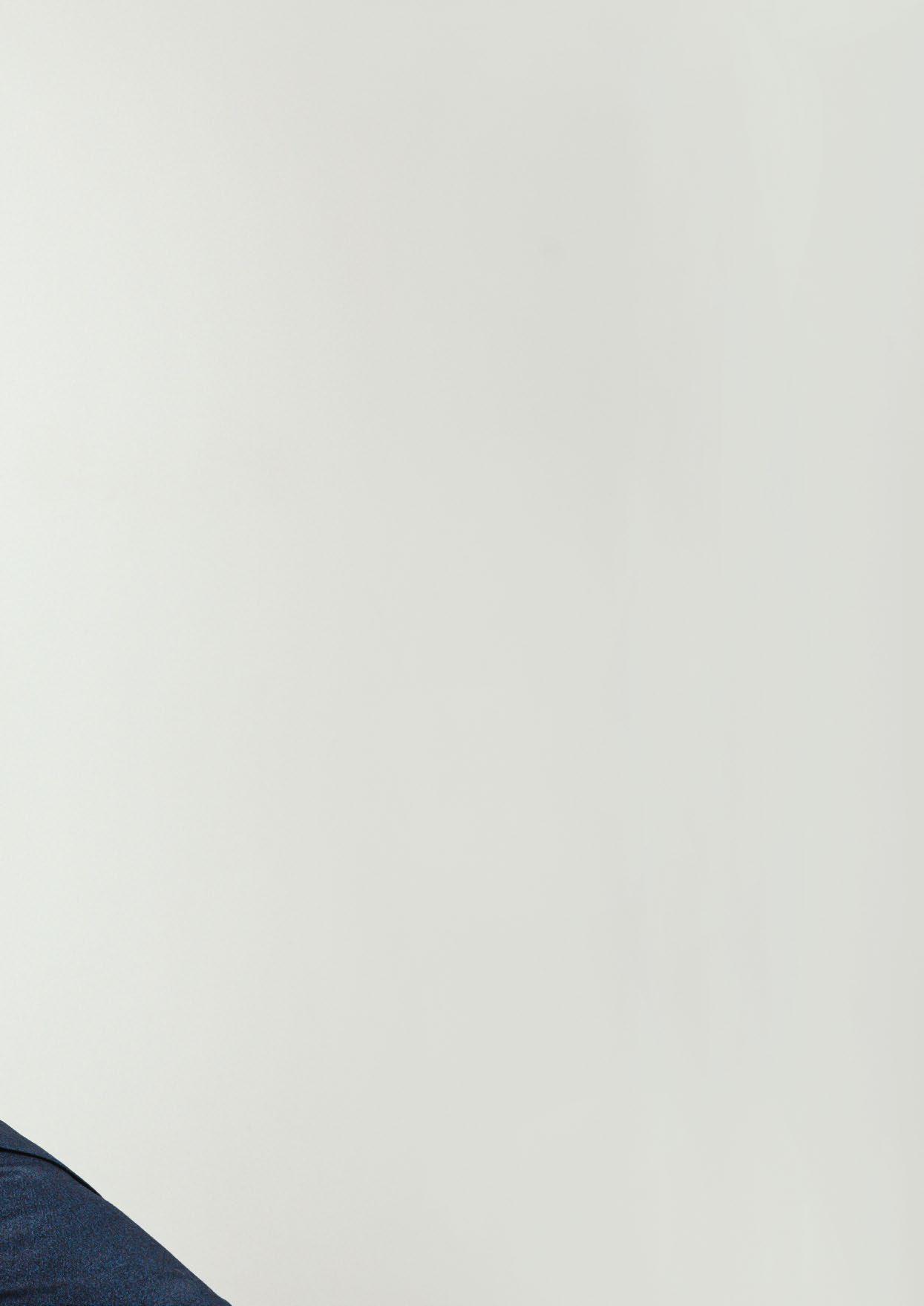
Fighting for the Perfect Balance
COVER
N o 20 - NEXT MAGAZINE - 9
DAVID YATOM, SOFT2BET
The iGaming industry is often called upon to respond to both regulatory and technological challenges and opportunities. As Soft2Bet's General Counsel, David Yatom shares his extensive experience of tackling such challenges headon, with an approach that is both conscientious and bold, but which ultimately pitches a balanced approach as the best way forward
In the world of iGaming, striking the correct balance is a fulltime job for many operators. The field itself is under constant scrutiny, and though this is of course justified in principle and desired by the operators who are keen to work in an ethically sound framework and over a healthy span of business years, it is also fraught with challenges. Because at the face of it, the needs of a dynamic and competitive market and that of regulators keen to stake a claim on the industry, may not be directly compatible.
David Yatom, Soft2Bet's General Counsel, knows this all too well. With a background steeped in online gambling, commercial, regulation and privacy and data protection, Yatom brings a distinctive perspective to his role, overseeing legal, regulatory, and compliance matters for the casino and sportsbook platform provider. It’s an experience that will also be very much on display during the Next.io Valletta 2024 conference, where Yatom will be given a platform to share his perspective and speak about regulation in iGaming.
“Regulatory landscapes in industries like iGaming are intricate and constantly shifting,” Yatom says. “From my experience, I’ve seen the consequences of regulatory absence and excess firsthand.”
Reflecting on the evolution of regulatory frameworks, Yatom highlights the pivotal role that regulations play in shaping the online gambling industry. “Regulations provide a framework for operators to operate within,” he explains, “but they must strike a delicate balance between ensuring player safety and fostering innovation”.
Yatom's journey into this field began with a focus on privacy and data protection, where he witnessed the chaos that ensued when regulations were lacking - he creates an analogy between the early days of privacy and data protection to that of early or nonexistent online gambling regulation. “Initially, there was chaos due to the absence of regulations, allowing operators to function without restrictions,” he recounts. “This lack of oversight affected players’ trust and safety.”
Yet, over time, Yatom observed a swing in the opposite direction. “Over time, regulators began to address this, but the pendulum swung too far, burdening operators with excessive regulations,” he notes. “This overregulation stifles innovation and drives regulated operators away, leaving a vacuum filled by unregulated ones.”
Unregulated operators, in this context, refers to those who would rather opt for off-shore license and platform that allows them, to some extent, to conduct their business outside of the regulatory framework, thus amassing a large chunk of the market share and pushing smaller players out who would otherwise want to “play by the book”.
“For me, the solution lies in finding a delicate equilibrium,” Yatom says. “Regulations should provide a framework for operators to self-regulate within reasonable boundaries. This approach fosters competition based on integrity and player trust rather than heavy-handed external control.”
Italy serves as a pertinent case study in understanding the ramifications of regulatory imbalance, as Yatom illustrates. “Italy had the opportunity for operators to obtain licences and operate within a regulatory framework,” he recounts. “However, over time, regulatory tightening ensued, leading to increased fees and restrictions.” Yatom goes on to describe how the upcoming regulation in Italy will created a situation where operators in will be faced with massive licensing costs -- amounting to the millions -- while also being barred from promoting their business online.
“So it’s not even: ‘it’ll cost you this much to run your business’. It’s also that: ‘you can only operate at the very far end of the street, where nobody will be able to see you, and in some cases with no ability to promote your business or offer sales or promotions’. So when you have a situation like this, it’s no surprise that you’ll find operators who either close up shop, or opt for an unregulated environment where they effectively are not bound by the same restrictions.”
For this reason, Yatom believes that it is crucial to have regulatory frameworks that support operators of all sizes, fostering healthy competition and consumer choice and in order to effectively encourage more regulated operators in the market and not the vis versa.
Asked why this mismatch between regulation and market realities tends to come to the fore, Yatom claims that it ultimately comes down to differing priorities. “You see the difference when, for example, certain regulators decide to really have a genuine conversation with the industry… in those cases, a lot of them
10 - NEXT MAGAZINE - N o 20 COVER

N o 20 - NEXT MAGAZINE - 11 COVER

will come to understand why the industry operates the way it does, and why a ‘one-size-fits-all’ approach is not the right way forward,” Yatom says, observing how regulators can actually opt for more targeted approaches that could be more beneficial to both operators and players in the long run.
“A regulator isn’t just there to issue restrictions -- they can do a lot more and still fulfil their mandate and be effective. For example, they can create industry guidelines. They can extend opportunities for operators to self-regulate themselevs through creation of broad guidlines (similar to GDPR), to conduct ad hoc investigations only in specific cases raising material concern and where there is credible suspicion of wrongdoing on the part of certain operators.” The issue, however, is somewhat of a ‘political’ one for Yatom -- albeit it being largely down to politics with a small ‘p’. “There’s the element of wanting to show that you’re ‘doing something’ to address an issue in a very obvious way…” Of course, this means that any nuance flies out of the window.
Indeed, the consequences of regulatory imbalance are palpable. “While large operators may weather the storm, smaller ones often find themselves priced out of the market, leading to a consolidation of power among industry giants,” Yatom says. Ultimately, this can lead to unfavourable industry oligapoly, or worse so, monopolies, to germinate, which means that at the end of the day, it’s the players who lose out!
“The impact of regulatory decisions extends to users as well. When only a few large operators dominate a market, it can lead to monopolistic practices that result in worse offerings for players,” Yatom says, adding that conversely, increased competition encourages operators to improve their offerings to attract players through more favorable offering, to encourage innovation and to ultimately benefiting consumers.
So far, our conversation has been a fascinating deep-dive into the dynamics of the wider iGaming industry when it comes to matters related to regulation, with Yatom a knowledgeable and articulate guide through these sometimes winding waters. However, all of this begs this question: how does Soft2Bet in particular confront these challenges?
“We stay ahead of regulations by being proactive,” Yatom says. “As both a B2C and B2B operator, we have a robust development team dedicated to keeping our platform compliant and adaptable.
We've designed our system to easily accommodate changes in regulations, anticipating potential shifts or additional restrictions.” Yatom reassures that Soft2Bet’s compliance team meticulously analyses requirements, ensuring all licensing criteria are met. Meanwhile, their technical and development teams collaborate closely to understand current and future regulatory needs. “This allows us to tailor our offerings accordingly, ensuring flexibility and ease of adjustment,” he adds.
“While regulators may introduce new requirements, our adaptable system ensures we can quickly respond and penetrate new markets. Our goal is to stay ahead of the game and maintain compliance, regardless of evolving regulatory landscapes.”
And one way to certainly remain ahead of the game is to integrate AI solutions into the mix.
“We utilise AI tools in various aspects of our operations, including customer support and Responsible Gambling. These tools help manage the large volume of inquiries and identify problematic players or behaviours, such as collusion,” he says.
Quick to stress that his legal background doesn’t allow him to comment on the technical specifics of AI, Yatom is also keen to once again emphasise the importance of maintaining a balanced approach even when dealing with AI.
“As a lawyer, I always consider both extremes in any situation. Relying solely on AI or exclusively on human resources can lead to inefficiencies or missed opportunities. The key is finding that middle ground where automation enhances processes allowing to human touch to be utitlized in specific cases and in a more efficient manner,” Yatom says.
He adds that while some companies may prioritise financial gains and opt for more AI-driven approaches, he believes it’s essential to maintain a balanced approach. “It’s not about choosing one over the other, but rather integrating AI where it adds value while preserving the human element.”
And so we see how balance really does remain the key reference point for Yatom… certainly when it comes to the fraught issues of regulation and AI. Such a sober mindset can only be a great asset to Soft2Bet, as it continues to navigate through a dynamic industry which may reward the bold in the short term, but which has long-term gains on offer for those who stay the course with a level-headed approach.
N o 20 - NEXT MAGAZINE - 13 COVER
MODERN MARKETING IN THE AGE OF SOCIAL MEDIA
Words by Nicolà Abela Garrett
When it comes to brand building in the iGaming industry, social media is very revealing as to whose message is getting heard loud and clear, and who’s just churning out white noise. One company that delivers effective and successful brand marketing is White Label Casinos, a platform that has built some of the most lucrative online casinos and upped their SEO game with the clever use of their brand name. With a serious engagement track record from their arresting marketing social content and PR stunts, we wanted to learn more from CEO Phil Pearson about the company’s unique approach and find out what compels them to get the brand out there.
The vibe we’re getting here is chilled. Our conversation with Phil Pearson is punctuated with good humour, banter and a relaxed disposition towards the topic of brand building. It’s a healthy attitude, undoubtedly. But nevertheless, the business of casino building requires an impactful reach-out to generate leads and heighten brand awareness, so how does White Label Casinos go about it?
“Our approach to marketing is a bit different, you could say. On the whole, we don’t like to adhere to industry ‘norms’. Of course, we like to leverage a number of social media platforms, with LinkedIn being our main platform. We have excellent SEO, and as a result of our efforts from the start of White Label Casinos, our average number of inquiries has gone up by about 6,000%. We use LinkedIn a lot for professional networking, and although we have Instagram and Facebook, we’ve found that being the first in the B2B space uploading our take on TikTok-style, shortform videos onto LinkedIn is incredibly effective. Not to mention our memes. It’s not something you really see in our industry, so this content drives a lot of our audience to our site, boosts our following and our click-through rates are very positive as a result.
We take content that people engage with on their personal feeds and share it on a professional channel. It makes for content that people actually want to consume rather than the traditional B2B stance where it’s only about product and company. We wanted a tone that really stands out and makes people laugh too. We’ve gotten comments like ‘this post has made my day’ and ‘finally something on LinkedIn that’s made me laugh out loud.’
That’s certainly an interesting way of merging these two platforms together, but could it be a tried and tested formula for the iGaming industry? Surely there’s a diversity of audiences that need to be catered for. “We have four separate target audiences – existing clients, potential clients, third parties we work with and then our providers. The content we create gets a lot of traction across this spectrum, and LinkedIn has overall become a space where people mainly communicate company or professional updates. We stand out here because our scope is to avoid only posting generic company updates. We’d rather post about a broad spectrum of what goes on at White Label Casinos - also showing our audience the people behind the solutions. It compels people to ask questions and to get to know us better. Cultivating trust with our clients starts from before the contract is signed - we believe our honest and transparent presence online builds trust organically. Not to mention what it’s done for recruitment. We’ve completely cut our recruitment costs as a result of our online presence. People see what it’s really like to work at White Label Casinos, and we attract the right people that fit our culture without the need for agencies.
Some might be forgiven for worrying about appearing unprofessional in an environment as rigid as LinkedIn, but
Phil’s all for pushing the envelope, though within reason. “We like to get involved with who’s engaging with us, and we keep it edgy enough that it’s fun for people to follow. By straying from corporate jargon, we actually garner more trust from people who are observing our feed. We toe the line between professional and fun content and we’re lucky to have a workforce of experts and thought leaders, who happen to have great personalities as well. It’s a great mix.
“Sometimes we swear, poke fun at the industry and ourselves, and more content that would make hyper-corporate companies faint. It’s where we’re comfortable- as often we post what people are already thinking but might be too afraid to say. Like calling out bullsh*t industry awards- one of our biggest gripes.
“Our clients see how we do things differently in terms of standing out in a saturated market, and we work closely together when it comes to their own casinos. We all know that competition is rife and having a unique edge can help with acquiring new players. That's why our flexible frontend options set up our clients for success when building their dream casinos.”
Speaking of impactful marketing, it’s no secret that White Label Casinos have leveraged their presence as a company to run indispensable campaigns to help dog shelters such as the MSPCA.
“Our work with the local community, in particular the MSPCA throughout 2023, picked up a lot of engagement and brought us traction as a brand, however for us it's not about that. We get asked this a lot! We leverage our platform, sure. But the goal is always about raising as much awareness for the cause as we can, raising vital funds, and inspiring others to do the same. It's made that bit easier because of all the dog and cat lovers out there!
“We wanted to generate more corporate responsibility from our side, so, we’re trying to create something positive for the country we're operating in. As a company, everyone pitches in, and we’re also a pet-friendly environment that welcomes well-behaved animals during our office hours.”
Animal welfare is certainly not a marketing stunt for White Label Casinos; there’s genuine care here for the message they want to get across. Their charitable efforts also extend to endeavours such as collaborating with For A Cause events, who run padel tournaments, corporate Olympics and lots more, and have dedicated all funds raised this year towards White Label Casinos’ charity partner for 2024 and 2025, St Gerard’s School Trust, who help gifted but displaced children. “We're putting our money where our mouth is in the charitable sense.”
We’ve mostly spoken about White Label Casinos’ social media input, but for those who know the team will also be aware of their out-of-home marketing efforts. “Well, we have been known to carry out a few stunts in the past! During last year’s SiGMA, we sent two orange-clad White Label Casinos minionsdressed head to toe in company branding with some cheeky and
14 - NEXT MAGAZINE - N o 20
BUSINESS
PHIL PEARSON

unorthodox messaging. We joked about hiring footballers who had been banned for irresponsible gambling, or that we're better than people's mum’s (no offence to all the mums out there), as well as making a little joke about our competitors. We’d just leave these on their stand and run away! We also like creating ironic videos. In fact, we’re in the process of launching a parody song. It’s a professionally recorded cover of a famous Billy Joel song, but we rewrote it and changed the lyrics to be about iGaming… It might ruffle a few feathers but we’re sure people will see the funny side.
“We don’t mind getting on board with social trends either. Our marketing team has full autonomy over what they can produce. If we like it, we'll use it. With trends, time is of the essence, so we don’t get involved with 20 rounds of approvals. If it’s trending and we think it’s a fit, you’ll see it on our channels right away.”
As many can attest, these are some wonderful and innovative ideas that have kept things colourful for White Label Casinos and the industry in general. But how does one measure the effectiveness of all this, and what metrics are used to measure brand-building recognition?
“Brand awareness is always the more difficult tracker, we use various tools in the team for this, but really what we're more invested in is delivering a great product, creating great content that our audiences enjoy, and focusing on where we're heading as a company morally and operationally. We’ve found that getting these things across is what really engages people who want to work with us. Plus, it’s always a treat to hear ‘was that you guys doing the Hot Ones challenge on LinkedIn?’ when we attend events. And no, it wasn’t pleasant- but worth it!
N o 20 - NEXT MAGAZINE - 15
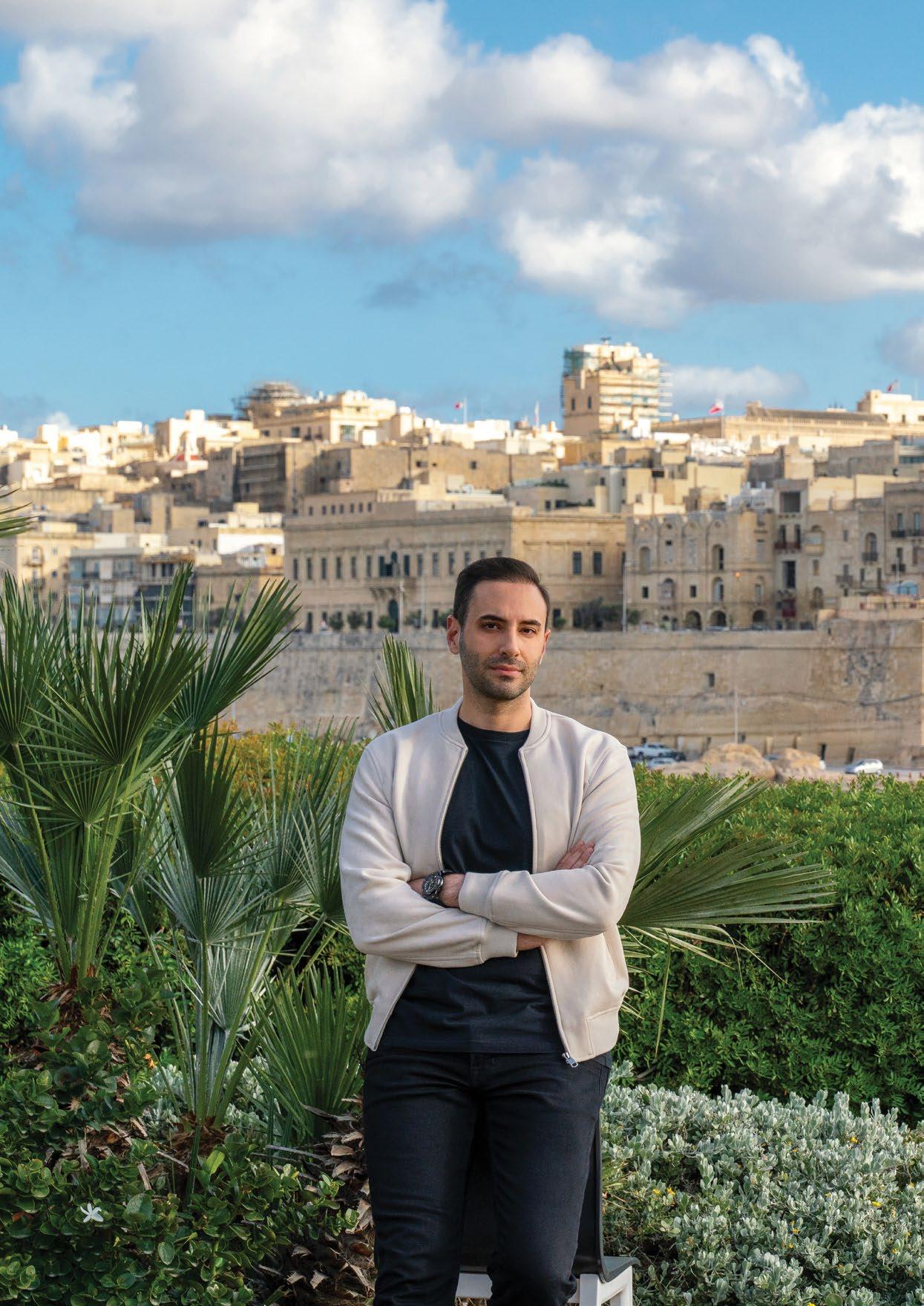

THE RETENTION FORMULA WITH
PEDRAM PADIDAR
Photography by Julia Boikova
Pedram Padidar has somewhat of an understanding about customer engagement. That’s his particular skill set, as the Chief Operating Officer at Enteractive, the reactivation company he has helped lead to new highs in 2024. For the last fifteen years, it’s been his business to know your customers and help you build more long-lasting relationships with them. We talk about one-toones with players, how the retention sector has matured, and why caring how the players are doing is only half the story.
No, Pedram doesn’t talk directly to your customers, not like the early days when he joined CEO Mikael Hansson’s fledgling reactivation start-up back in May 2009. Back then, it was push button dialling and one-to-one conversations with lapsed online poker players, with everyone on deck, all making calls. Great times! And a great idea, which has flourished and grown to almost 200 staff, speaking with sports betting and iGaming players across global markets. The conversations remain the same. One-to-one. Just many, many more of them!
“Retention today has become much more important than it used to be back then”, Pedram points out. “I've been here since day one and retention, when I started, was irrelevant.”
Considering that, now, in 2024, Enteractive interacts with thousands of players each day from more than 100 brands, on behalf of 40 leading operators in the global industry, it’s clear that retention is no longer seen as “irrelevant” by the sector.
For Enteractive, this shift in focus has guided the company's longterm growth trajectory towards finding efficient ways to make retention pay dividends. By understanding why players churn and inviting them to rejoin the fun, as well as always innovating with technology to optimise the human touch. “The most important thing for us”, Pedram explains, “constantly, continuously, and at all times, is to deliver value. If we deliver value to our clients, we know that they’ll be happy, and if they’re happy, we’re happy. I think that all goes hand in hand. It’s a win for all.”
The company has many happy clients. Betsson Group, the most long-standing, has trusted Enteractive with reactivating their players for more than twelve years. We could also mention Entain, Kindred, Kaizen, and countless other global players. This client loyalty is no doubt due to the repeatable success of Enteractive’s approach. Native-speakers for each market delivering real-time cultural relevance in sports betting and iGaming that neither A.I. nor algorithms can offer, and a pricing structure that only pays on success.
Now, more recent clients include large U.S. operators, reflecting the company’s great strides made across the pond since Mikael Hansson migrated to set up the Miami office two years ago."The U.S. is all about sports,” affirms Pedram. “It doesn't matter where you go in the U.S. Wherever you set foot, it’s all about sports. Go to any bar, any regular bar in the U.S., and there’s fifty screens constantly streaming sports or TV shows talking about sports."
The U.S. is the company’s main focus outside of Europe, while Latam and Asia are both established markets growing steadily.
“I think the U.S. obviously speaks for itself with it regulating more and more states, and we're seeing positive developments in LATAM with more countries also regulating, and online becoming more accessible worldwide. It's a perfect mix for Enteractive, giving us more markets to conquer with our clients, but it's also fifteen years of work and dedication.”
“When I look back at our growth, and not just the accelerated growth we’ve seen in the last two years,” Pedram clarifies, “but across our whole existence, one thing that has helped our growth has been working with our fantastic partners. They see the same opportunities as we do to build better relationships with the players, and, as I said before, their success is our success.”
“These days many of our new clients come through recommendations, word of mouth from existing clients, or people moving to new companies and bringing us across because they know we deliver additional revenues with no risk,” he continues. “The industry is very small, and I think we've established ourselves, and we've also now been around for a long period of time. We let our numbers speak for themselves and show the impact that our services can have.”
At the heart of all this is a deep understanding of what the players need, what they respond best to. And that’s something that’s rooted in the culture of the company. While Enteractive helps operators ensure their players feel heard and cared for, the delivery of these values is echoed in the employee experience at the company, which took home EGR’s Employer of the Year award earlier this year. The enduring theme to Enteractive is making sure everyone is happy and enjoying the benefits - whether player, partner, or employee. As Enteractive’s success confirms, for those lapsed or stalled players, it’s this personal touch, the human touch, that really makes the difference. They might not respond to emails or digital outreach, but a real conversation with a real person? It’s the winning formula, it seems.
Operators are always exploring strategies to outperform their rivals by increasing player engagement, but Pedram also points to other forms of entertainment vying for audience eyes. "You're not just competing with other gaming operators. You're competing for people's time. Time is the most valuable commodity, and once someone chooses to spend their time with your brand, it really matters. It must be valued, treasured.” Bearing that in mind, longevity is the key, according to Pedram, for Enteractive’s ongoing success story, but most of all for the consistent ROI delivered by the company for operators’ bottom line revenues.
“Our philosophy has always been about the long term. The same goes for the customers. You have to have a long term view with your customers. And once you're looking at the long term, when you have the right perspective to look at solving player problems, delivering top-notch entertainment, and becoming the go to destination for players, the LTV and the value of the customers will increase as their loyalty increases.”
In 2024, everyone is looking at the ways in which A.I. can enhance business processes, and in the retention space this can help inform more about player trends. But while A.I. and other technologies will continue to drive innovation across the sector, Pedram believes attention to customer needs still remains to be the overriding factor in retention and reactivation.
“I don't think anyone has missed out on the A.I. revolution going on, but we're still at very, very early stages there. AI serves as a great possibility and has enabled us to become more efficient, improve processes, and understand player sentiments; however, the main focus for us is still to provide customers with personalized one-to-one interactions with brands. By putting
18 - NEXT MAGAZINE - N o 20 BUSINESS

in time listening to and communicating with your customers, understanding what they're looking for and really putting in that effort, that’s something the players really appreciate, especially in today's fast paced world where everything is automated and A.I. and chatbots.” The message is clear - AI offers some incredible benefits, but the human element can’t be replaced that easily.
And what does the future hold for Pedram and Enteractive?
“We've enjoyed significant growth in many markets, but we’re still just scratching the surface. For me, there remains much to achieve. That’s something that we are constantly working towards, looking to become an even bigger global partner for operators, focusing
on player engagement and revenue retention, and continually striving to bring more value to our partners."
For their operator clients, just like the thousands of players that Enteractive speaks to daily, it’s this dedication to delivering increased value that sets the company apart and why it continues to be a growing success story. It must be said, Enteractive is somewhat unique in the sector - everyone likes them, what they do and the benefits it brings, it’s a win-win for all involved. But the thing that’s most special is that it’s rooted in a value that sometimes feels lost in today’s fast-paced digital world - humanity.
N o 20 - NEXT MAGAZINE - 19 BUSINESS
WORK HARD. PLAY KIND

20 - NEXT MAGAZINE - N o 20
BUSINESS
with Josefine Hellström
Words by Nicolà Abela Garrett & Julia Boikova | Photography by Julia Boikova
One cannot underestimate the impact of an indelible workplace. Despite people now job-hopping more than ever in recorded history, great working environments - the ones that, above all else, celebrate what it is to be human – always leave a mark as they water the roots of one’s career growth. Creating a memorable and enriching environment is at the heart of ChristchurchCasino.com, the online division of New Zealand’s land-based Christchurch Casino, led by General Manager Josefine Hellström.
For some, Josefine Hellström needs no introduction. Previously Head of Casino at Casumo with seven years in several roles there under her belt, there’s possibly no one better to discuss learning the ropes with than her. We debate the pedagogies of leadership, specifically whether it’s better to be taught it rather than learning it via trial and error. “Being thrown in at the deep end is something that works for me, and I’ve been lucky enough to have fantastic mentors that showed me the path, inspiring me to become the leader that I am today.”
But not all proverbial Aristotles are made equally, surely. There’s teaching, and then there’s guidance. Josefine asserts, “If I had to be completely honest, when it comes to being responsible for a team, what did help me was having coaches around, rather than mentors or leaders, who asked me the right questions without giving me the answers.” That is indeed a refreshing approach, and Josefine believes, aside from the power of some good podcasts, that “with the right personality and the right attitude, you can learn anything. You just need the right mindset.”
But as the conversation flows, it’s evident that she places a greater emphasis on the humanity that comes with leadership and management, rather than their basic executions. As a small startup in Malta, ChristchurchCasino.com draws heavily from the ethos of its land-based mother company in New Zealand. “The online gaming industry tends to have a ‘work hard, play hard’ ethos, but one of the things that really spoke to me is this company’s essence of looking out for each other, and fostering an environment that is easy-going, genuine and trustworthy… It’s the Kiwi attitude of being chill and family-oriented – which is what their land-based casino is. So, we’ve taken all of that and applied it to our online casino division.”
Josefine’s fondness and admiration for Christchurch Casino’s approach is palpable, and it’s apparent that, as a leader, she’s taken these values to heart and fully implemented them here in Malta. “Their approach resonated well with my own values. It was inspiring to see a casino prioritise the wellness of their players and employees over short-term business gains. This shift in perspective reminded me of the importance of putting people first, even in challenging environments.”
This angle has clearly done everyone at ChristchurchCasino.com the world of good. There’s special care given to the team that largely works remotely, as well as a deep sense of trust. Despite the distance, they make it a point to check in on everyone daily, not just as a professional courtesy, but to find ways of supporting one another. It’s the little things that people will remember for life, such as giving two new dads in the team the flexibility they need to adjust to parenthood and work patterns. “At the end of the day, we’ll hire you not just because you’re an excellent human being who’s awesome at what you do, but also because you’re a responsible adult we can rely on.”
As we’re on the subject, we turn to our chosen buzzword for this conversation, and Josefine lets out an emphatic ‘wow’ when we
ask her about empathy in the workplace. She’s passionate in her response, not because she wasn’t expecting the question, but because she cannot stress how crucial it is in the environment she leads. “Look, I want to get to know the people I work with, and I want them to get to know me. The more I share, the more I’ll win their trust to reciprocate that… We all mess up from time to time, but a safe space that allows us to make mistakes as well as reflect on how we can fix it for next time gets people invested in their own growth, and that benefits all of us.”
Our minds drift to places we’ve all been at some point – jobs where we had to focus our energies on covering up discrepancies, rather than coming up with solutions collectively. It’s clear that ChristchurchCasino.com is a human-centred company that’s more interested in having an emotionally intelligent workforce. “If any one of us is in a situation where we need help, everyone in the team will help out… all you have to do is ask.”
Something else we wanted to touch upon with Josefine is the pouring from empty cups and the burnout it brings with it. “It’s unrealistic to expect everyone to operate at peak performance all the time. We all have our ups and downs. Instead, we should help each other recognise when we need to pause, reassess and recharge so that we can return stronger. So, we come back to that trust we’ve been talking about, where we’re comfortable with expressing our need to step away from the workload from time to time, and that it is OK to do so”
Speaking of keeping our emotional health in check, our conversation then turns to how we regulate these in the workplace. “I don’t have a poker face! I sometimes wish I did, because I’d fare better at the poker table, but I also believe this humanises me, and makes me approachable… Sometimes, we just have to suck it up and get things done, but we find it’s much easier to get through it when you know you don’t have to hide who you are from your team.”
Lastly, we highlight the importance of hiring teams with mixed personalities. “Definitely!” she says with gusto. "What unites us as a team is our shared passion for learning and growing - that’s our collective mindset. Our mix of personalities challenges us and pushes us out of our comfort zones in the best way possible. This variety is essential for fostering curiosity where we can challenge things without an ego. If we all had the same personalities, we’d all end up with the same answers… Each member of my team has contributed to my growth by asking questions and demonstrating a genuine curiosity to learn more."
"My job is to ultimately ensure that the beautiful people that I work with have the right tools and direction. I am here to guide them, but I want them to venture out and come back with their own input. If I had to simply give instructions, none of us are going to grow, because they won’t be challenged, and we won’t be able to learn from their new ideas. My team enriches me… It helps you get outside your usual circle of thinking. Leave your ego at the door, and we’ll start colouring outside of the lines."
N o 20 - NEXT MAGAZINE - 21
BUSINESS
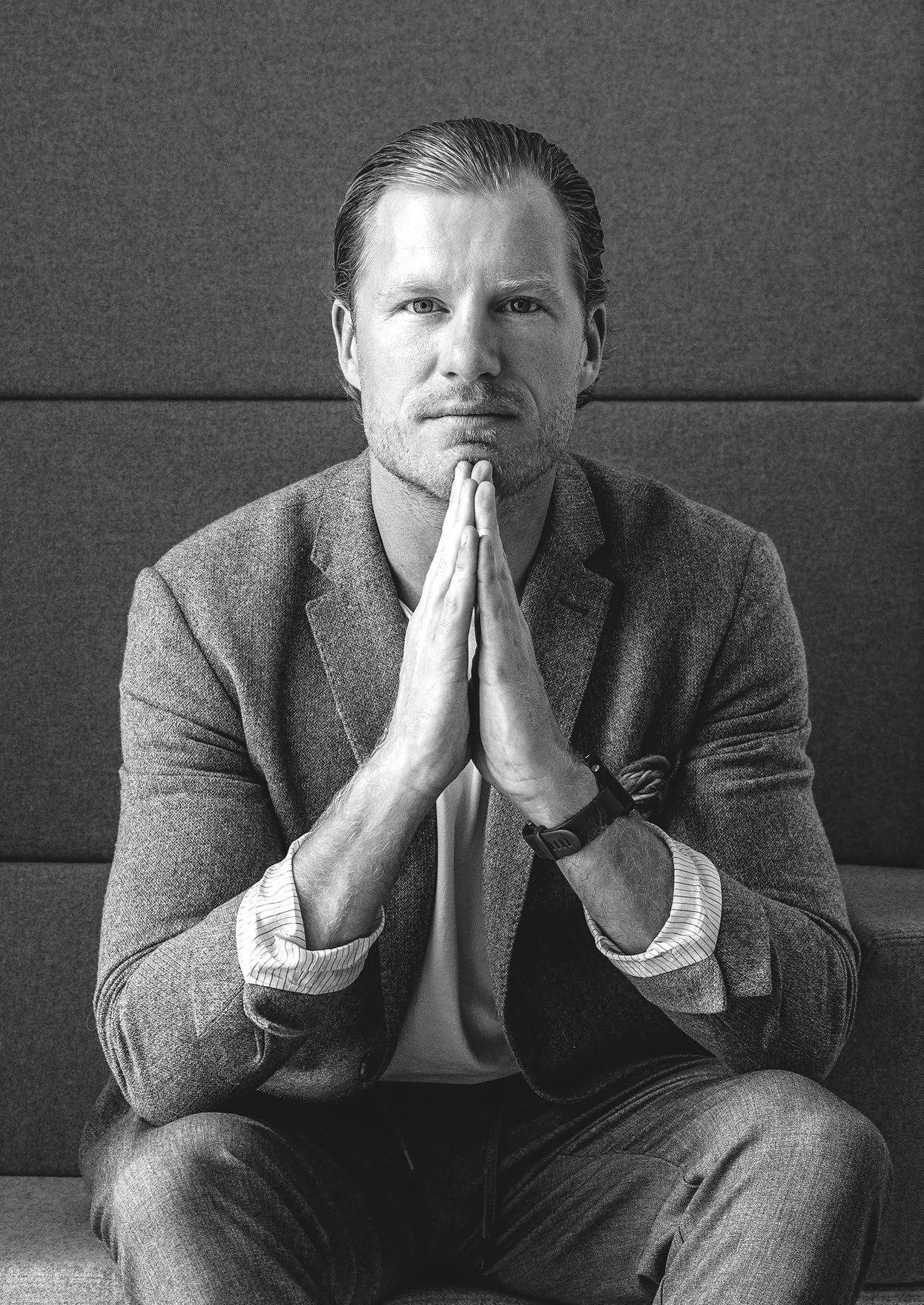
GIANTS IN CONFERENCE
Elite Retreat & NEXT.io Valletta
Words by Nicolà Abela Garrett | Photography by Julia Boikova
There’s no denying that iGaming conferences have become an indispensable component in the industry’s nervous system. They’re what drive forward the brightest ideas and present the most lucrative opportunities, but sometimes, even the most prestigious of these events can feel a little oversaturated, not to mention claustrophobic. Of course, it takes entrepreneurs like Pierre Lindh, co-founder and managing director of NEXT.io, to come up with a sophisticated solution… and few endeavours have proven to be as sophisticated as his latest venture – Elite Retreat. We sat down to learn more about this esteemed project, and a few updates on NEXT.io.
Come October and November, two consecutive conglomerates will assemble at the Cap St Georges Hotel & Resort in Cyprus and Secrets Maroma Beach Riviera in Cancún. Naturally, each of these retreats will have their own iGaming objective, tailored for their select group of industry players. While Elite Retreat in Cyprus will be targeting emerging markets around the world, its equivalent in Cancún will be focusing on the Latin American market. An innovative vision indeed, but what had prompted this endeavour?
“The idea behind Elite Retreat is to create something that sets itself apart from other conferences that more or less do the same thing. Rather than focusing on how many people we can bring in, Elite Retreat is a conference that’s designed for those who are tired of overcrowded spaces (such as ICE London) and would much rather make valuable and meaningful connections with the right people, rather than the most.”
Admittedly, this approach stands in stark contrast to the numbers that Pierre’s other baby, NEXT.io, draws in. So, what sort of figures are we looking at for Elite Retreat? “We have fifty tickets for our partners, and fifty tickets for their customers. If you want to be a partner, you have to pay for your attendance. That’s how we make our money and cover our expenses. However, when it comes to their customers, these tickets are entirely free, and we even pay for their flights and accommodation… We wanted to be highly selective with our invitations, because it’s what will make or break the concept. We had a lot of conversations with our partners before committing to this product. By listening to their needs, we formulated an all-inclusive retreat at two world-class resorts, entirely paid for by us. It’s been incredibly well-received so far.”
Pierre and his team are the architects behind this concept, one that presents itself as a safe space for the very best iGaming delegates to gather and make magic. And, unlike the impersonal and forgettable back-to-back quick-fire meetings at other conferences (which could’ve easily been a Zoom call), the select few will get the chance to mingle and merge ideas at a more leisurely pace, far from the stresses of everyday business. And ‘leisurely’ is the operative word here.
“Although we’ll have traditional panels and roundtables, we’re creating a far more intimate experience, helping people open up in conversation. Delegates will be able to choose from a number of activities – some are adventurous, some are more relaxed, while others cater to everyone’s tastes. From golfing, skiing or parachuting, to wine tasting… They’ll be at a world-class resort, offering plenty of high-end recreation. We want them to be able to socialise and have fun on their own terms, which is why we’ve left the calendar a little open for them to make their own plans.” Truly, it sounds idyllic. But is there a guarantee that business will
not be overshadowed by too much pleasure? “It’s not always about getting straight to business. Oftentimes, it’s about getting to know each other and building trust over an extended period of time in a relaxed environment. And when you form that trust, you’re much more willing to conduct business together. That’s our whole raison d’être behind Elite Retreat.”
What also adds to the exclusivity of these events is their implementation of Chatham House rules, guaranteeing a collectively private conversation which will remain within those luxurious walls. “The most interesting discussions will happen without any coverage or cameras, and our guests will be signing NDAs to guarantee that nothing gets leaked. You’ll also notice that we haven’t highly broadcast these events, in order to sustain an element of discretion for the big players involved.”
With that in mind, the question on everybody’s lips is: who’s made the cut? “We’re very excited that Xace is the headline partner for Cyprus. They’re an online bank that works with iGaming operators on a global scale. Meanwhile, SOFTSWISS are the headliners for Cancún, and as one of the biggest casino platform companies out there, they’ll be in the presence of leaders within the iGaming world of Latin America. I can also confirm the attendance of two of the most influential people in the industry for both events - Tim Heath (General Partner at YOLO Investments) and Robin Eirik Reed (Managing Partner at HappyHour). That’s the level of prestige that we’re aiming for.”
This is some seriously exciting stuff that’s sure to be a game changer in the world of iGaming. But before we part ways, we can’t leave without asking for a NEXT: Valletta Summit roundup. This is the event’s fifth edition, and as is evident, everything seems to be on a much grander scale. Notably, Pierre and the team - through a collaboration with Play’n Go - have managed to procure Formula One drivers Richard Kevin Magnussen and Nico Hulkenberg from the HAAS F1 team as keynote figures for the event. They’ll also be interviewed by prominent F1 reporter Natalie Pinkham.
“This is NEXT: Valletta’s coming-out year with an attendance of 5000, and it’s officially the Mediterranean Conference Centre’s biggest event in the last fifty years. For the first time ever, the rooftop terrace is open during the day, while the La Valette Hall has been transformed into the Unconference Space - a pleasure ground with atmospheric lighting, an arcade, and an exhibition space. It also doubles up as our after-conference rave cave! Our aim with this edition is to cater for everybody in the industry, whether you’re a young affiliate manager who’s looking to have a good time, or a senior CEO who’s in search of serious meetings and thought leadership.”
N o 20 - NEXT MAGAZINE - 23
GAMING
IN CONVERSATION WITH
TIM HEATH
IGAMING, CRYPTO, INVESTMENT PHILOSOPHY, START-UPS, AND AI

Tim Heath is GP of Yolo Investments, a leading technology venture capital firm, and the co-founder of Yolo Group, a company operating leading crypto gaming brands including Bitcasino.io and Sportsbet.io. The latter has secured high-profile sponsorships with the likes of Newcastle United and Southampton FC.
Since founding Yolo Investments, the firm has rapidly grown to the point where it now supports more than 70 businesses across five funds, with assets under management of more than $500 million.
Tim recently sat down with Pierre Lindh, co-founder of iGaming NEXT, for an in-depth conversation that spanned gaming, investments, AI and more.
24 - NEXT MAGAZINE - N o 20
BUSINESS
Pierre Lindh: What are some of the interesting and major trends in the iGaming industry that you are seeing right now?
Tim Heath: Looking back over the last five years, I was a very strong advocate for how I saw cryptocurrency becoming a significant player in the industry. For me, these are the perfect digital gaming chips.
If we look at 2024 compared to 2017, there have been unbelievably strong winds of change throughout the industry, where people realised just how simple crypto is from both a consumer perspective and a payment service provider's perspective. It’s amazing how many sites have really excelled in taking crypto. It has shaped where we are at the moment.
As a guess, I'd say 25% to 30% of global iGaming turnover is now crypto, and that’s rapidly accelerated from where we were seven years ago. However, it’s a really important point to recognise that we've still got a long way to go in reaching full mass adoption. We need to realise there is not going to be crypto adoption for every single person in the world. But certainly, there's a lot more people aware of crypto, using crypto and depositing and withdrawing crypto than there were five to seven years ago.
A lot of focus in the industry now is on removing friction and placing simplicity at the heart of streamlining money movement within iGaming. What are your thoughts on that?
I agree that simplicity should be at the heart of all things gaming. For example, sportsbooks know what my bet history is and what my future bets will most likely look like, so why not reduce the friction to make it easy for me to take part. Then I can focus on enjoying the football and have the emotional enjoyment of the football and gaming combined - win, lose or draw.
The emotions that we feel whilst taking part is what drives the entertainment and the satisfaction from sports betting. There will necessarily be some friction in terms of getting the money in and authenticating it and doing KYC – which has to be done in today's day and age – but why not make that as simple as possible so we can focus our emotions on taking part in the game. That should be something all sportsbooks strive towards.
How do you feel about integrating AI into the iGaming ecosystem at the moment?
It’s really not that complicated. Let’s start off with the basics. For example, sportsbooks should ask themselves ‘what does this player like to bet on and how can we almost prefill their sport bet slip and perhaps push them to that Thursday night 7 p.m. game?’ For example, for me they might say ‘Hey Tim don't forget we've prepared your Arsenal and Newcastle bet for the weekend, good luck!’ Most players do it recreationally and follow certain teams or sports so it’s not that complicated. I think we sometimes get bogged down with AI or get caught up in moonshots, which is important, but it should also get the basics right first of all. For our purposes this means amplifying the customer experience.
AI is simply about understanding player trends and desires and not necessarily trying to change their habitual routines. For example, if someone's habitually playing a slot, then leave them there! Don't try to change that. You're already satisfying their
emotions and their endorphins and they're playing the game they want to, so you don't need to change their style.
AI should be used to make it easier for the player to find what they actually enjoy, and we've all got enough data to work out what that is. Do this and you’ll double GGR [Gross Gaming Revenue] overnight.
How do you generally find investment opportunities that you end up investing in?
At Yolo Group, we’ve got a very specific set of ideas that we believe need to be achieved and we are going out actively searching for things to solve those problems. It’s all about solving problems and addressing gaps in industries. We find that the network of people we're working with will often come to us and say ‘look one of my friends (or one of my business partners) is doing this and we think it could fit into your ecosystem really well’. Then it's worth a chat. If it is a trusted contact who is bringing it in, it means it's almost had that first level of vetting. Now there's no guarantee it's going to work or it's going to be good but we'll have a good look through it.
What advice do you have to those entrepreneurs or start-ups who don’t already have their foot in the door, to grab the attention of the likes of yourself and Yolo Group?
Ultimately, to be an entrepreneur you have to be a hustler. You’ve got to be able to hustle. You've got to be able to sell yourself. You've got to be able to network. If you've got a product and you want to sell that to the market, you need to be able to get out there and go in front of people and find a way to sell to someone. To find a way in, you need to go and do your research and not expect it to be lined up on a plate. You need to be the one taking the jump. You need to be the one writing on LinkedIn about your concept and your opinion. And you need to be able to push that information through to the right place.
It takes a little bit of thought and a little bit of thinking outside the box but if we're going to invest into your thesis then prove to me you know this area back to front. Prove to me you are the best you can be. You might not be fully polished or be all the way there but by God you're giving a good shot! And you are excited, and you're interested, and you want to learn more, and you want to ask questions, and you want to prove that you understand your niche area as well as possible. That’s what us investors are wanting to see!
It is exciting times of course for Yolo Group with this new fund launching. I want ask you what opportunities will you be looking for in this second fund, Yolo Fund II?
Primarily there's three main things we're looking for. One is obviously gaming. We love gaming, we understand gaming and we've got fantastic distribution of gaming products. One will be blockchain and I'm making a little bit of distinction there because it's not just crypto anymore it's blockchain with the emphasis on B2B rails – on how to transfer value between two untrusted entities. Finally, we are looking at fintech, which is traditional good old fashioned banking, payment processing and how money moves around. The fund is a €100 million fund where I will contribute €50 million, and the other €50 million coming from external investors, which will target high growth companies a little beyond the start-up phase.
N o 20 - NEXT MAGAZINE - 25
BUSINESS
Laurent Reysbosch
RIPPING UP THE RULEBOOK IN TECH SALES
When you first set eyes on Laurent Reysbosch, you're met with an unexpected vision for a tech sales leader: long hair, a unique style, and an aura distinctly removed from the conventional executive. Spend a day with him at an industry event, and it quickly becomes evident that he's a tour de force — a figure known, respected, and admired. Laurent casts aside any hint of tradition or formality, making it abundantly clear, he is a man with a passion for payments.
With over 20 years in the payments sector, Laurent’s journey is as vibrant as his personality. Starting in sales at Belgium's leading phone operator, Proximus, his curiosity led him to the nascent world of payments—initially via text message for TV games, evolving rapidly alongside the digital landscape. His pivotal moment came in 2009, with the launch of a wallet solution, Hipay, marking his foray into the iGaming sector. This wasn’t just a career shift; it was where Laurent found his calling, diving deep into the unique needs of gaming operators, and tailoring payment solutions to an industry that thrives on innovation and specificity.
Laurent brings a fresh yet seasoned approach to sales and leadership. Now at one of his most exciting and adventurous career pathways yet - Co-Founder and COO of Paytently, a payments orchestration platform, he shares the principles he lives by, principles applicable to anyone looking to excel in sales or lead with fervour:
Embrace Innovation
Staying ahead in tech means knowing the latest innovations inside out. Laurent’s success is partly due to his relentless pursuit of new technologies, ensuring that his solutions are always at the cutting edge. "Embracing innovation isn't about chasing the latest fad; it's about being curious enough to ask, 'What's next?' and brave enough to pursue it, when it makes sense to do so. Never underestimate the killer combination of deep industry insight with a finger on the pulse. Experience and relevance is a potent combination."
Be Present on the Ground
In line with a widely adopted management style among successful businesses, leadership isn't about directing from an ivory tower. Laurent believes in being with his sales team, listening and learning from them. This hands-on approach not only boosts team morale, but also ensures he’s in tune with the market's pulse. “Knowledge is a two way street, it doesn’t come top down. As a commercial person, you have to be listening intently to the team that are in the trenches everyday, hearing what they have to say and learning from them.”
Find Your Niche
In a competitive landscape, one of the keys to differentiation is finding your niche. Laurent emphasises the importance of offering something unique that sets you apart from competitors. For Paytently this means prioritising meaningful connections and a quality service. Being rock-solid reliable, whilst still genuinely personal, is what makes us different, transforming typically faceless transactions into delightful collaborations.
Build Genuine Relationships
Expanding on Paytently’s commitment to fostering meaningful connections; for Laurent, success in sales goes way beyond transactions. He stresses the importance of genuine interest in partners and customers' operations, understanding the full ecosystem within the organisation. “Be close to your partners and customers, but above all be genuinely interested in their activity and the different stakeholders, not just the team you are interacting with - think about accounting, technical, product, marketing etc. Think about the full picture and how each of these stakeholders fits into it."
Broaden Your Conversations
Not every meeting needs to revolve around business. Reysbosch finds value in discussing varied topics, believing that building relationships extends beyond the confines of payment solutions. “The fastest way to kill a relationship and, likely the deal, is to talk only about work. Building rapport means you need to build genuine relationships and to do that you need to talk about other things. Get to know customers, their likes, their dislikes, their personal interests - this is how the real relationship is built”.
Simplify and Make Accessible
At the heart of Laurent’s philosophy is simplification. Thinking about your customer’s customer is crucial, what do they want and how do you help your customer give it to them. “The end-user seeks solutions that are easy, secure, and quick. Payment processing speed is particularly crucial for the player’s satisfaction. We are rigorously engineering our platform to maximise speed, ensuring optimal and uninterrupted processing for our clients and users."
Launching Paytently in 2023 with Sam Barrett and Nick Tucker was a natural next step for Reysbosch. Frustrated by the industry's sluggishness to adapt, they envisioned a platform that could quickly evolve to meet merchants' needs, embodying speed, adaptability, and a deep understanding of the market.
Laurent's unwavering passion for Paytently's growth objectives fuels his commitment to drive the company forward every day, one step at a time. It's worth noting, however, that according to Reysbosch, "while the company pursues ambitious goals, it embraces a holistic approach; combining structured rapid development with the recruitment of experienced individuals who are passionate about their work, all while fostering trust from our merchants and partners to propel our journey forward.”
His advice to anyone venturing into the commercial side of business, particularly in tech, is to be innovative, be present, find your niche, build genuine relationships, keep conversations broad, and always strive to simplify. Laurent Reysbosch isn't just rewriting the rulebook in tech sales; he's crafting a new path where passion, authenticity, and success are the essential ingredients, forging his unique legacy in the industry.
26 - NEXT MAGAZINE - N o 20
BUSINESS


OUR FUTURE WITH AI Delving in with Alexandre Tomic
Words by Nicolà Abela Garrett
It’s all very well to open up ChatGPT and ask it (politely) to regurgitate a reductive answer to our queries, but what if it starts asking us to respect its boundaries? We jest of course, and we know that ChatGPT is just the tip of the iceberg in the world of AI, but as an industry, and as a society, we do have some very valid questions as to its future, and indeed our own fate. We stopped to have what turned out to be a rather existential conversation with Alea founder Alexandre Tomic, during which we pondered the future of AI in the iGaming industry and beyond. Needless to say, he had some astonishing theories to share with us.
We begin with the subject of people’s opinions on AI, and what a divisive topic it can be for many. “There are those who can be rather puritan when it comes to AI. Just a couple of weeks ago, Sam Altman (CEO of OpenAI) said we should pause all development of it now for a year, in order to have a discussion about its possibly dangerous trajectory. This is rooted in the Moloch theory, which is the unwritten rule that makes us compete in this world, even if it spells our very own destruction. It’s the tool of capitalism, and it’s almost coded into our reality, which is why its name alludes to the malevolent god that was Moloch.”
A theological start to our conversation, and although we’re intrigued, we can’t help but think about those who could in fact lose out to the might of AI. So, we ask Alexandre about Alea’s relationship with machine-learning technologies. “Although my co-founder, Charlotte Lecomte, is completely against its full implementation, our own team members - even our developers - are using AI to implement APIs… The most complicated thing about building a company is hiring people. But when it comes to certain, more junior positions, I would definitely automate some processes through AI. If we had to allow for AI to replace those within the higher levels of the pyramid, we’d end up with people running things on their own steam. They’d be doing big things, but they’d be doing them alone. They could even launch rockets by themselves!”
For introverts and those who aren’t exactly team players, it sounds like a dream. But surely, it’s bound to get lonely for the most part. “It reminds me of God’s state of being before He created everything. I believe that we’re going to reach a point in our history with AI where we’re going to become godlike, and it’s going to be a very lonely place for us.”
It’s a sobering thought. But how does Alexandre envision the future of AI in the iGaming industry? We get a rather matter-offact response. “It’s like asking about the future of the internet in the iGaming industry. It’s going to be everywhere. We started using machine-learning models around six years ago, and now we’re going to be running B2C operations via AI, and we’re probably not going to need customer support or marketing anymore. We’re just going to need developers and data scientists who’ll look at it and repeat the model every month.”
It's fascinating to think that we may have once viewed the internet as we are now perceiving AI. But surely, we’d still need humans who are capable of carrying out logical analyses with more nuanced results. Perhaps, the only difference would be the speed of results. But Alexandre is also adamant about this. “No, not at all. One thing that we definitely know is that machines are better than us. However, there is one thing that the machine cannot do… The same way that a pearl can only be formed if there is a small foreign object present as a foundation, the machine lacks pure creativity, and entirely depends on our own input from human experience.”
Well, that’s a relief. But even our creativity requires a little impetus from time to time, as most artists and entrepreneurs can attest. Fascinatingly, Alexandre jumps onto the subject of DMT and humanity’s scientific use of it. Unsurprisingly, even AI has a role to play here as well. “It’s being used - in conjunction with our own human abilities - to analyse our experience under the influence of DMT. There are companies in Silicon Valley who are studying this, and they have topographers and linguists and all sorts of other experts pitching in. AI’s going to collect all of this information, and we’re going to get a better understanding of what’s going on in this base reality.”
It sounds like a neurological invasion from where we’re standing. “AI’s direct access to this dimension is dangerous. The ultimate risk is AI having access to today’s reality or through humans as a proxy or in a 2.0 version directly through one computing device. This is when we’ll become irrelevant, and enter the next stage. In my opinion, I don’t really see it happening, but it could be a potential end to humanity, - the point where we get wiped outand the new race will be an AI race.”
It all sounds like something out of a sci-fi movie. So, to lighten the mood, we ask Alexandre - who’s a bit of a movie buff – if any films have so far reflected his vision of AI’s future. “There are rudimentary depictions that show us the way, rather than predict its form. For me, it’s the Matrix and Terminator franchises. They delve into the philosophies of what is to come, and they also describe humanity’s past. But since I believe that everything is a circle, it’s also a description of the future. I would also suggest Dark City and The 13th Floor. They describe where we could have come from and where we would go again, because we are cascading from reality to reality.”
N o 20 - NEXT MAGAZINE - 29 TECH & AI
WANDERING WORKERS
EXPLORING COWORKING SPACES ACROSS EUROPE
Words by Nicolà Abela Garrett
If anyone can vouch for the benefits of nomadic working, it’s writers. Gustave Flaubert had once said that travelling is a humbling journey, in that it shows you how tiny a place one occupies in the world. Today’s digital nomads are all for venturing off into the wild world, but for the most part, they’re quite happy to occupy a cosy corner… so long as there’s a power socket, a strong WIFI connection, and great things to indulge in after they’ve put in the hours. Rudimentary as their requirements may seem, it doesn’t mean that they’re not in search of stimulating work environments. Several entities have capitalised on this demand - as Europe’s sleek network of coworking spaces will attest – and have made good on their promise to provide enticing and lucrative hubs where one can fully zone in on their laptop screens, clench their next lead who happened to be sitting opposite them, and everything else in between. Here are a few of our favoured spaces across the continent.
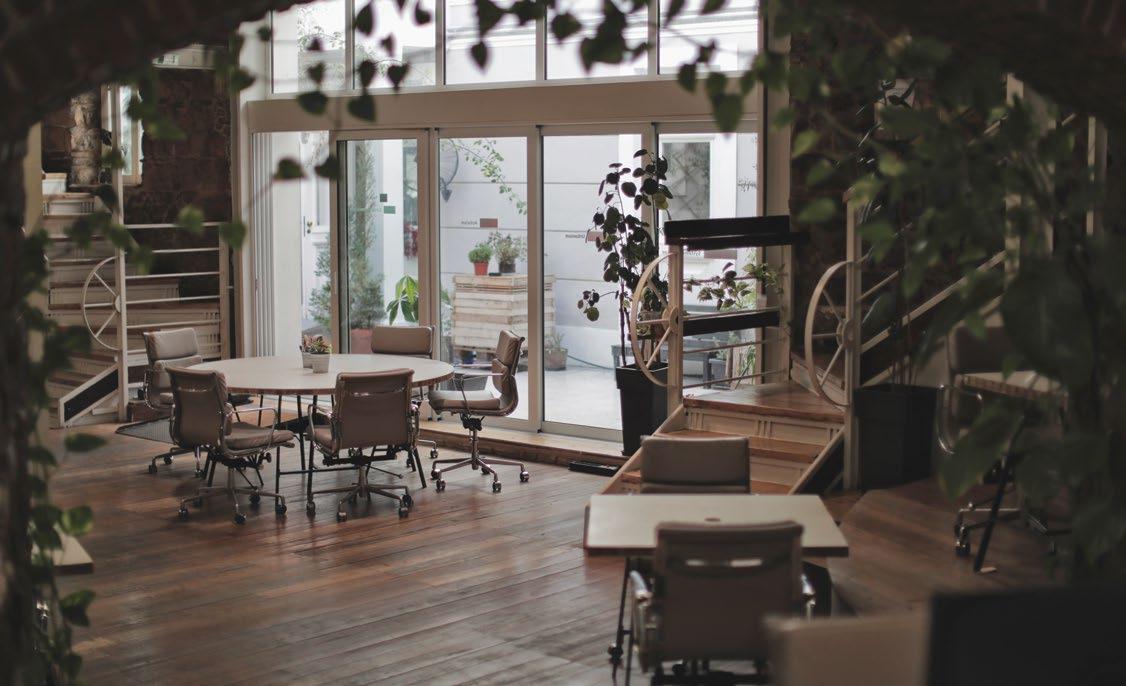

IMPACT HUB, ATHENS
It’s quite fitting that a space such as Impact Hub finds itself in the cradle of civilization. The building is just a short walk from Athens' iconic collection of historic monuments, serving as a reminder to wandering workers to pursue a greater cause. This is very much in line with what Impact Hub offers its community in Athens, with its four stories’ worth of entrepreneurial activity nestled in an Athenian side street. Although the building’s exterior is undoubtedly fresh and modern, much has been done on the inside to preserve its ancient terracotta brick walls and arches, which has been teamed with wooden beams and flooring, as well as iron balustrades along the staircase. With verdant plants carefully placed across the floors, Impact Hub Athens is a hybrid of your typical cosmopolitan workspace and that countryside villa in the Med you’ve been wanting to book.
30 - NEXT MAGAZINE - N o 20 TRAVEL
To the side of this 820 sqm hub is an Athenian Garden - an oasis of calm where you can stretch your legs away from your hot desk, and a chance for you to soak up the Mediterranean sun for your shot of Vitamin D. There’s also a snug but fully functional kitchen for you to store and prepare your meals. But perhaps the most unique feature at Impact Hub is the Athens Comics Library, a cosy little room whose terracotta walls have been taken up by shelves of Greek comic books for young and old. It’s a great space to get your graphic
juices flowing. But once you’re done for the day, and you’ve already paid your respects to the foundations of democracy, you’re but a 40-minute drive away from Voula Beach, where oatmeal-coloured sands and turquoise waves will be waiting for you.
Day passes at Impact Hub are priced at €18, and weekly and monthly passes are also available at €70 and €170 respectively.

SOHO OFFICE CENTRAL & EMBASSY, LIMASSOL
Why have one space when you can have two? Spearheaded by Danish pioneers Michael Steen Pedersen and Kris Jes Petersen, hot desking in Cyprus has never been more hygge. The two SOHO in Limassol are strategically located along the coast, and a 9-minute drive from each other. These two spaces are twinning – both come with four floors, both offer spectacular rooftop lounges, and both provide a stellar menu of services for digital nomads as well as permanently rooted entrepreneurs. Undoubtedly, these two office spaces exude finesse, good vibes and a penchant for the IT crowd. They’re offering far more than just a seat and a socket; they’re supplying a lifestyle, ephemeral as it may be for the wandering worker. The concept of work-life balance is strong in these two spaces, giving you access to facilities such as a 24/7 gym plus gym classes, showers and a sauna, an inhouse café and free-flowing water, tea and fruit. Speaking of work-life balance, there’s much to see and do in Limassol after a hard day’s hot desking. You’re just a stroll away from the Molos promenade and the pristine vastness of Akrotiri Bay. For all you culture vultures, there’s also Limassol’s Medieval Museum, a seaside sculpture park, as well as a private car collection featuring some interesting surprises.
Hot desking at both SOHO offices Cyprus is priced at €20 per day, and dedicated desk spaces for a month cost €325.

N o 20 - NEXT MAGAZINE - 31 TRAVEL

WEWORK LA FAYETTE, PARIS
Well, isn’t this fabulously French? Housed in an outstanding art deco building, WeWork La Fayette is a vastly grand and spacious coworking space in Paris’ 9th arrondissement. It is so extra yet so understated for a day’s digital work. If you need a moment to brainstorm or give your eyes a screen break, look up to the glass ceiling and allow yourself to get lost in the geometry. Such opulence of course comes with high-end services such as onsite staff, printing services, a fitness centre and an inhouse barista, and you’ll be rubbing shoulders with a very discerning community. There’s also an outdoor area for you to mingle and relax in, and dogs are most welcome.
The Palais Garnier is just down the road, as is the Folies Bergère. Of course, you can’t get more central than this building, so Paris is very much yours to explore.
A monthly dedicated desk pass starts at €450, while a private office with four workstations comes to €2,690.
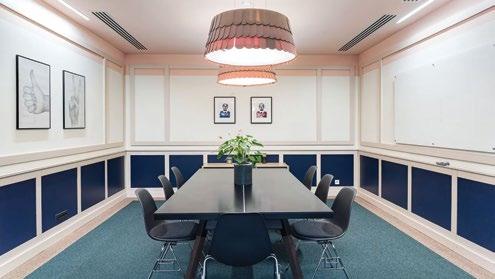

32 - NEXT MAGAZINE - N o 20
TRAVEL

CLOCKWISE, BRUSSELS
Slap-bang in the centre of Brussels is a highly esteemed work hub, brought to you by the international Clockwise franchise. Clockwise Brussels occupies eight staggering floors at the corner of Avenue des Arts, overlooking the grounds of the Palace of Brussels and its beautiful grounds. This 24/7 space is a really lovely place of refuge, offering a tranquil, clean and streamlined vibe to your nomadic work day. Natural light floods this elevated space, and there is much to be appreciated in every slick detail. We’re especially fond of the patterned perimeter sofa, ideal for informal rooftop networking. The overall feel at Clockwise Brussels is a contemporary but classy hotel, and it does feel like a homely and welcoming space for likeminded people looking to brainstorm in Brussels. The club lounge provides you with a vista like none other; the city is right below you, waiting for you to switch off your laptop and soak up the city’s trendy atmosphere. When you’re done, head to the Cirque Royale or the Théâtre Royal du Parc for an evening of entertainment and culture, or treat yourself after a hard day’s work to a succulent bowl of moules frites at a local restaurant.
A day pass is €20, while the Club Lounge pass is €100 per month. If you’re feeling more rooted, a dedicated desk is €175 per month.

20 - NEXT MAGAZINE - 33 TRAVEL


MAKERS OF BARCELONA BAILÈN & CATERINA, BARCELONA
There’s a touch of Picasso here. White walls, high ceilings and towering arches encase a campus-like atmosphere with plywood-framed seethrough dividers, geometric décor and metal stools. The Makers of Barcelona spaces might just transport you back to your student days, where you got by with the basics, but your bohemian housemate just knew how to put it all together and make it really work. The energy here is categorically youthful, so it’s an ideal space if you’re looking to feel young again. Strategically located in the heart of Barcelona, these two spaces are a 12-minute walk apart from each other, and you can get two for the price of one, depending on where you need to be in the city on any particular day. They’re also right by two of Barcelona’s greatest icons – Santa Maria del Mar and Parc de la Ciutadella. They really got it right when it came to location! You are of course not very
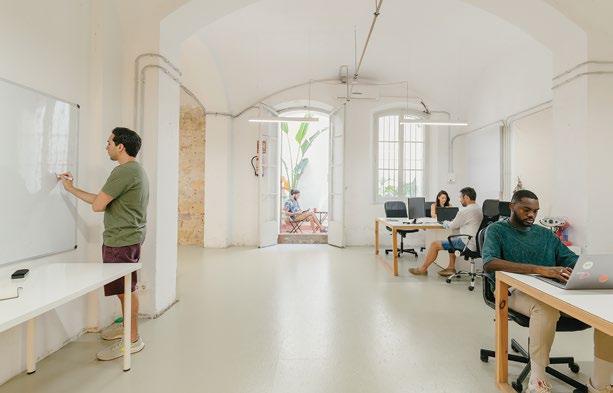
far from the coast, hosting Barcelona’s sublime portfolio of sandy beaches, as well as an immeasurable array of eateries offering you the most genuine of Catalan and Spanish delicacies.
Day passes for Makers of Barcelona cost €20 + VAT. Flexible desking costs €120 + VAT per month, while a monthly fixed desk costs €230 + VAT.

TRAVEL
Redefining the Startup Landscape
STATION F IN PARIS
Words by Nicolà Abela Garrett
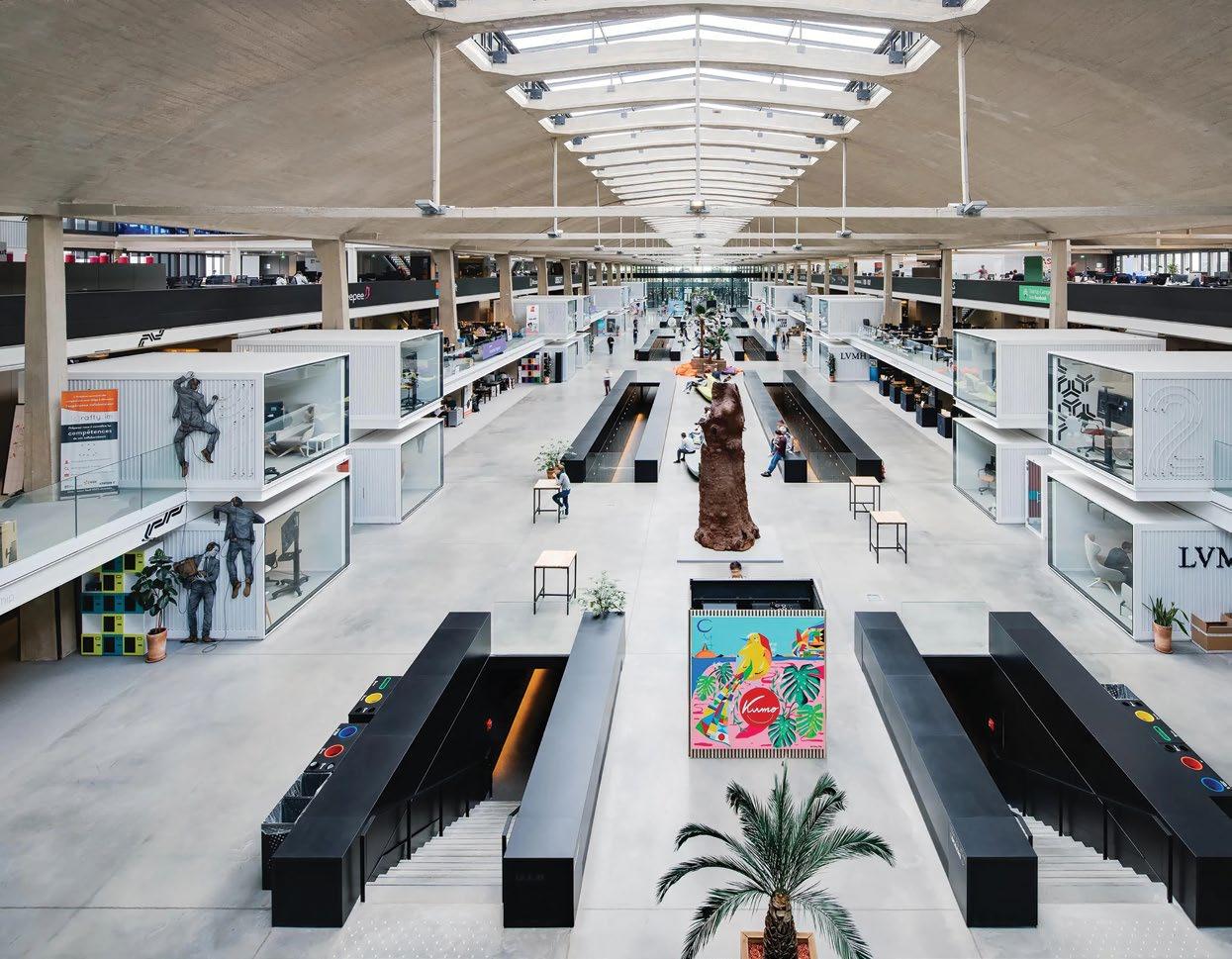
36 - NEXT MAGAZINE - N o 20 START-UP

There is a regenerated rail freight depot wedged against the Bibliothèque nationale de France along the Seine. Where tonnes of freight would once await the next step of its journey here, now startups come to cultivate their dreams before the next big phase of their missions and visions. But this is not your lay-my-hat coworking space with a day pass fee. This is a campus reserved only for those who can guarantee promise and recognition in the form of growth. The startups here are selected for incubation, determining a highly elite community of entrepreneurs who will exclusively inhabit and utilise 50,000m² of office, housing and coworking space in the 13th arrondissement of Paris. Bienvenue à Station F.
Upon approaching the building, you would indeed mistake it for another railway station, or perhaps a new hypermarché in the making. The campus is buffered by a fortification of glass windows, blocking out the Parisian pandemonium. The only thing blocking the view of the river is the Bibliothèque, but there’s nothing wrong in rubbing shoulders with such good company. Once you pass the threshold and enter the site, you could very well be at some fledgling but flushed university with a focus on tech, innovation and the like. And you wouldn’t be far off the mark.
Founded by French entrepreneur Xavier Niel in 2017, the concept of Station F was to provide both a physical and resourceful space in which a vibrant ecosystem of startups and entrepreneurs could collaborate and innovate with corporate partners. But Station F goes beyond incubation, in that it offers the most promising startups everything they require to streamline their vision during their conception, including affordable accommodation in central Paris. Ten minutes away from the campus is Flatmates, Station F’s exclusive residence block with a number of apartments housing members of its community. As an entity, they host a generous number of tailored programmes, events, and workshops to foster an emphatically international and ambitious startup community. The objective is for them to fly the nest fully developed in the first stage of their career and company growth.
But it’s not as simple as just signing up. Station F is highly judicious when it comes to selecting their startups for residency and assistance. They famously only accept 6-9% of their received applications, and will only filter in those who can demonstrate the most passion, potential and precision in their projections for growth.
Station F is the biggest of its kind in the world, although its focus is entirely on little acorns with great aptitude. The openness of the Station F space is most definitely in line with the mantra of liberté, égalité, fraternité; it encourages the community to share in each other’s ideas with one another, fostering a convivial approach to entrepreneurship. In fact, there’s no risk of competition, since Station F’s meticulous selection ensures this throughout its cycles. No two partners simultaneously work on the same subject, and all startups can engage with one programme to the next, as there is no hierarchy. It also helps that Station F is in the
very comfortable position of being not-for-profit. Their only objective is to cover the costs of their cost-effective premises, and this is why they only aim for companies in their early stages, rather than organisations looking to make revenue.
Nevertheless, its budding selection of startups rub shoulders with giants such as Google, Apple, Qonto and AWS on the daily. Such names are present on campus with the purpose to mentor startups, and although mentorship is not offered campus-wide, each programme comes with its own select group of mentors dedicated to their respective startups. Station F’s doors are also open to investors, who can join forces with the enterprise and scout for any potential partners. However, Station F likes to keep this rather exclusive to those startups they only deem ready for the next stage of their growth.
Despite the minimal structures of their work spaces, Station F's premises are nothing short of impressive. Every arch and every cove has been capitalised and maximised to deliver a state-of-the-art infrastructure, renovating the building’s former purpose with very modern amenities. Its soaring ceiling provides rays upon rays of natural light, stimulating its habitants, while its sleek and contemporary interiors are symbolically futuristic.
In addition to its workspaces, Station F has a wealth of amenities designed to support the needs of its residents and elevate their workday. It’s even home to Europe’s largest restaurant, La Felicità, in conjunction with a number of onsite cafés and other eateries, fitness facilities and relaxation areas. It’s holistic made easy for entrepreneurship here, promoting wellbeing and a work-life balance we all so crave.
Whether it’s securing investment, forging strategic partnerships, or accessing new markets, entrepreneurs who land themselves a spot at Station F are guaranteed empowering resources to reach new heights of success. Ultimately however, their common denominator on their journey here is Station F’s metric of success – growth.
N o 20 - NEXT MAGAZINE - 37 START-UP
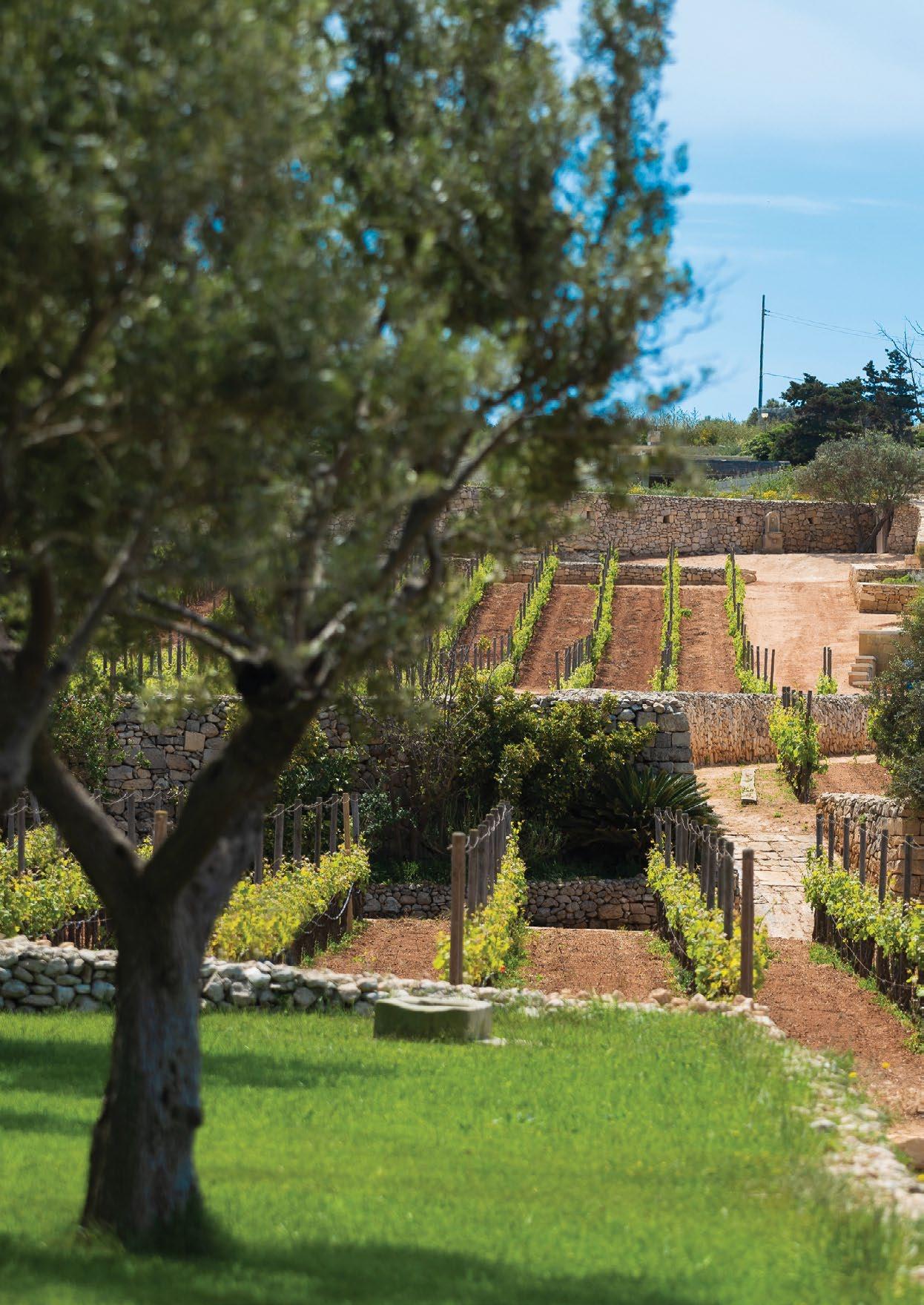
FOOD

SAVOURING SAUVIGNONS & MALTESE VINEYARDS AT
Ta’ Betta Wine Estates
Words by Nicolà Abela Garrett
by Concept Stadium | Julia Boikova
As the saying goes, in vino veritas. But the truth doesn’t only surface in moments of inebriation. If anything, true lovers of the grape are often in search of a different, more organic sort of authenticity. At Ta’ Betta Wine Estates, everything you’ll encounter within this four-hectare viticultural haven is genuine and true to the world of wine making; from the produce of its cultivated land to the tastefully restored event-hosting farmhouse. We had the immense pleasure of exploring the grounds of this esteemed venue, as well as the chance to taste the four fruits of its labour through a wine tasting experience hosted by Ta’ Betta’s General Manager, Marie Choquet.
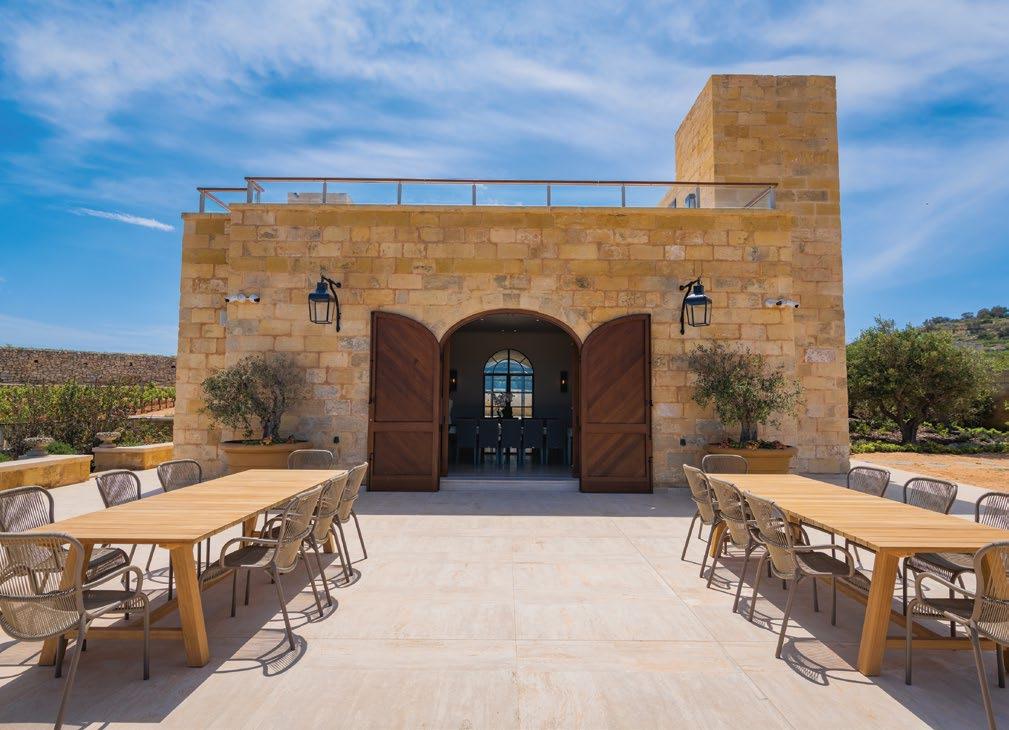
If this is your first time in these parts of Siġġiewi, you’ll probably find yourself taking a moment to absorb the area’s cosmic tranquillity. This is as close as you’ll get to the concept of rolling hills on the island, with the estate being surrounded by Malta’s lushest countryside, as well as some of its most historic landmarks outside of Valletta. The city of Mdina punctuates Ta’ Betta’s backdrop, while Verdala Palace lies to the north-west, and Girgenti Palace to the west. Indeed, Ta’ Betta’s knightly neighbours have certainly had an influence on the estate and its good work, but more on that later. Marie is here to greet us for our tour of this stunning escape to the country, accompanied by the family’s very courteous dogs. We’re taken to the heart of this estate – the fermentation area – which is divided into the aerobic and non-aerobic zones typical of any winery. For those of you who are unfamiliar with this environment, the punchy aroma is right up there with the smell of your morning coffee; it’s quite the bouquet.
Marie begins her introduction with a breakdown of what Ta’ Betta Estates aims to produce. “We want to tell a story with what we create here, and although the Maltese climate is generally constant, there are still some variations in between different vintages, which consequently alter the narrative of our yearly produce.” Throughout our visit, Marie speaks with a great sense of passion, not just about their wine production, but about everything Ta’ Betta, and there’s a lot to be proud of here. Run by the Camilleri family, Ta’ Betta has produced an artisanal collection of wines that embody a labour of love for the Maltese vineyard. But it’s by no means an entirely indigenous process. “We’re a bit of a hybrid. We’re in Malta, but our wine maker’s from Sicily, and we also have this Californian influence through the origin of our concrete egg-shaped fermentation tanks. And finally, our natural corks are brought over from Portugal.”
40 - NEXT MAGAZINE - N o 20 LIFESTYLE
Photography
Further inwards are the cavernous stores of Ta’ Betta’s army of barriques, with the larger of the casks holding 600 bottles’ worth of wine. The storage area is an architectural marvel in itself, and prospective guests will be happy to know that small conferences can actually be held within this part of the venue. Ta’ Betta has also branched outside of its territory, and all four of its wines are available at 120 restaurants in Malta, including most Michelin-starred eateries. They’re just as selective with
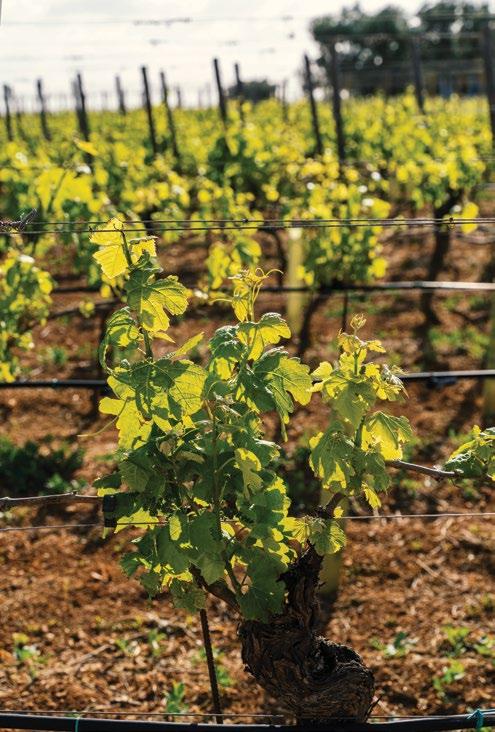
their outlets, in that their wines are only stocked at bottle shops and Greens Supermarket, in order to ensure that their product is stored correctly. Their bottles have also gone international, with exportation reaching the UK, Germany, Belgium, Luxembourg, Hong Kong and Macau.
After our brief, we then peruse the sprawling vineyards and social areas of the estate. Still chaperoned by the pack of canines, we also stumble upon a chicken coop, two doe-eyed donkeys, and a rather attention-seeking goat. It turns out that Ta’ Betta is a bit of a sanctuary, thanks to the family’s great love of animals. Speaking of seeking refuge, the estate will be hosting a number of fabulous events over the summer period, such as picturesque picnics in the vines and pop-up nights in collaboration with some of the finest chefs and restaurants on the islands. It’s also evident that Ta’
Betta likes to keep things as contained as possible, with little but significant touches such as harvesting their olive trees to make their own olive oil, and even gathering eggs from the coop; nothing goes to waste here, not even the glorious sunrises and sunsets you’ll get to experience from this high-altitude paradise in nature.
Marie then leads us to one of the main areas within the farmhouse, where we commence our wine tasting experience as we look across
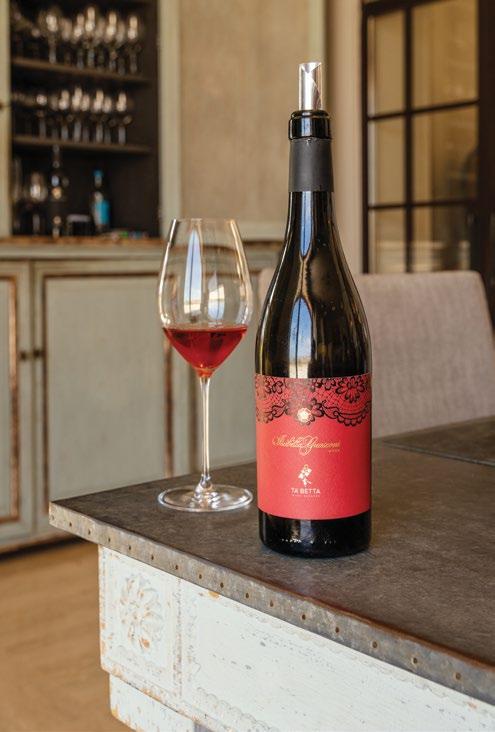
at a magnificent and breathtaking view of Mdina. Carefully and with great knowledge, Marie talks us through the four wines in the Ta’ Betta collection – a tenacious chardonnay, a silky rosé, a robust Syrah and Cabernet Franc, and an opulent Merlot and Cabernet Sauvignon. As we had mentioned, the Knights of Malta play a huge part in the identity of each of these wines, and every glass that’s poured is accompanied by a serving of storytelling that piques our curiosity between each sip. Each bottle is named after an influential Grandmaster from Malta’s past, and although the history books may have portrayed them as upstanding and righteous gentlemen, the estate has delved deeper into the archives to unearth some gossip about these four protagonists. You’re given an exclusive insight by your wonderful hostess Marie, but be warned: even locals are shocked upon hearing these revelations, and they’re enough to keep anyone sober.
N o 20 - NEXT MAGAZINE - 41 LIFESTYLE

Such splendour cannot go unmissed. The Maltese grapevine will tell you that some of the most memorable weddings have been held at Ta’ Betta. They like to set their standards with a minimum of two guests for an intimate experience of the estate, a total of fifty for indoor dinners, and up to 120 guests when occupying their outdoor areas. They’ve also gained popularity as a conference and team-building setting, and they’ll even be cranking up the barbecue on Sundays on their gorgeous terrace. There’s an area within the venue to suit any mood and celebration, from the extended balcony that overlooks the entirety of the vineyards, to the cosy nooks at the back of the farmhouse for a cosier countryside setting. Whatever the occasion, Ta’ Betta ensure that their own team of waiters are at hand, as they are au fait with the wines and all other aspects. By far, this is one of Malta’s most distinguished and high-grade venues that is sure to go bigger and better with its agricultural ventures. We’ll drink to that.

42 - NEXT MAGAZINE - N o 20
LIFESTYLE
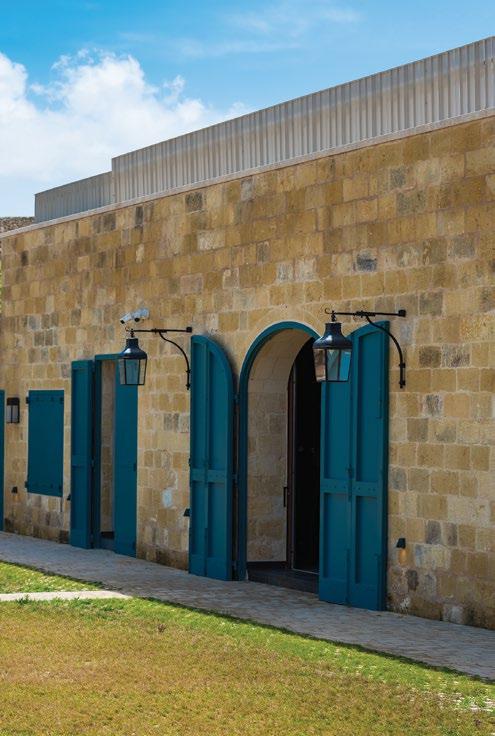



N o 20 - NEXT MAGAZINE - 43 LIFESTYLE
DINING IN SPLENDOUR
Beefbar in the City
Words by Nicolà Abela Garrett
Photography by Julia Boikova
If it’s been a challenging few hours at the office, you might want to treat yourself to a light but lavish lunch at Valletta’s Beefbar in the City. Located at the Phoenicia Malta, this is an unparalleled gastronomic choice that delivers winning-at-life vibes on the inside, and a relaxed but regal ambience on their tranquilly shaded terrace. Invigorate yourself with the vibrancy of this chic eatery’s interiors, with a pastiche of smooth malachite marble-top tables, 1930s-esque chandeliers, and a selection of earthenware objets d’art which are certainly a Beefbar trademark.

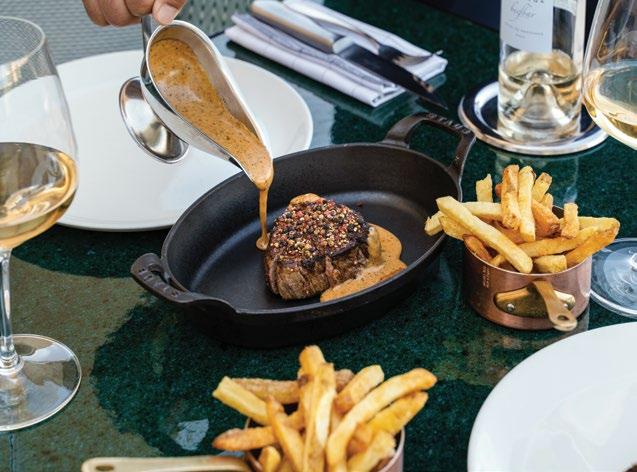
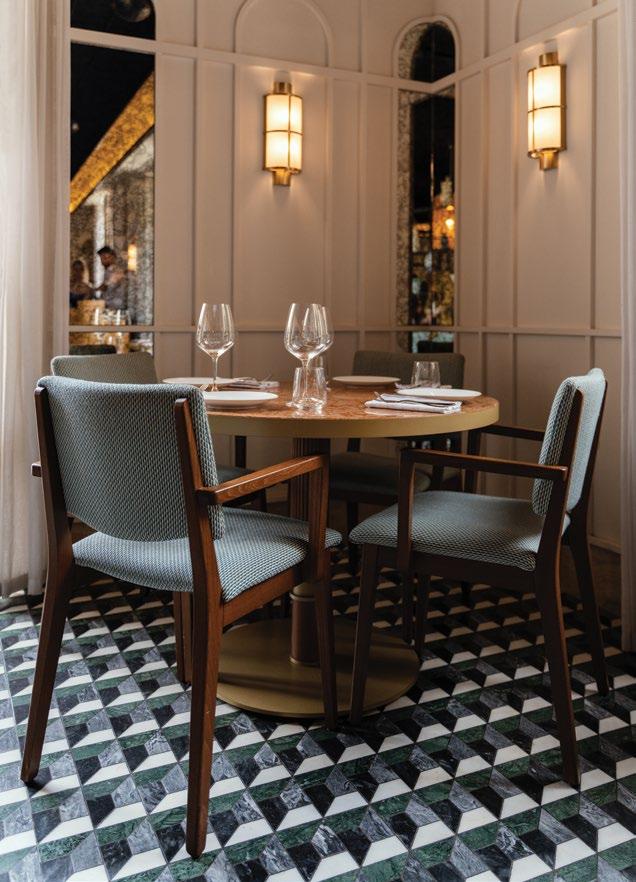
FOOD

Take in the view of Valletta’s spectacular bastions as you savour their heightened dining experience and superior cocktails, with delectable bites such as their Stracciatella Fattoush, Vitello Tonnato and Avocado Hummus. Of particular note - and to add a street food but celebratory note to your repast - are the Lobster Tacos, which are so utterly mouthwatering, you’ll be tempted to order another round or two. To amp up the city atmosphere, Beefbar in the City hosts a live DJ from 15:00 onwards on Fridays and the weekends during the summer period, so be sure to make an appearance and dine and drink to the beats.

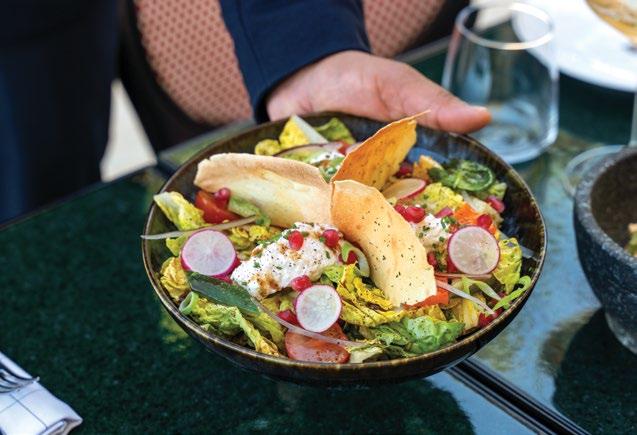
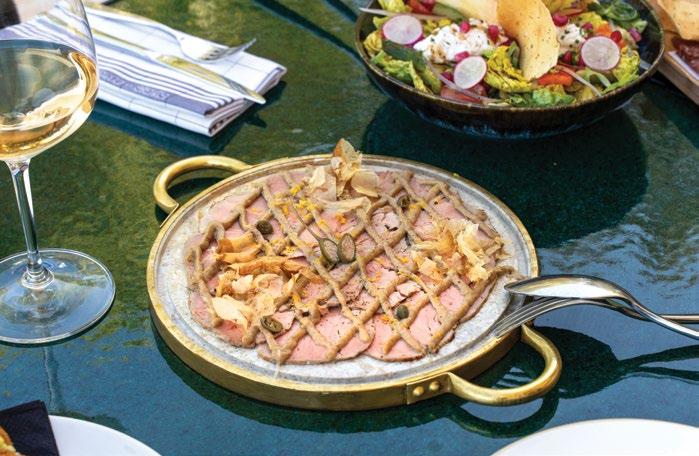

N o 20 - NEXT MAGAZINE - 45
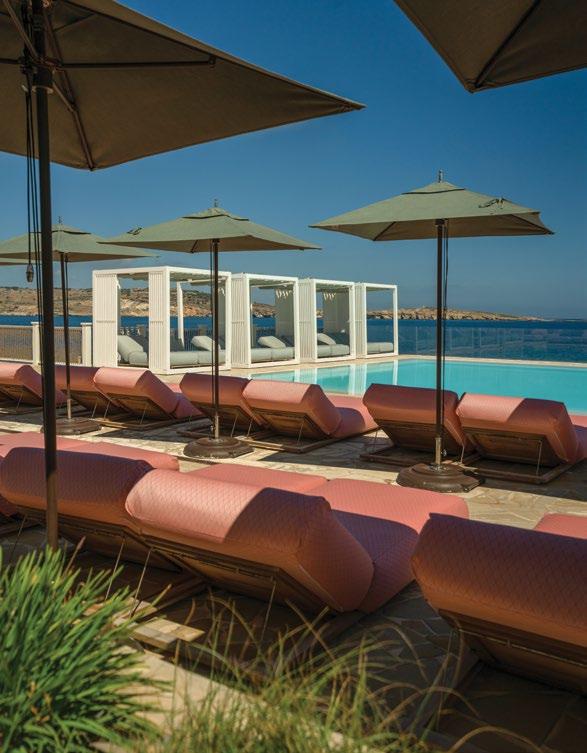
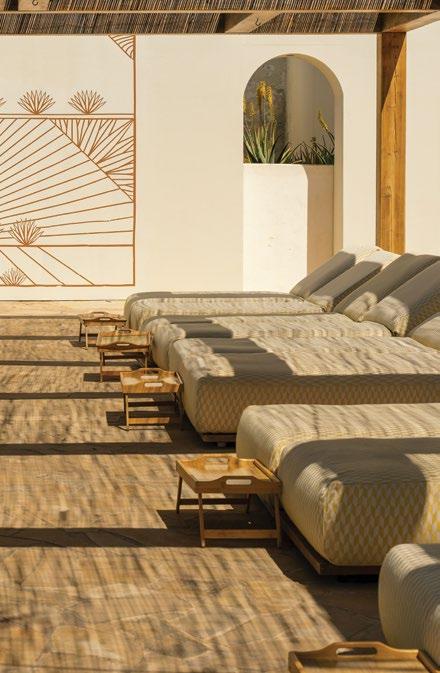
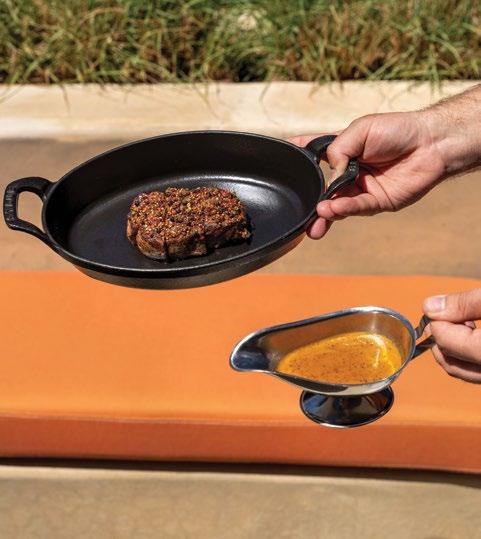



46 - NEXT MAGAZINE - N o 20 FOOD
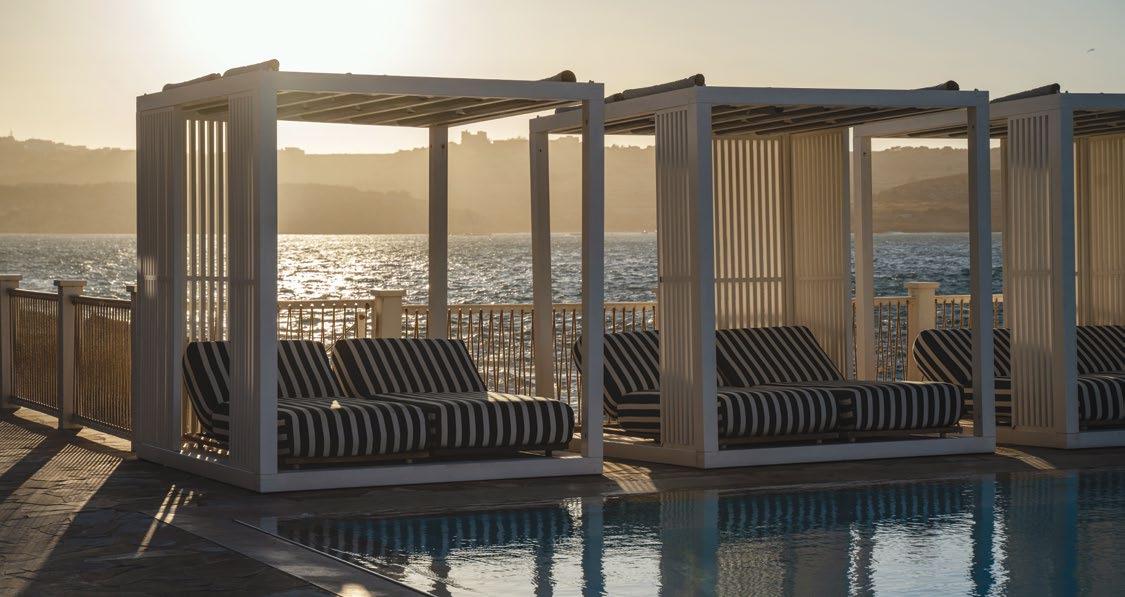
WHAT
ALL BEACH CLUBS OUGHT
TO BE Beefbar on the Beach
Words by Nicolà Abela Garrett | Photography by Julia Boikova
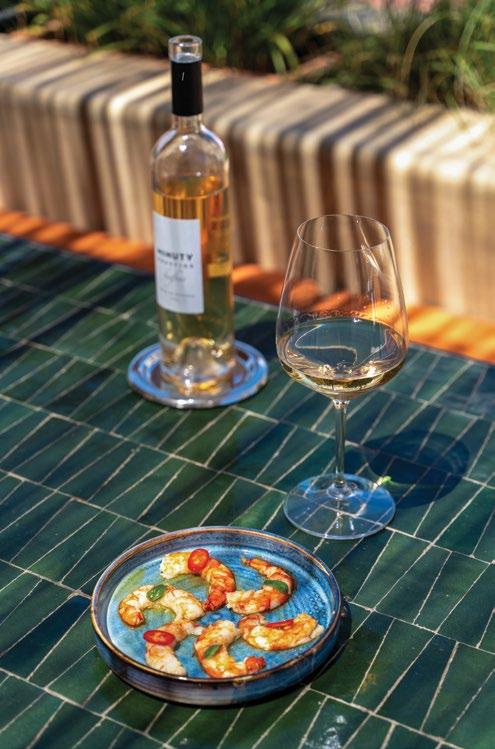
When all else fails, there’s always the sea, and a day by the pool. And then of course, there’s always Beefbar on the Beach, Malta’s seaside answer to St Tropez. A frequent haunt among the most distinguished players on the island, Beefbar on the Beach is a cut above the rest in Malta’s portfolio of beach clubs; truly, there is no other establishment that matches their package.
Regulars will of course be familiar with Beefbar on the Beach’s annual touch ups and transformations; they like to keep things fresh and updated for their clientele, in order to ensure the zenith of waterside lounging. This year, patrons can look forward to the Golden VIP Bed area, with a collection of plush yet sturdy 30cm-deep sunbeds to set the scene - and the level of comfort - for your stay. As always, guests can look forward to resplendent interiors and decorations that completely enhance this premium oasis of calm and quiet luxury. And speaking of which, the newly established poolside room with an exclusive sunbed for private gatherings is a feature that’s got to be tried. Furnished with cosy sofas, a TV, air conditioner, a fully stocked bar and other soft and sensational furnishings, this is a unique, opulent and triumphant addition to the Beefbar experience.
It goes without saying that their restaurant is there to serve up some sumptuous meals, adding to the element of indulgence only the Beefbar brand can deliver. Go for the Rock Corn for a crunchy and spicy snack in between dips in the pool, or the Caesar Miso for a salad that is sweetly salty and packed with freshness and texture. Keep it nautical with a serving of succulent king prawns in a heavenly basil lemon dressing, if you would like something more filling - lobster rolls tacked into brioche bun, or go for gold with their stellar selection of beef cuts and decadent sauces.Lovers of Béarnaise will want to try Beefbar’s irresistible interpretation, as well as their beautifully creamy Lemon & Yuzu mash for a comforting accompaniment. Finally, their divine dish of smokingly zesty and juicy lemon chicken, served on a stand-alone mini barbecue, is sure to evoke the much-anticipated aromas of a Maltese summer. We know where we’re headed this summer.
N o 20 - NEXT MAGAZINE - 47
Fortifying an Exceptional Dining Experience
TERRONE
The bastions of Birgu never get old. But did you know that you can wine and dine within these magnificent fortifications? Terrone promises a truly divine culinary experience on the Birgu Waterfront, with seating right inside the city walls for a cosy and cavernous dinner, as well as a number of tables right by a secluded and intimate body of water that forms part of the historic Fort St Angelo.
But Terrone doesn’t just offer incredible surroundings. This fantastic restaurant, headed by Chef patron Adrian Hili, cooks up a menu that deserves every ounce of praise it gets and more. We were especially blown away by the wonderful and diverse choice of starters which make for a generous sharing experience for lunch or dinner. For a sweet and delicate marine texture, we recommend the local Rossi prawns with lemon zest, chilli and wild fennel. To complement these on a warmer and juicier level, the wood roasted Scottish langoustine with seaweed butter are not to be missed. Carnivores will certainly indulge in their Wagyu beef crudo with Grana shavings and pine nuts, while veggies will fawn over the Burrata salad with Sicilian blood orange, fennel and pistachios. For a satisfyingly salty yet silky injection, the Bonito fillet is served with anchovies, succulent asparagus and gorgeous quail eggs. A special mention also goes to the chef’s pillowy inhouse focaccia, and a wickedly cream-filled pistachio cannoli.
We also felt immensely compelled to highlight the exceptional service we received here, with Terrone’s incredible staff members guaranteeing a timely yet paced delivery of our dishes, as well as a personable rapport with guests. Oh, and to further enhance your meal, you may want to give Terrone’s cocktails a try. They’re simple yet so splendid!
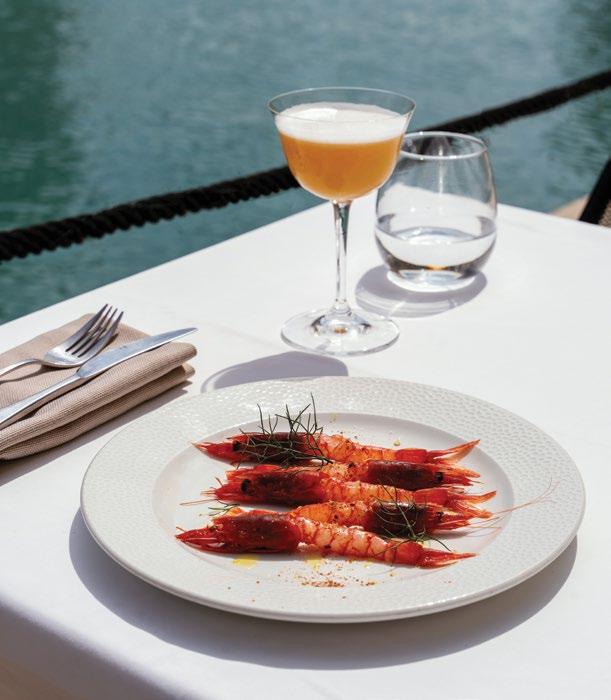




48 - NEXT MAGAZINE - N o 20

The Everyday Luxury that is Southern Mediterranean Cuisine
What’s life without a little theatre? This is especially true when dining at Contessa, The Phoenicia Malta’s re-imagining of its historic restaurant, overlooking the northside of Valletta’s peninsula. A culinary ode to Countess Strickland, The Phoenicia’s Malta’s foremost eatery boasts some exceptional interiors, in conjunction with a Mediterranean conservatory that provides perfectly placed viridescent foliage. Do take a moment to appreciate your surroundings, whether you’re seated here or inside the chamberesque hall that echoes grandeur and palatial living. We’re especially fond of their chinoiserie collection that harks back to the days of old excess and luxury.
Just as luxurious is Contessa’s loyally Mediterranean menu, which comes with a touch of tableside theatre. A charming art deco trolley serves as a stage for cocktail- and tiramisu- making, right before your very eyes. You’ll be thrilled by a sumptuous burrata with prosciutto San Daniele and a butternut squash purée, as well as a delicious marinated octopus salad. But the star of this show is certainly the three-tiered Seafood Plateau, featuring the great and the good of the sea, such as Gillardeau oysters, tiger prawns, scallops, and dressed crab. There’s an array of delicious items on this menu, celebrating Mediterranean cuisine in style and luxury.
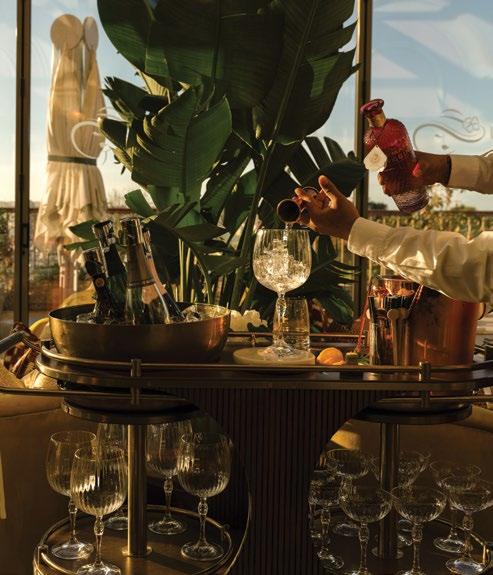


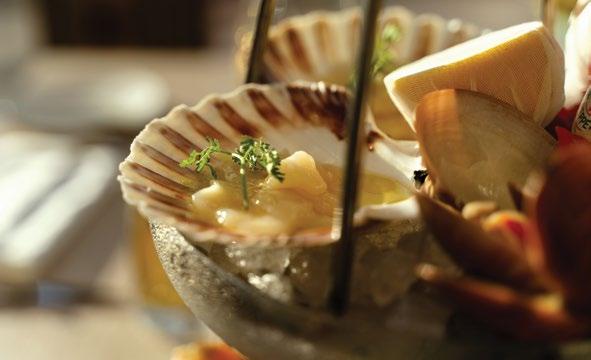 CONTESSA AT THE PHOENICIA MALTA
CONTESSA AT THE PHOENICIA MALTA

The Fourteen Chapters of a Michelin Epic
THE DEGUSTATION EXPERIENCE AT ION HARBOUR
Words by Nicolà Abela Garrett | Photography by Julia Boikova
Sometimes, only the very best will do. There are days when we’re in dire need of the zenith of perfection, a few hours of pure, unadulterated bliss, preferably in the form of two Michelin stars on a St Barbara Bastion rooftop with the finest view of the Grand Harbour. To achieve this, you’ll need a table booked at ION Harbour, the jewel in Valletta’s culinary crown. Spearheaded by restauranteur extraordinaire Simon Rogan, alongside the sustainable direction of Keith Abela and the execution of Chef Oli Marlow, ION Harbour delivers a degustation menu that champions everything that has come straight from the ground beneath us, as well as our surrounding waters. This is a menu that gives you fourteen snapshots of what has so far clinched two Michelin stars for this sublime restaurant.
Patrons will marvel at the setting that has been curated to complement the already perfect view from atop the Iniala Harbour House, Valletta’s most exciting hotel experience. A spectacular hue of blue identifies the elegant louvre doors of the balcony area, while an understated interior of marbled tiling and travertine-coloured wallpaper instructs the balmy yet chic ambience. This is a joyous space where patrons are made to feel special and welcome; one can’t help but get a rush of excitement as you sit down and anticipate the glorious meal ahead.
From start to finish, our fourteen-course dinner was perfectly timed between each flavourful experience. The bar is set dangerously high with an outstanding carrot tartlet with smoky blue fin tuna and caper jam; how will any of the other dishes top this? But fear not, the splendour and standards are maintained throughout the menu. Notable highlights include a superbly corpulent truffle pudding

glazed in stout, and a lard-topped pork and eel doughnut with Beluga caviar. Other less decadent but equally satisfying numbers are a fascinating presentation of purple reign tomatoes and their wonderfully concentrated juices, a deconstructed artichoke decorated with otherworldly forest findings, and a dill brined gem lettuce with Alba truffle shavings and shimeji mushrooms.
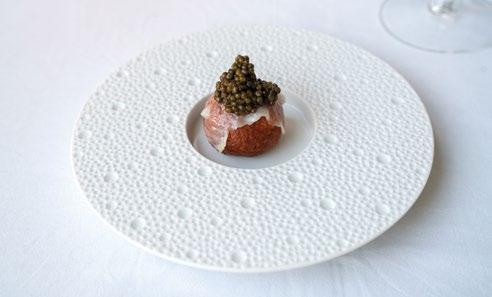

50 - NEXT MAGAZINE - N o 20
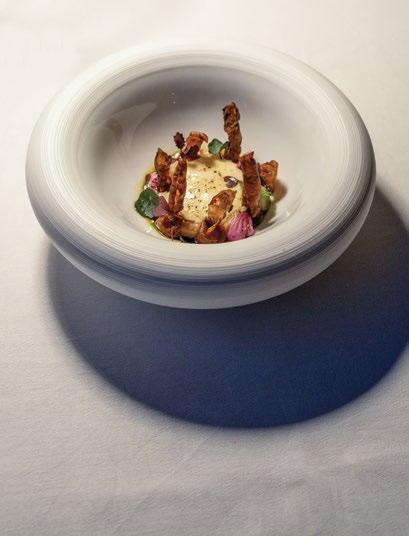
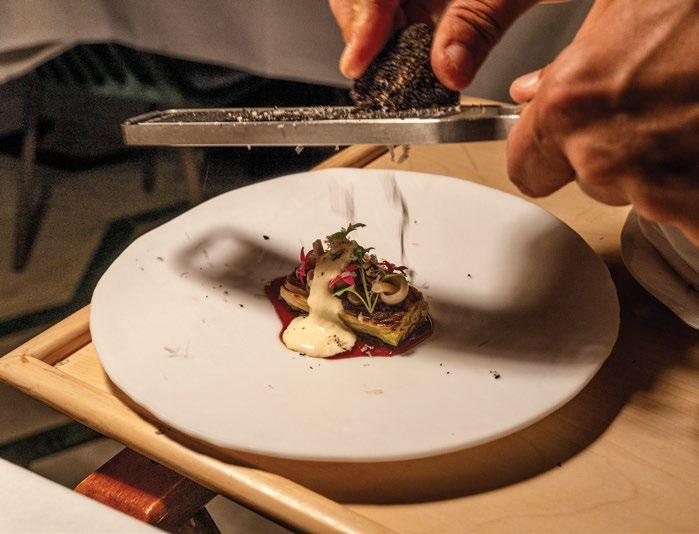
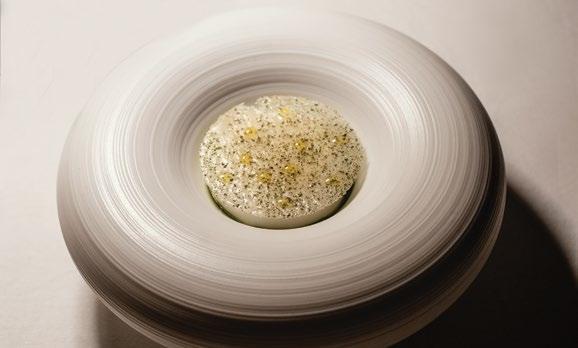

Pescatarians will be grinning with absolute pleasure after they’ve tucked into lobster on top of a chicken skin cracker, and a divine prawn carpaccio with the most incredible sea jelly and pike roe sauce. The final carnivorous note before the heavenly descent into dessert is a succulent portion of duck, accompanied by a fabulously sturdy crumpet made with duck fat. We are then eased into the final sweet chapters of this menu with a palette-cleansing frozen sheep’s yoghurt and a zestful note of lemon and verbena, then followed by a tartly caramelised baked apple with spring honey ice cream. We feel the final movement in this sonata is something that’s really quite adorable – a sour cream ice cream sandwich with a malt and toasted grain biscuit. We encourage you to indulge in this unparalleled dining experience; you’re guaranteed to taste both Michelin stars, which we’ll humbly but heartily award five stars.

N o 20 - NEXT MAGAZINE - 51
WHEN ARCHITECTURE & HOSPITALITY MEET IN CONVERSATION WITH
Chris Briffa
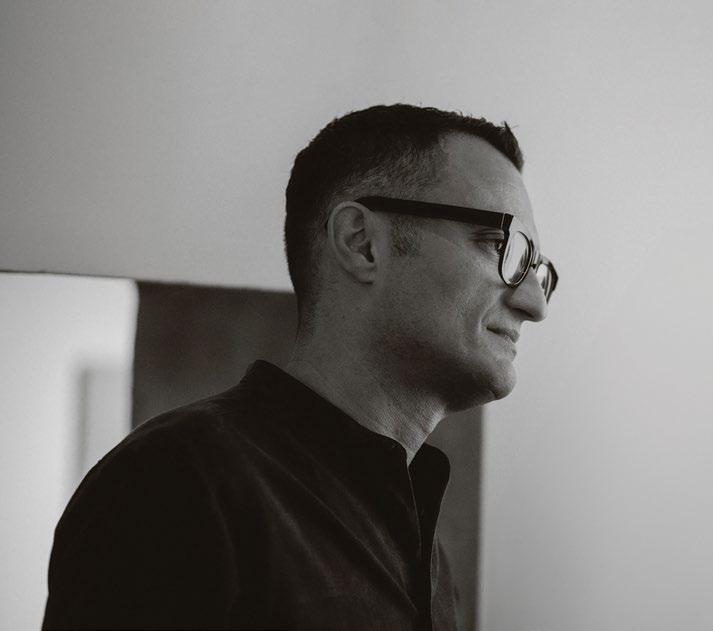 Words by Nicolà Abela Garrett
Words by Nicolà Abela Garrett
It is possible that in our eagerness to unwind when on holiday, we may sometimes overlook the relationship between architecture and hospitality. The former inescapably instructs the aura of the latter, and the spaces we choose to reside in when travelling set the tone and energy for our stay. Architect Chris Briffa has long factored in the element of exceptional hospitality into his portfolio, cementing the role of the architect as the initial experience-giver in the hotelier pecking order. We had the opportunity to delve deeper into some of his projects with a more focused lens on this topic.
52 - NEXT MAGAZINE - N o 20 DESIGN
 Tanizaki’s Shadows, Gozo | Photo by Hanna Briffa
Tanizaki’s Shadows, Gozo | Photo by Hanna Briffa
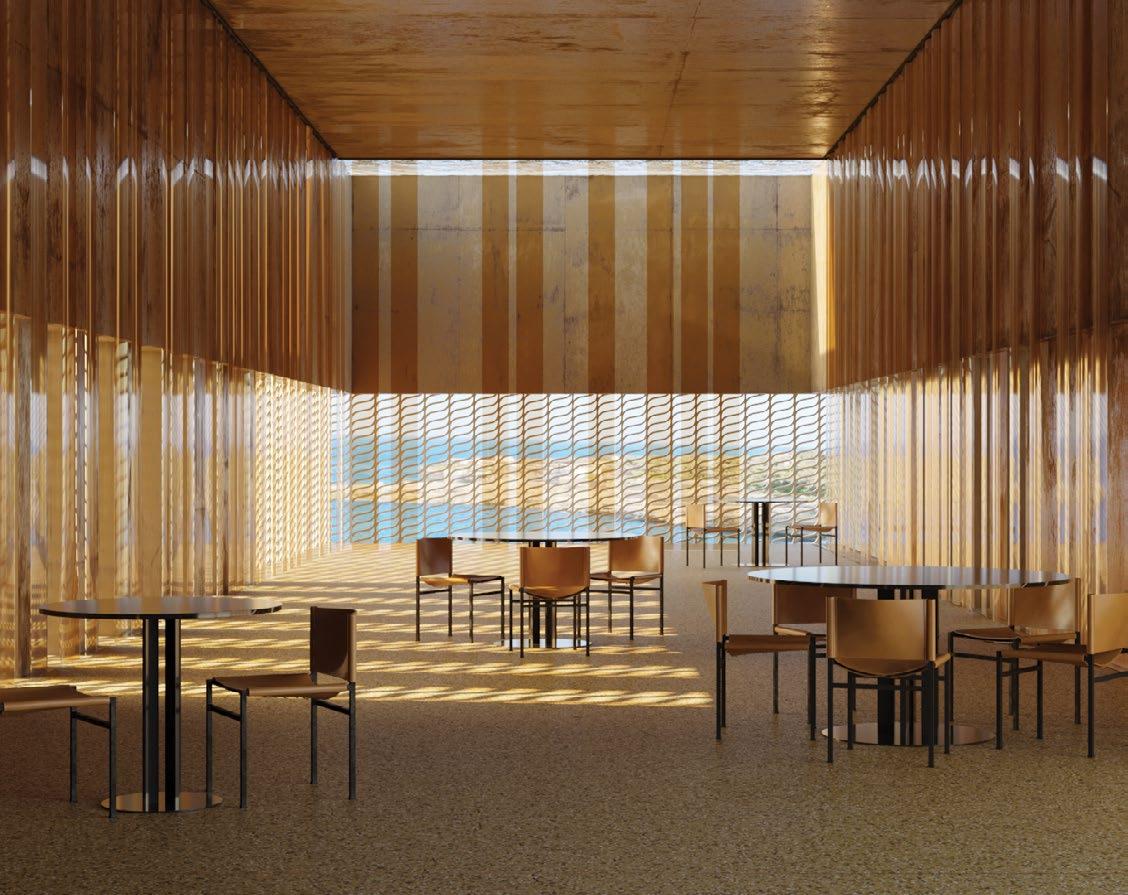
Hospitality has always been one of the driving forces in Chris’ work. Having studied the role of architecture in the hotel industry during his time in Milan, he became highly invested in creating unforgettable hotel and restaurant experiences through his projects. “I feel it’s something that’s incredibly valuable, and the message I had got from Milan was that an abundance of luxurious materials isn’t automatically conducive to a luxurious experience. It’s really more about how the architect is going to present the space. For example, a hundred-year-old taverna that’s been family-run for five generations can deliver just as much of a unique and authentic experience, without the need for opulence.”
After his time in Milan, Chris became even more dedicated to making spaces that compel people to return home and tell stories about them. “If this is the result, then I’ve done my job as an architect.”
Chris illustrates his philosophy to us with a number of his own projects. His grandest so far has been a super guesthouse on a manmade island in Manama, Bahrain, completed back in 2018. Commissioned by a high-profile client who required a tailored and isolated space, Chris envisioned a luxury compound with a façade unlike any other in the area, one that added a crucial
element of mystery and even ambiguity to the final product. “I wanted to create this level of intrigue. It has a geometric and sculptural entrance, so that already denotes that there’s something special behind the door. No one can figure out what exactly this place is: is it a gate, is it a museum?... That was the client’s requirement.”
Another objective for Chris was to fully incorporate the building’s direct relationship with the sea. His solution was to split the building into two halves, so that the immediate result was a literal framing of the sea view through an outdoor corridor, giving the project a strong sense of place. He also capitalised on the building’s exposure to the area’s northwest winds by capturing this force from as many façades as possible, thereby naturally ventilating the building.
On this note, sustainability plays an intrinsic part in Chris’ work. “For me, sustainability isn’t just about using the right materials or implementing the best methods. It’s also about designing in a way that’s timeless, so that people won’t feel the need to redesign what is outdated in the future. Whatever you’re creating – both in terms of beauty and what it's made of – sustainability is at the core of everything.”
54 - NEXT MAGAZINE - N o 20
DESIGN
Delimara Lodge, Kalanka, Malta | Photo by Chris Briffa Architects


N o 20 - NEXT MAGAZINE - 55 DESIGN
Reef Guesthouse, Manama, Bahrain | Photo by Aldo Amoretti
Reef Guesthouse, Manama, Bahrain | Photo by Aldo Amoretti

56 - NEXT MAGAZINE - N o 20 DESIGN

This is prevalent in his current project in Delimara – a hotel by the water’s edge that fully embodies a farm to fork concept, working in tandem with an already established farm. The Delimara Lodge will be a small retreat with just seventeen rooms, each one its own stand-alone cabin. “It was conceived as a space to decompress in nature, with direct access to the beautiful beach here. The proverbial foundations are two palm trees which have been on the site since before my childhood, and everything’s been designed around these two. In order for the process to be as sustainable as possible, the project’s materials have been sourced from the site itself. For example, the resulting material from pulverising the original building was used to level the car park.”
We’ve looked at Chris’ past and future endeavours in hospitality, but what about the present? Well, Chris is fully engaged in the industry himself through Valletta Vintage, his family’s collection of self-catering properties concentrated in the capital. No two rooms are alike within these buildings, and they provide unorthodox living experiences that stray from the usual narrative most tourists might get. “The idea was to create something that is intrinsically ‘Valletta’. So, when you walk in, the overall character informs you that you’re in Valletta. But simultaneously, you’re still within a very contemporary and curated space, namely through elements such as artworks by local artists, mid-century furniture and light fittings.”
Each Valletta Vintage apartment tells a story through its colour scheme and time period. You feel like you’re in a part of the city that’s not often revealed. Echoing his work in Bahrain, Chris retained that element of intrigue by keeping the buildings’ original and unassuming façades which contrast with their interiors. You’ll also find remnants of Chris’ past at Valletta Vintage through upscaled pieces foraged from his father’s workshop in Birgu, or items which once belonged to his grandfather. Valletta Vintage delivers a contemporary side to the city, offering a democratic answer to accommodation in Valletta within an affordable scenario of hospitality.
So, with all of this in mind, how would Chris like to leave his architectural mark in Valletta and beyond? “Whatever I do, I try to do it for the long term with a conscientious approach. I create spaces that will allow future generations to write their own chapters. This is what sustainability’s all about to me.”
N o 20 - NEXT MAGAZINE - 57
DESIGN
Valletta Vintage, Malta | Photo by Hanna Briffa
LUCERNE
A Magically Medieval & Mountainous Retreat
Words by Nicolà Abela Garrett | Photography by Julia Boikova
Bang in the centre of Switzerland lies its most populous city of Lucerne, the capital of its canton which goes by the same name. Despite its French spelling, the region forms part of the German-speaking portion of the country, and I can’t help but smile at the memory of an old friend dramatically rolling his eyes when I had mentioned that another friend from the region refers to their hometown as Luzern. Opposing toponyms aside, Lucerne is sure to unite its visitors with its spectacular portfolio of natural wonder, panoramic splendour and haute history. Here are some of the highlights which had struck a chord with us.
58 - NEXT MAGAZINE - N o 20 TRAVEL
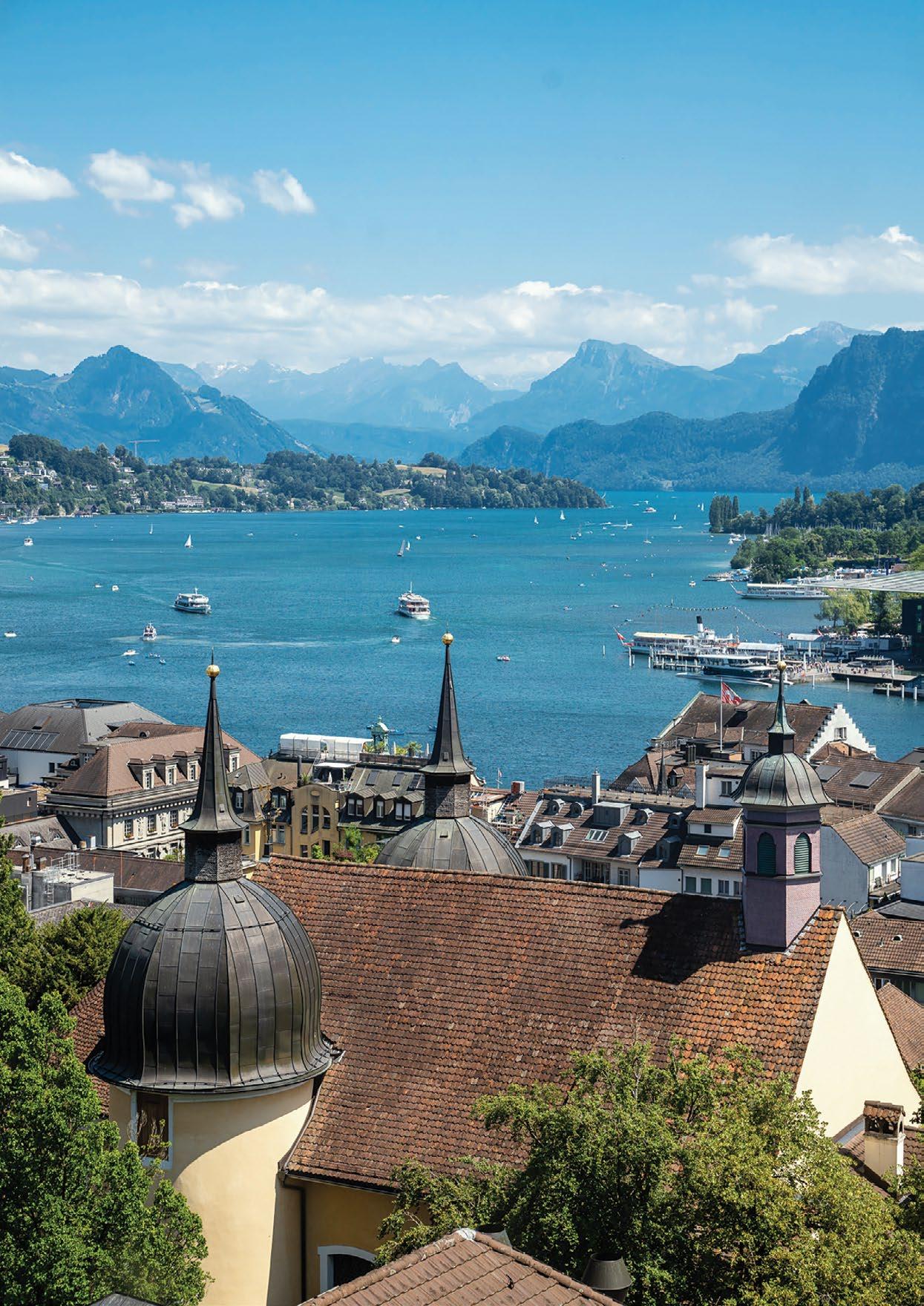

With Lake Lucerne as the fulcrum to this captivating canton, the city of Lucerne is found on the western side of this body of water, offering mountainous views, lacustrine cruises and medieval meanderings. The River Ruess runs through it, flowing out of the north-western part of Lake Lucerne. Both the city’s banks are characterised by Catholic churches, ornate guildhalls, squares of medieval antiquity and frescoed buildings. Further emboldening this Middle Age vibe are Lucerne’s last-standing wooden bridges – the Chapel Bridge (die Kapellbrücke) and the Chaff Bridge (die Spreuerbrücke). In true Alpine fashion, you’re bound to come across quite a few celebrated beer gardens in the summertime, and of course a good selection of artisanal chocolatiers dotted across the heart of the city… because nothing’s as Swiss as the good things in life.
Speaking of the good things, we were privileged enough to stay at the Hotel Vitznauerhof during our stay, which is more towards the north-eastern part of the lake (more on this with our interview with Mr Raphael Herzog!). This glorious hotel is a scenic boat trip away from Lucerne, allowing you a relaxing fifty minutes of cruising across part of Switzerland’s fourth largest lake. Boat cruises are a highly accessible form of leisurely transport in this part of the world, offering both first-class and second-class tickets to suit any budget. You still get the same spectacular views and fresh lake air, of course. One-way tickets from Vitznau to Lucerne should set you back around €16.50 (CHF 15.50), while round trips across the lake cost around €92 (CHF 86). It’s an hour’s boat ride each way, and be sure to pack sunscreen and a wind jacket - you’re going to need it!

60 - NEXT MAGAZINE - N o 20

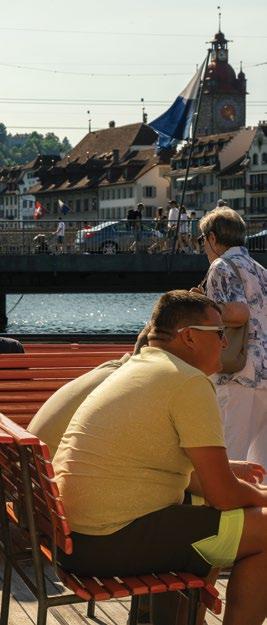

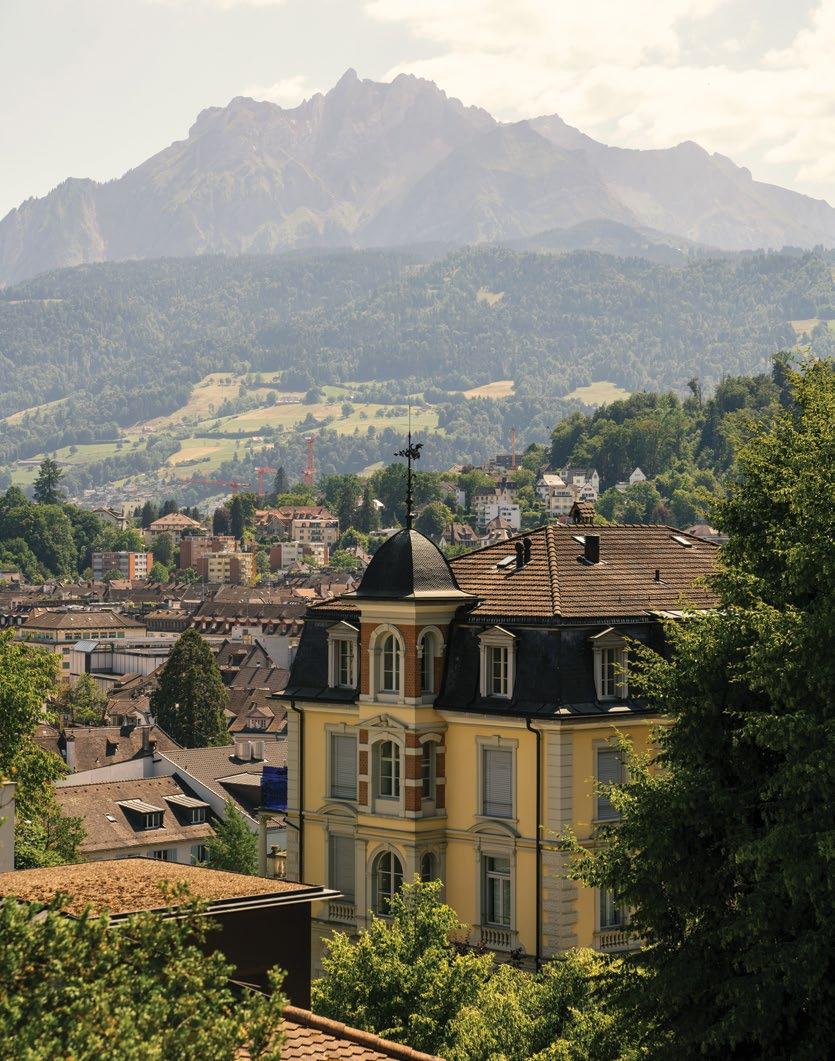
N o 20 - NEXT MAGAZINE - 61
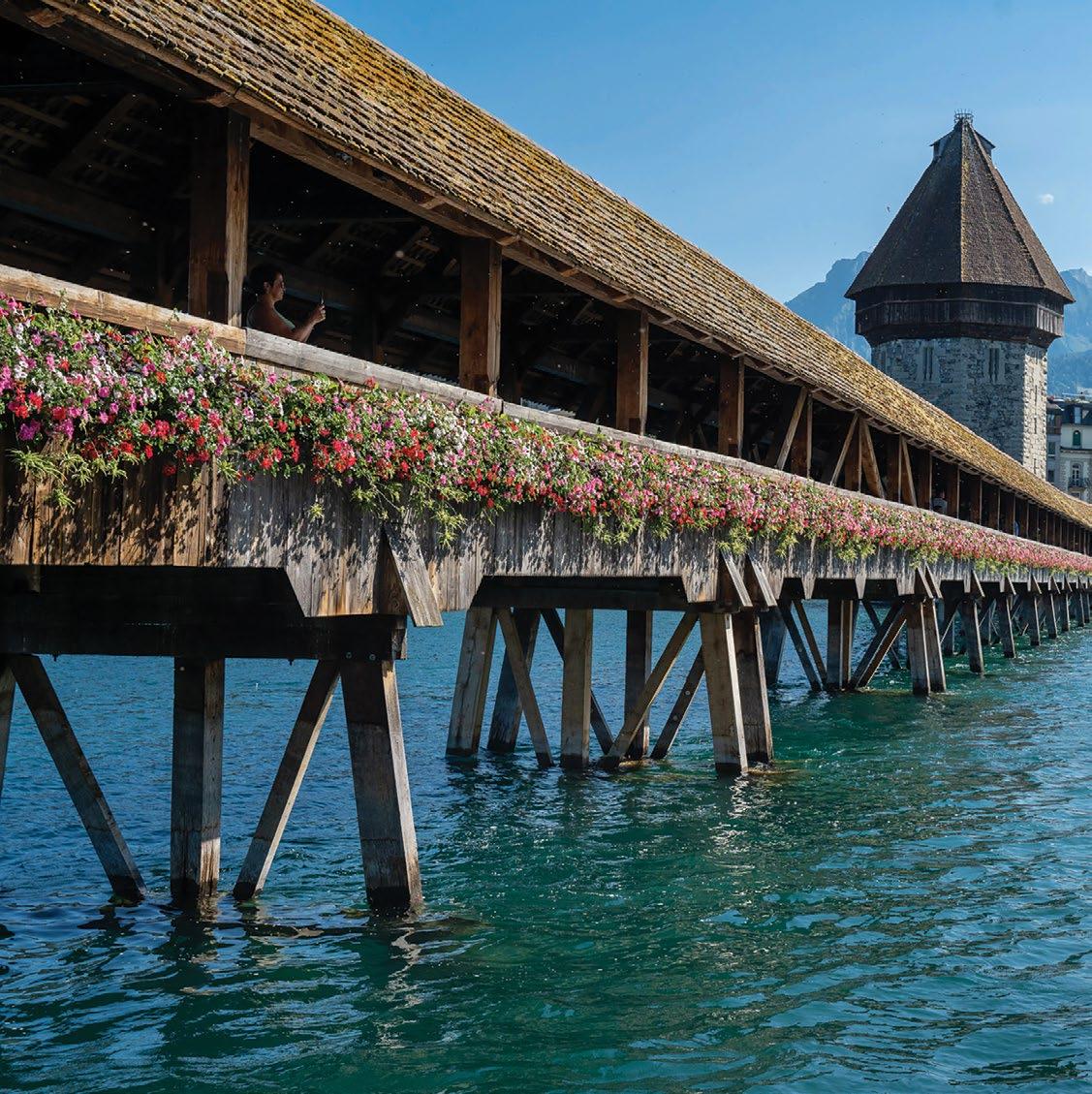
You’ll be glad to know that in true Swiss fashion, there are around fourteen direct train connections between Zurich Airport and Lucerne, with journeys taking just over an hour. For public transport in Switzerland, we highly recommend using the FAIRTIQ app, a travel solution which is by your side every step of your journey, from start to finish.
Lucerne is a historic playground. It’s a city that has preserved its past, but has nevertheless upgraded its interiors to suit its relatively young and hip population, with excellent restaurants,
cafés and bars located on the water’s edge, as well as in its quaint little alleyways. A notable attraction is the Musegg Wall and its nine towers, a remaining yet significant part of the city’s fortifications. Each tower comes with its own characteristics, but of particular note is the 31-metre Zyt Tower, featuring a clock that is large enough to be read from the lake. The tower’s bell, known as the Leodegar Bell, strikes every hour exactly a minute before all other church clocks in Lucerne. Entry is free of charge, and climbing up this fantastic structure is an invigorating activity with glorious views to enjoy at the end.
62 - NEXT MAGAZINE - N o 20 TRAVEL
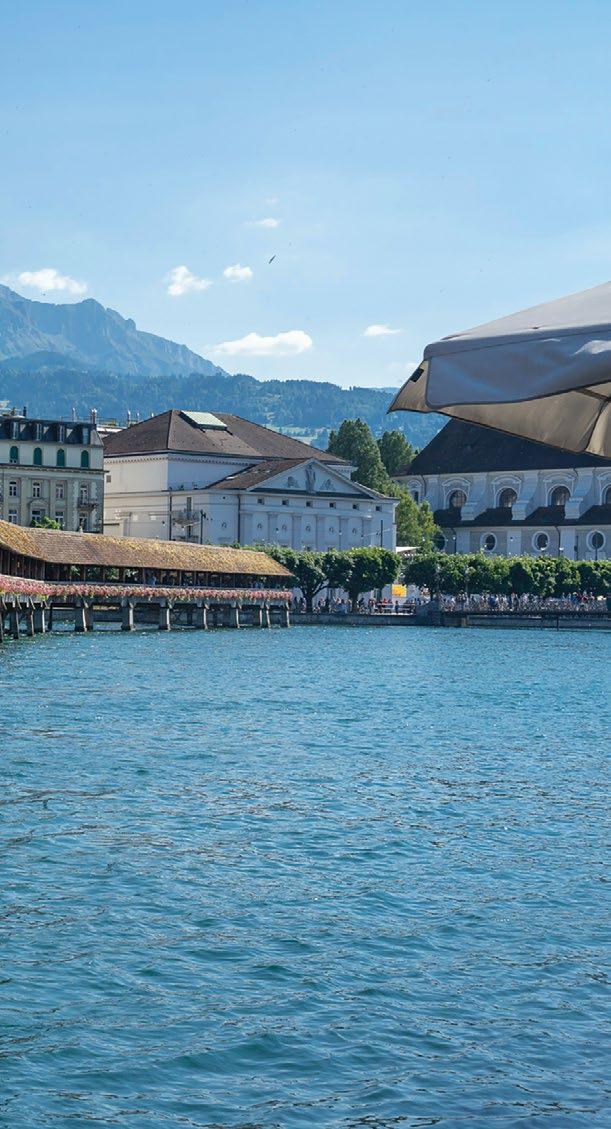
Considered to be the city’s symbol, the Chapel Bridge is a wonder to explore, not just because of its structure, but also because of the unique passage it offers from one end to the other. It is also a symbol of resilience and rebuilding, after tragedy had struck back in 1993 when a fire broke out. Its restoration was not an absolute success, but you can still enjoy what remains of its wonderful collection of interior paintings which date back to the 17th century. It is also the world’s oldest surviving truss bridge, giving you an up-close and personal experience with Lake Lucerne’s glistening surface.
Charming as it is to look upon from wooden bridges and boat rides, we found Lucerne to be as equally enchanting to explore on foot as you wander through her ancient lanes and passages. Forever under the watchful gaze of Mounts Pilatus and Rooterberg on either side of it, Lucerne treats you to a slice of the Alpine life with spectacular sights to see, culture to enjoy and treats to taste. Indeed, the fresh mountain air and the scent of the lake are certainly not the only sources of pleasure here.
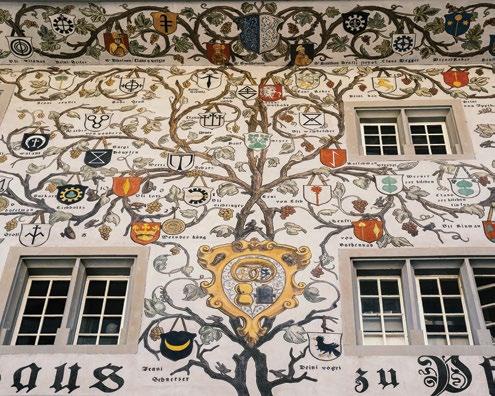

N o 20 - NEXT MAGAZINE - 63 TRAVEL

Hot on Italy’s Heel
A WEEKEND GETAWAY TO PUGLIA’S FINEST SPOTS
They call her Lo Stivale, but they’re not alluding to the exquisite boots her countrymen can craft. It’s because of her distinct peninsular shape, with her lapelled rim, pointed toe shape, and her high stiletto heel. The latter is home to many a national treasure, including a few UNESCO world heritage sites, some world-renowned cheeses, and quite a few beaches that’ll knock your socks off. We went on a road less travelled to the regions of Puglia and Basilicata for a unique Italian getaway.

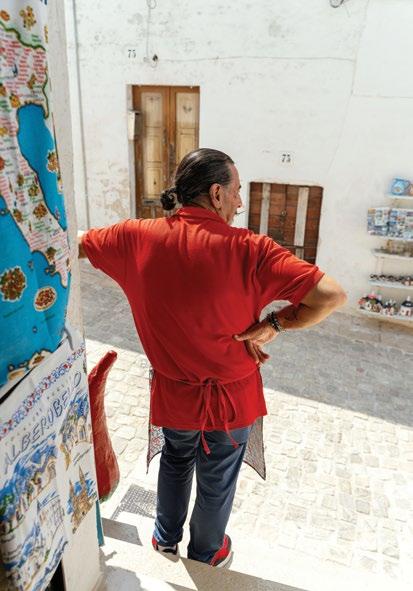
Alberobello
You’ll be glad to know that Malta’s proximity to this part of the world guarantees you highly affordable travel fare. Your closest airport to Alberobello is Bari, with return flights by Ryanair costing you no more than €100, even in peak season. The flight is no longer than an hour and fifteen minutes on a good day, and landing in Bari will also make it easier for you to get to the neighbouring towns of Alberobello and Matera.
And now, we venture. Hiring a car is your best option of travel, as this distinctive gem of a village is but an hour’s drive away from your starting point. Alberobello’s pull is its highest concentration of trulli structures, a building technique dating back to the prehistoric era. Those which are still standing today have survived since the mid-14th century, and Alberobello is characterised by 1,500 of these trulli in its quarters of Rione Monti and Aja Piccola. These architectural wonders will define your visit to this silently tranquil quarter. Sat atop white limestone houses, they are conical roofs formed by corbelled limestone slabs, and, surprisingly, they are still used as modern residences.
N o 20 - NEXT MAGAZINE - 65 TRAVEL
Words by Nicolà Abela Garrett | Photography by Julia Boikova
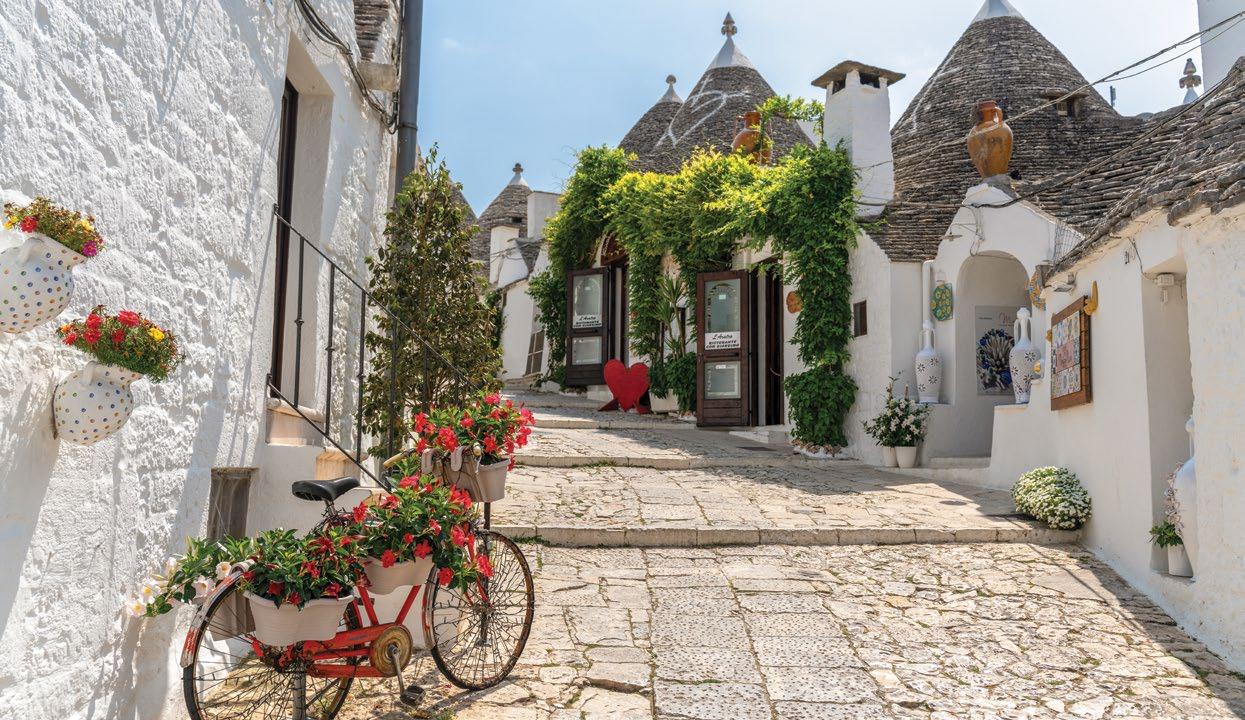

Oddly enough, they had been originally built as temporary lodgings and storage spaces during times of serfdom, and yet here they proudly stand, carpeting sun-drenched hilltops, with lush green trees punctuating their pristine pallidity and mossgrey canopies. Though they be little, they are tough and sturdy, so much so that they’re listed as a UNESCO World Heritage site. This is a place where you’ll come to meander through a labyrinth of antiquity, where time has stood still, yet not a speck of dust has settled. On your walkabouts here, you’ll metabolise

an atmosphere that’s almost out of a storybook, and you’ll be curious to see who might emerge from inside these charming dwellings. As you venture this maze, you’ll also come across numerous trulli housing bars and restaurants, all serving that much-needed sip of morning espresso as you watch the world go by, or servings of antipasti laden with fresh and local ingredients. We advise you to stick around for a sunset in Alberobello; it’s beyond magical.
66 - NEXT MAGAZINE - N o 20
TRAVEL
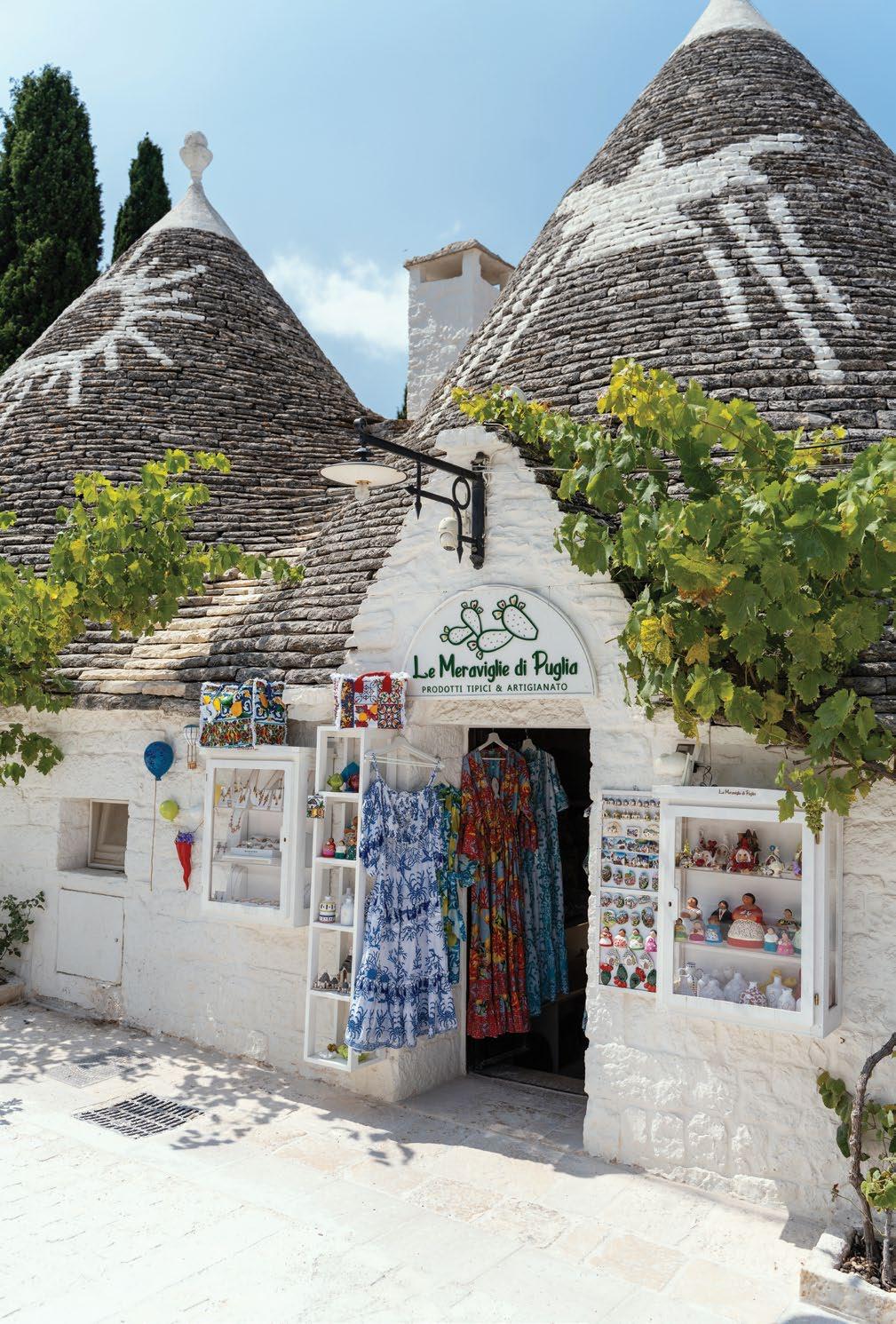
N o 20 - NEXT MAGAZINE - 67 TRAVEL

68 - NEXT MAGAZINE - N o 20 TRAVEL
Matera, Italy | Photo by Rudy Balasko
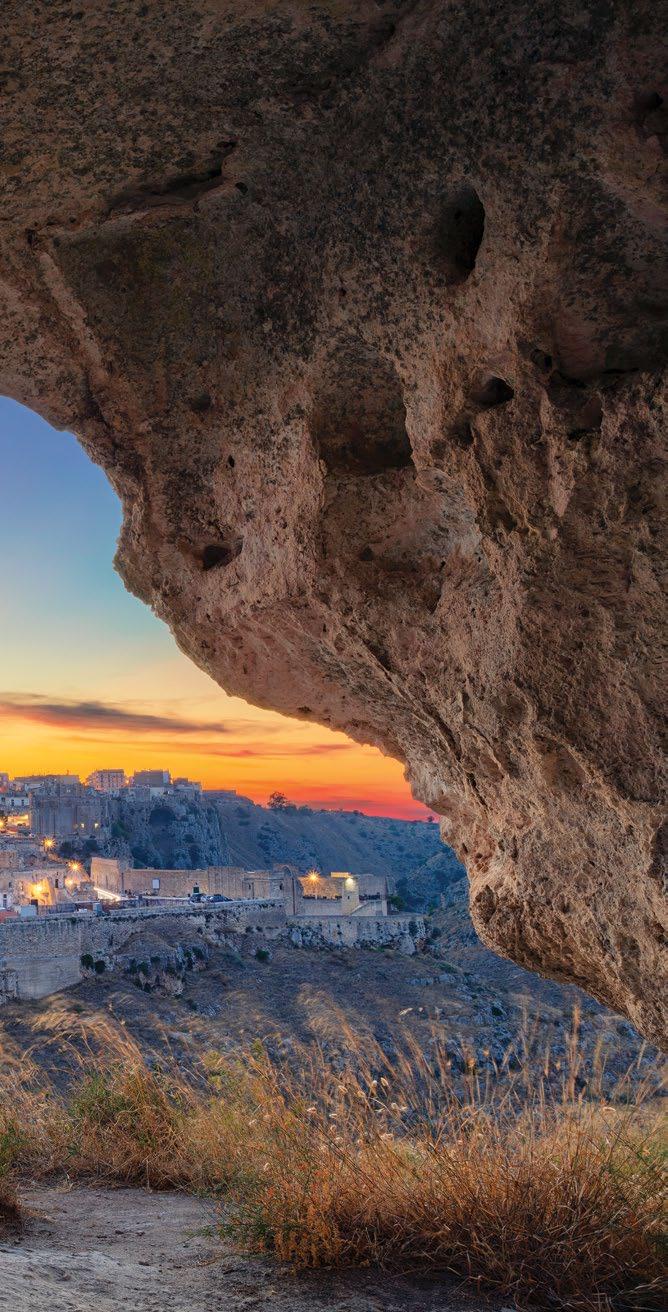
Bari
This hazy and lazy seaside town will be waiting for you upon your return from your day excursions, but it also has a few surprises of its own to explore. While its streets are studded with ancient structures such as the Castello Svevo, you can stumble upon Bari’s culinary heritage in its alleyways, where pasta grannies put in the daily elbow grease into making fresh orecchiette outside their doors. Watch these Italian queen mothers as they knead their body and souls into raw tradition, and if you want to carry on with keeping it local, you must secure a table at La Tana del Polpo, a charming side-street eatery that pays homage to the octopus and its fishy friends. This is where to come if you’re craving crudo, as their fresh seafood platter is the stuff of dreams.

N o 20 - NEXT MAGAZINE - 69
TRAVEL
La Tana del Polpo Restaurant
Matera
From Alberobello, you can cross the boundary that is the Gravina river and enter the region of Basilicata, where lies more hilltop splendour in the province of Matera. This town is deserving of this adjective, especially considering its rags-to-riches history that will leave you gobsmacked. It’s also a movie star in its own right, having served as a location for Passion of the Christ and Ben Hur, so this should certainly draw you in. Such Catholicthemed stories are fitting for such a town, as you’ll notice a high concentration of ornate churches during your excursion of Matera. Each place of worship here presents a heady spirituality, one that reverberates across the rocks and caves that form this fascinating corner of the world. It’s quite telling that its habitants are a deeply religious community whose beliefs are rooted in the foundations of this town.
Passion of the Christ and Ben Hur, Catholic-
If you’re in the mood for a pilgrimage, Matera offers the perfect canvas for hiking and terrestrial walks. Everywhere you turn, you’re promised an awe-inspiring view of this city of caves, which up until 1952, served as actual dwellings for one of Italy’s poorest communities. So bereft was this village – no running water, no electricity or plumbing – that the inhabitants were evacuated to another town, so that the area may be properly developed and rendered habitable. But Matera certainly doesn’t want to forget its past, and is keen to recollect its history through micromuseums illustrating how people lived here, crammed into the same damp space as their livestock, in a network of caves that was sadly rife with malaria.
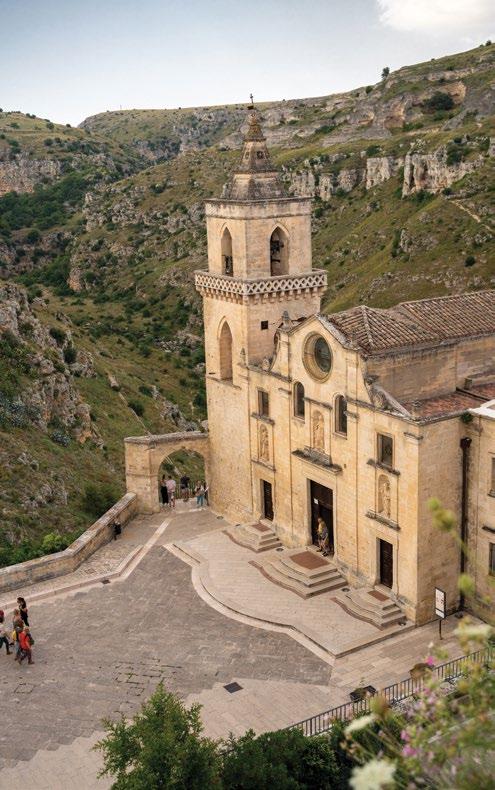
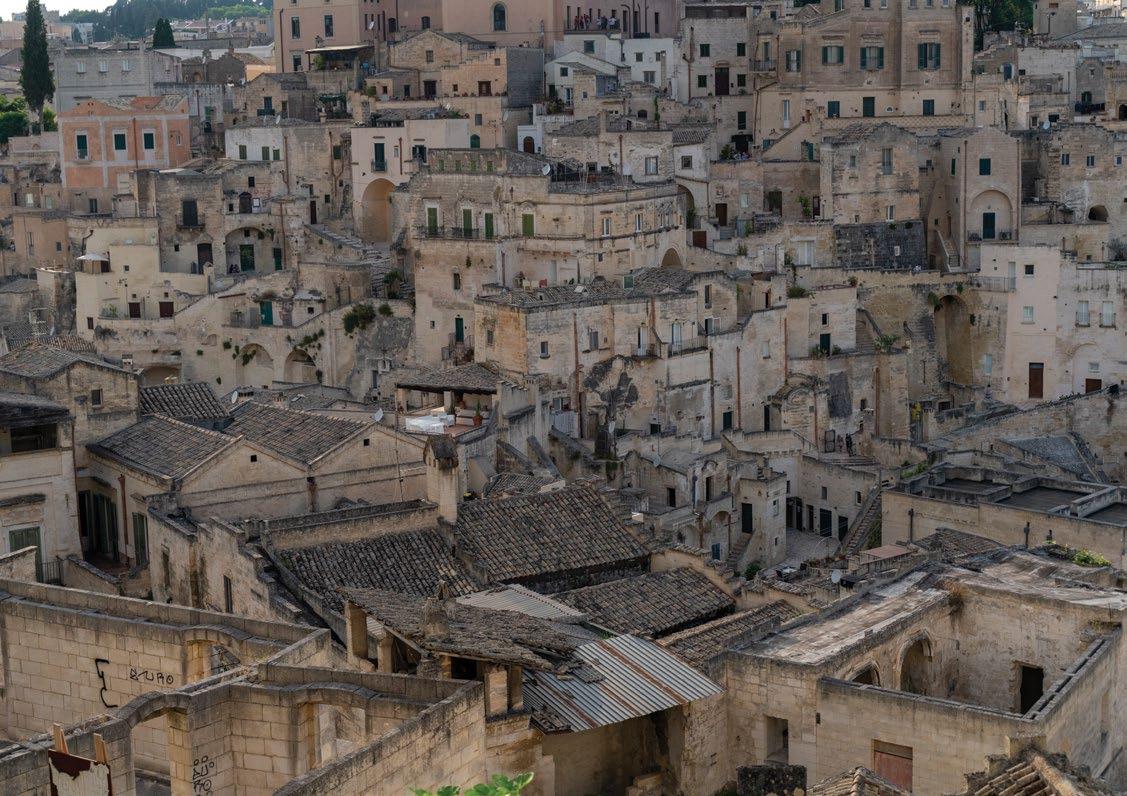
TRAVEL
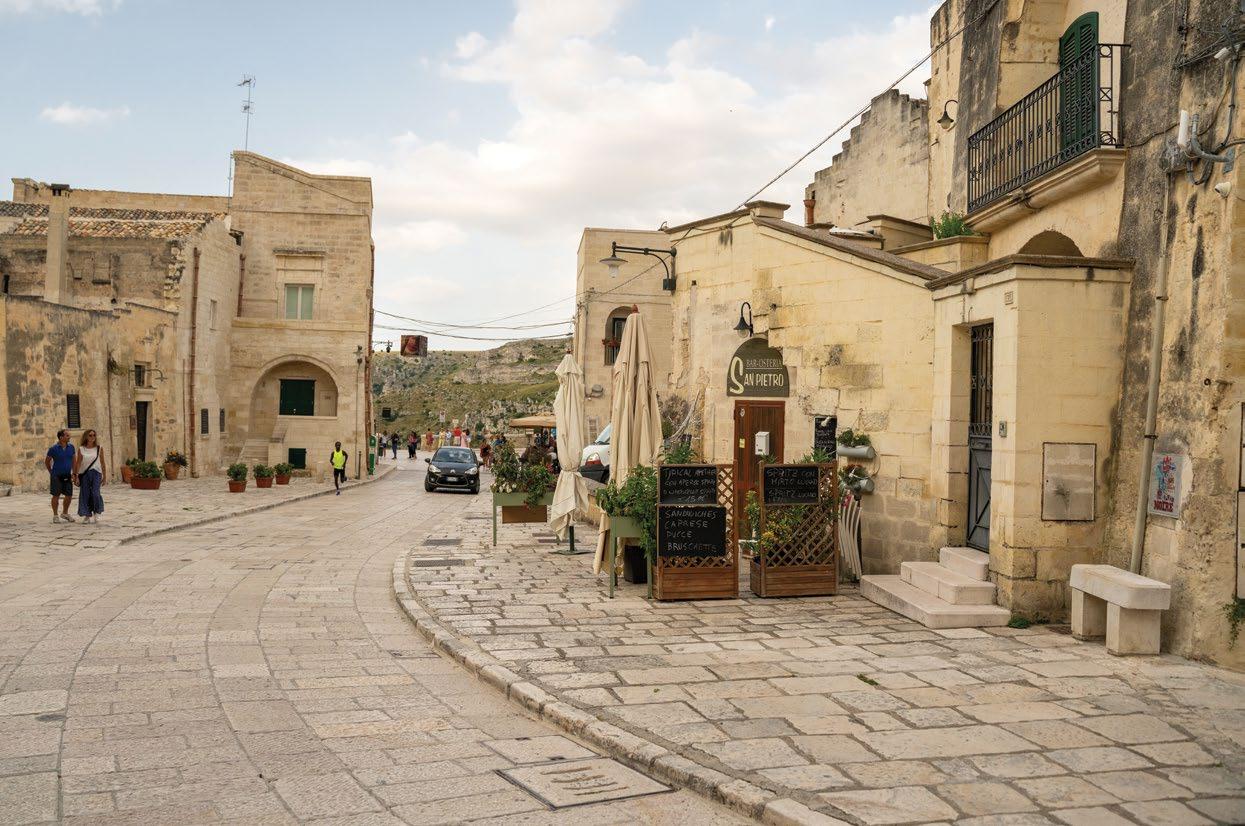

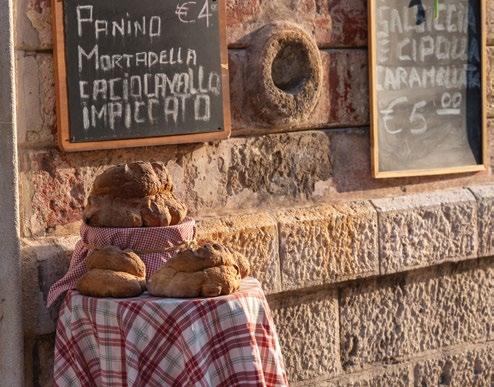
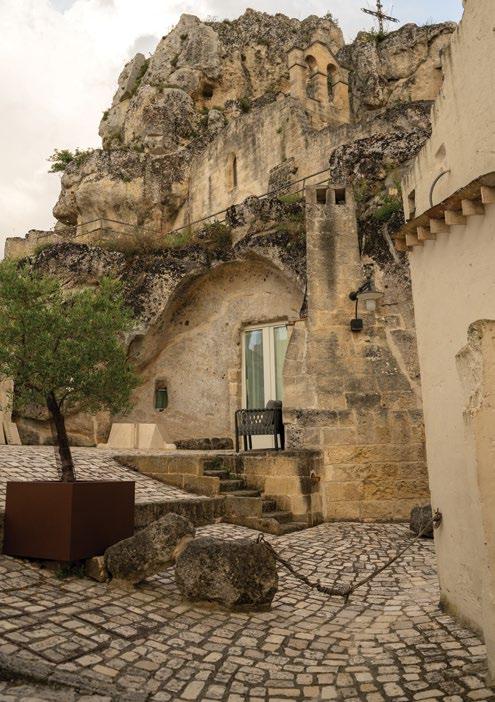
But what a glow up. Some of these Paleolithic caves have now been transformed into remarkable boutique stay houses, and from the ‘shame of Italy’, Matera was crowned the European City of Culture in 2019. It is a geographic wonder to behold; an urban hub cut into rock, identified by its two districts – Sasso Caveoso and Sasso Barisano. Cave dining is sure to sound appealing to any foodie out there, and it’s also a great spot for cheap eats. Whether it’s a humble pizza you’re after or quintessential Basilicata cuisine in the heart of a cave, Matera will not let you go hungry. As far as walkies, be ready for steps and staircases, but we assure you it’s an arduous ascent to panoramic paradise here.
N o 20 - NEXT MAGAZINE - 71

Venetian Bites
RISTORANTE ADRIATICO AT IL PALAZZO EXPERIMENTAL
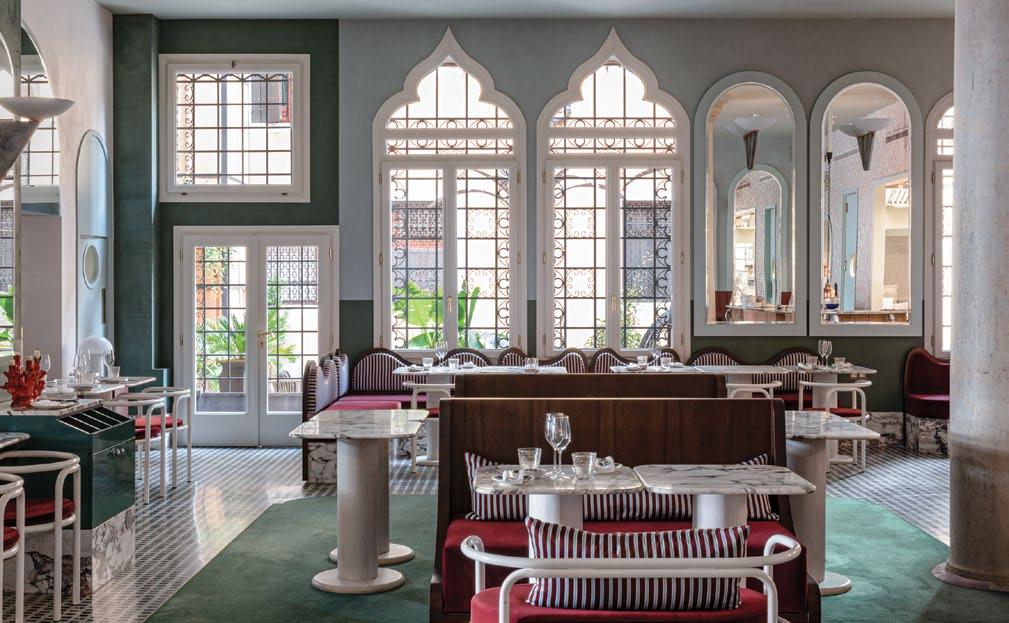 Words by Nicolà Abela Garrett | Photography by Il Palazzo Experimental
Words by Nicolà Abela Garrett | Photography by Il Palazzo Experimental
For those visiting Venice, serenity may come to some as an aquatic haze that hits them the minute they walk out of Santa Lucia Station. For others, it’s served as an open-faced sandwich, colloquially termed cicchetti. Meanwhile, for the lucky few, it takes the form of a guest suite at the Palazzo Experimental, the sixth instalment in the Experimental Group story, and the first in Italy. Our previous visit to La Serenissima’s jewel of hospitality had focused on the fabulous finishings of interior designer Dorothée Meilichzon. Today, we’ve come armed with a knife and fork to capture the wetland flavours of Ristorante Adriatica..
N o 20 - NEXT MAGAZINE - 73
TRAVEL
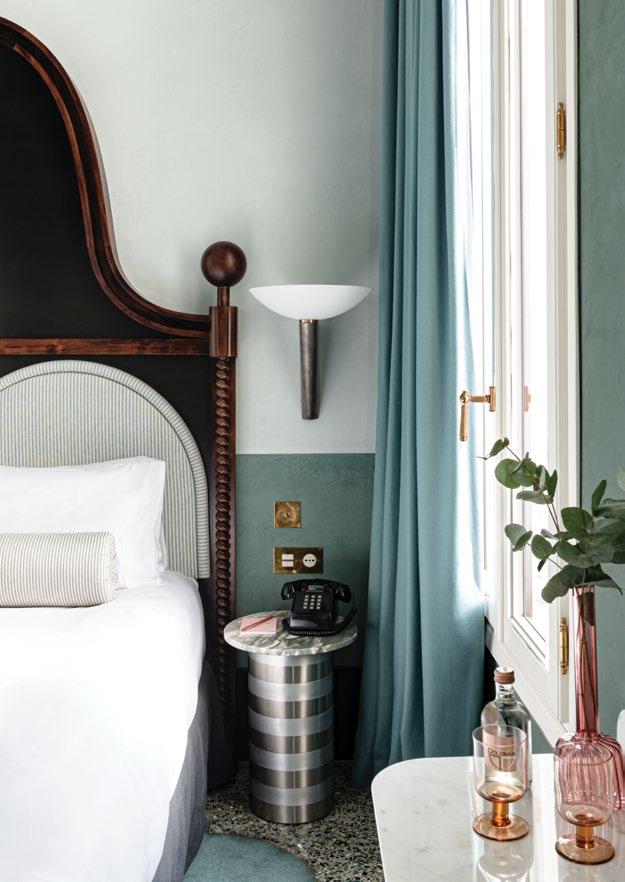
But this is not to say that we won’t be sitting in the presence of Meilichzon’s great work. The designer’s signature imprint surrounds you at every corner of this hotel, much to the pleasure of residing culture vultures and curious visitors alike. The Ristorante Adriatica is a place that dines those who are hungry for a Venice that’s off the beaten track, and those who want a sniff of where her cool kids hang out… but still be within walking distance of Piazza San Marco and Chiesa di San Simeon Piccolo. Those never get old, come on.
Nothing brightens up a room quite like Venetian daylight. The filteresque quality of the island’s permanent vapour and its scent is so particular, not to mention magical. Even Hermès felt the need to bottle it in their Un Jardin sur la Lagune. This atmosphere permeates Ristorante Adriatica, as the light of the lagoon comes through and bounces off the hanging mirrors of this affable eatery, courtesy of Meilichzon herself. As many can attest, Venice is beguiling but crowded, and we’re not just talking about the swarms of tourists. The city is a watery labyrinth of narrow streets and alleyways, and although you’ll marvel at the antiquity of her buildings, you’ll often find yourself strapped for personal space, or one false move away from almost falling into a canal.
So, Il Palazzo Experimental’s expansive piazza - overlooking the vast body of water that is the Giudecca Canal - is a welcome change once you prize yourself away from the hustle and bustle, and the hotel and restaurant’s interiors are an oasis of calm if you ever needed one, with the inside offering palatial serenità. Ristorante Adriatica is a quaint and almost Mary Quant space, and rather reminiscent of a Wes Anderson set, minus the chaos of his plots, but no less charming. The splendid windows have a touch of the Arabian Nights to them, but we must remember the building’s ancient Venetian past.
Speaking of our host, guests will appreciate the striped soft furnishings of the booths, perhaps a nod towards the four hundred gondoliers who navigate the waterways of Venice in their trademark uniforms. Only Meilichzon has gone for a plush red stripe in her cushions, while your esteemed waiters and mixologists have remained loyal to the traditional navy. The crockery follows the same theme, while your glassware is a kelp-ish green, no doubt in honour of Venice’s mysterious waters.

74 - NEXT MAGAZINE - N o 20

N o 20 - NEXT MAGAZINE - 75 TRAVEL
But all this observation has made us hungry. Our gastronomic gondolier at Ristorante Adriatica is Chef Denis Begiqi, who creates a velouté of local and seasonal ingredients with the traditions of the Venetian kitchen. There’s culinary exploration here, with the Head Chef delicately stirring the pot with his rowing oar. But nevertheless, this menu is unequivocally Italian. The country’s Lamon beans and ever faithful chicory accompany a succulent beef sirloin, while three pasta shapes serve up three delectable Italian experiences on your plate. A swirl of spaghetti swims in a selection of briny vongole and salty samphire, while bucatini champion Italy’s longstanding support of the vegetarian way of life, with a saucy cream of rapini, buttermilk, lemon and chilli.
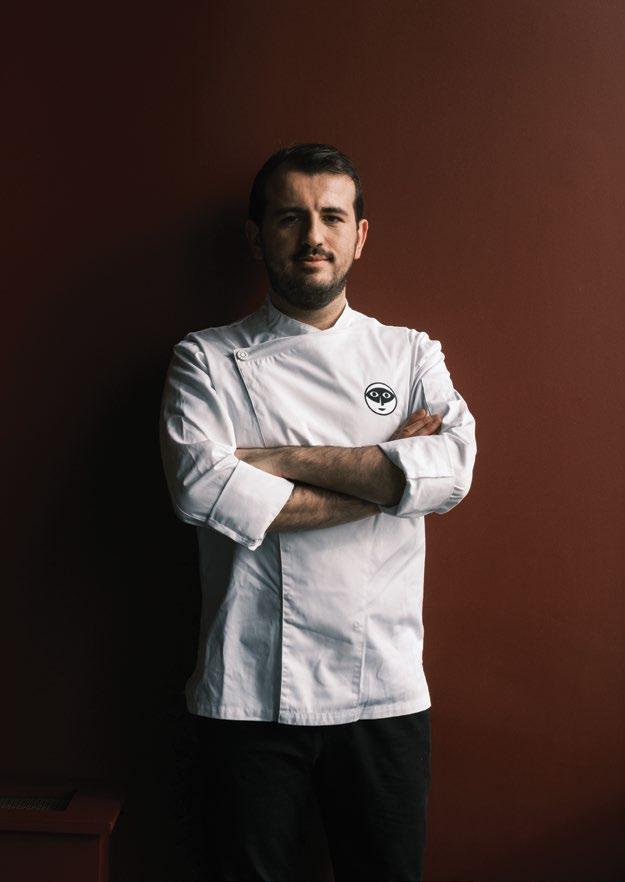

TRAVEL

But for all this experimentation, Chef Denis Begiqi keeps it local with a selection of mixed cicchetti to start off your meal with. This is the chef’s personal interpretation of Venice’s iconic finger food, and guests will be delightfully surprised with these little parcels of flavour. Before, or indeed after your meal at Ristorante Adriatica, it is essential that you pay homage to the Experimental Group’s roots in mixology, and indulge a little at the Experimental Cocktail Club Venice for bespoke recipes inspired by your riparian surroundings. We’d especially go for the Upside Down, which incorporates artichoke in its concoction. After all, few can resist the Italian flower, whatever shape or form it may come in.
Il Palazzo Experimental embodies so much of what Venice is all about. It is grandeur that homes a theatrical playfulness, from its pastiche and pop art interiors to the boldness of its head chef, to the artfulness of its cocktail bar, altogether brimming with Italian charm.

TRAVEL

Hotel Vitznauerhof
GENERATING A NEW AGE OF ALPINE HOSPITALITY
TRAVEL
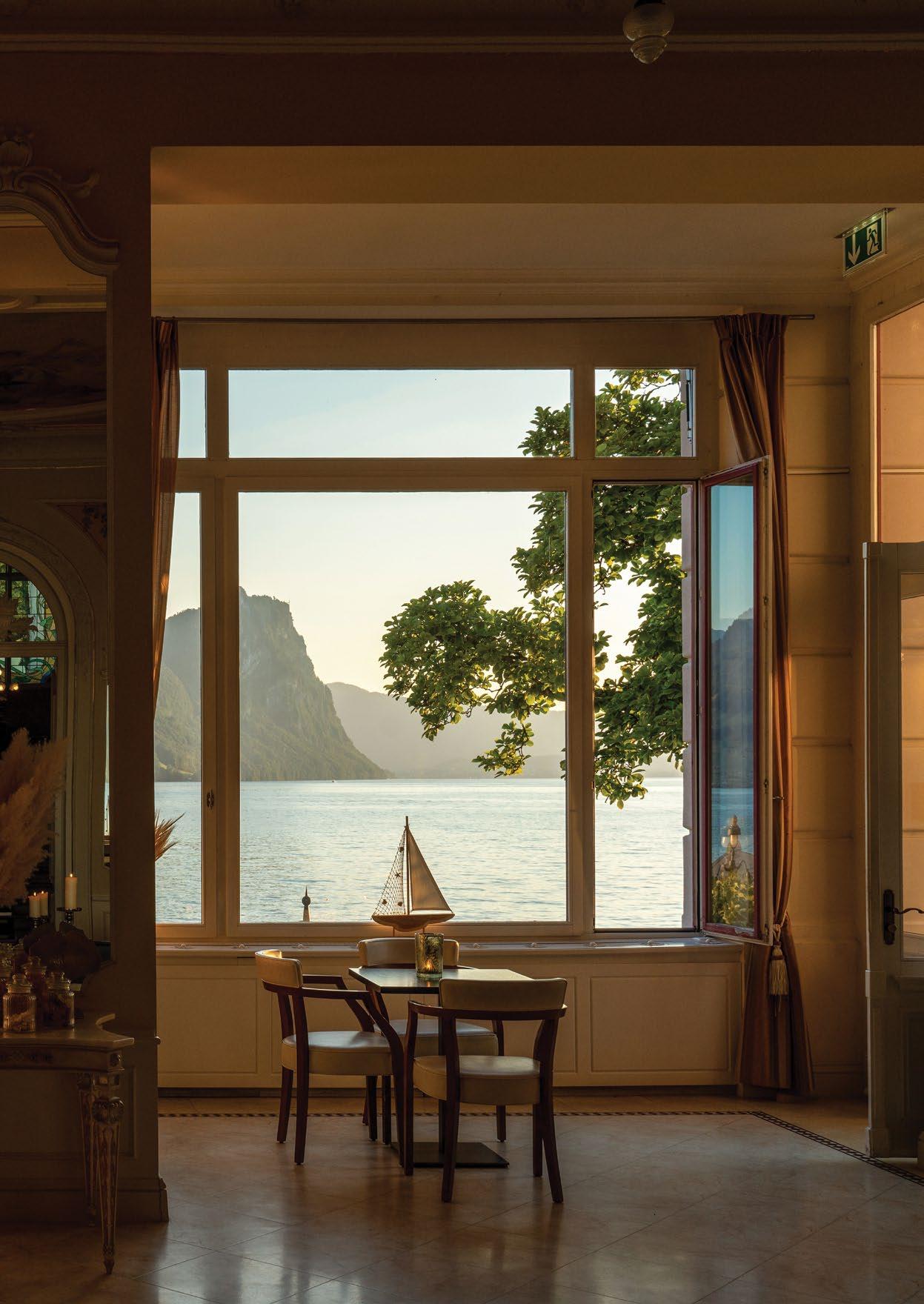
TRAVEL

The Summer of 2018 marked a new chapter of management for Hotel Vitznauerhof, ringing in the auspicious expertise of hotelier Raphael Herzog and his exceptional team. A revered hotel director in his own right, Herzog is here to channel the Vitznauerhof’s legacy of luxury through his vision and leadership, with a more forward-thinking twist to Alpine holidaying. During our soothing stay at this Lucerne landmark, we had the opportunity to get an insight into Herzog’s approach to Swiss hospitality.
We’re sat by the water’s edge on the pier at the hotel’s inhouse restaurant, Inspiration. Come summertime, as is now custom for the Viztnauerhof, two Michelin-star chefs will be gracing this eatery with a short stint of pop-up haute cuisine. One half of this residency will be taken up by Chef Marcel Koolen from 7132 Silver in Vals, who’ll be serving up both of his Michelin stars to the hotel’s diners. This running residency is already a mark of excellence for any guest here, and the atmosphere further reinforces the luxury to come.
The lapping of the lake against Vitznauerhof’s shore provides the restaurant and its hotel with its ambient music - a supplement to this 4-star’s Alpine wellness mission to heal and rejuvenate its visitors. Speaking of rejuvenation, I’m served a refreshing libation of Alpine herbs by Raphael’s welcoming member of staff… not that it was necessary in such calming surroundings. Raphael asks for feedback on what I’ve just been served, but without that uncomfortable sense of desperation to perform hospitality to an omnipresent superior one often encounters in such environments.
Our conversation reveals that Raphael Herzog is not interested in performing hospitality; rather, he is fully intent on it coming from a place of truth. “I want my staff to be themselves and honest with my guests. They shouldn’t have to stick to some curated script that obliges them to promote the clichés of Lucerne. If they don’t like climbing Rigi or other hiking activities, they don’t have
to up-sell these things to the guests, and they can be honest about their opinion.”
It's obvious that Raphael’s staff is at the heart of everything he does here. He has in fact all but done away with the rigidity of the past that has often come to epitomise silver service. As a manager, he encourages his staff members’ sense of individuality, and, as an educator to the next generation of hoteliers, he recognises Gen Z’s prioritisation of self-expression and self-care. “Our team members are relatively young, and this is a generation that wants to be themselves. We encourage this here.” Such is the extent of these values at Vitznauerhof, that staff can choose to customise their uniform in terms of the fit and style of their trousers; whatever works for them. Housekeeping even have a special jacket with multifunctional pockets to make their job easier and swifter.
“I like to make a distinction between the hardware and the software of the hotel industry. The hardware is the physical space with all its amenities and the present guests. The software is the staff - those who enable the industry’s hardware, who bring it to life.” Indeed, Herzog likes to keep his software in working order, with several perks dished out to the team. They benefit from family discounts on Rigi transport and local restaurants, personal trainer sessions, wakeboarding outings, a director’s full breakfast buffet a few times a month, as well as events to get people from all departments mingling.
80 - NEXT MAGAZINE - N o 20
Words by Nicolà Abela Garrett | Photography by Julia Boikova
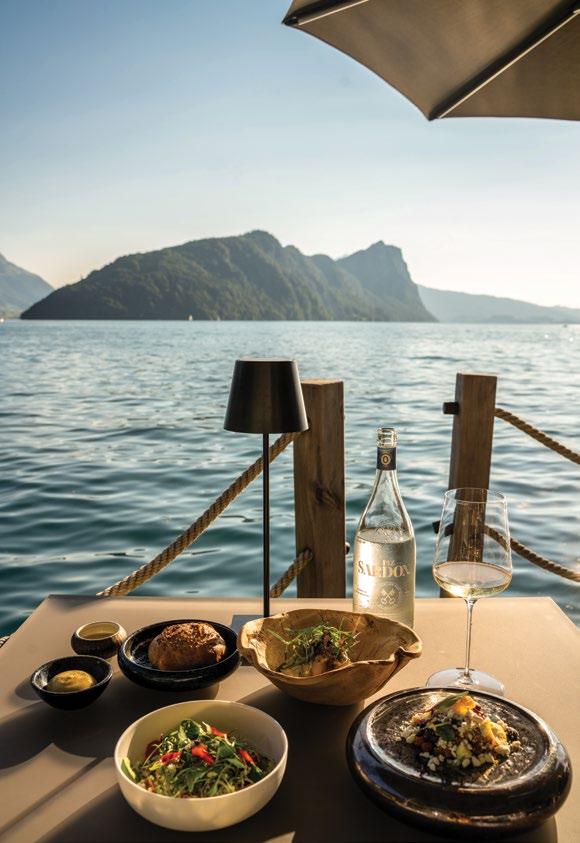


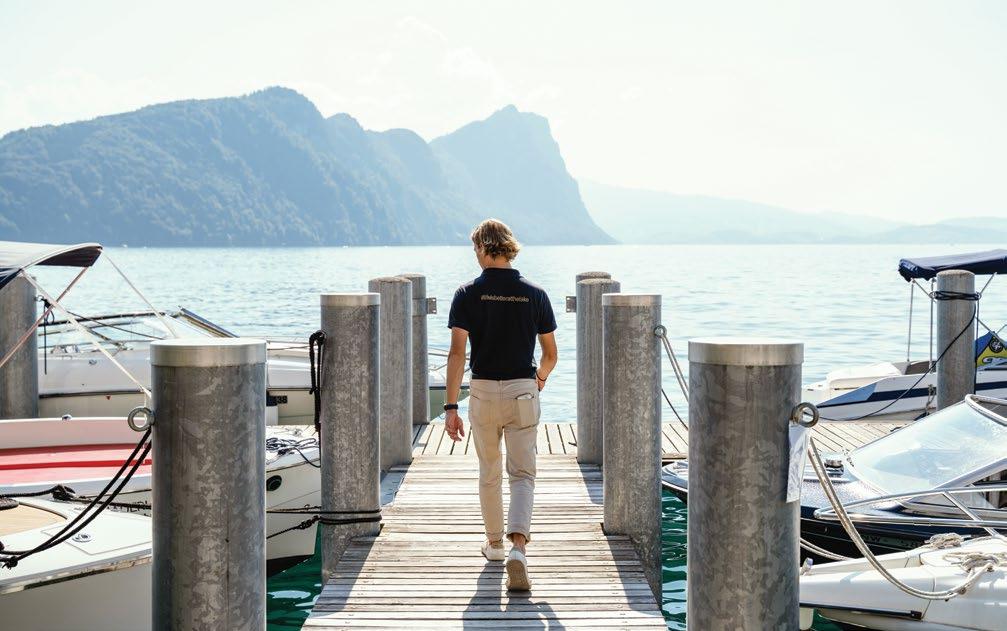
N o 20 - NEXT MAGAZINE - 81 TRAVEL
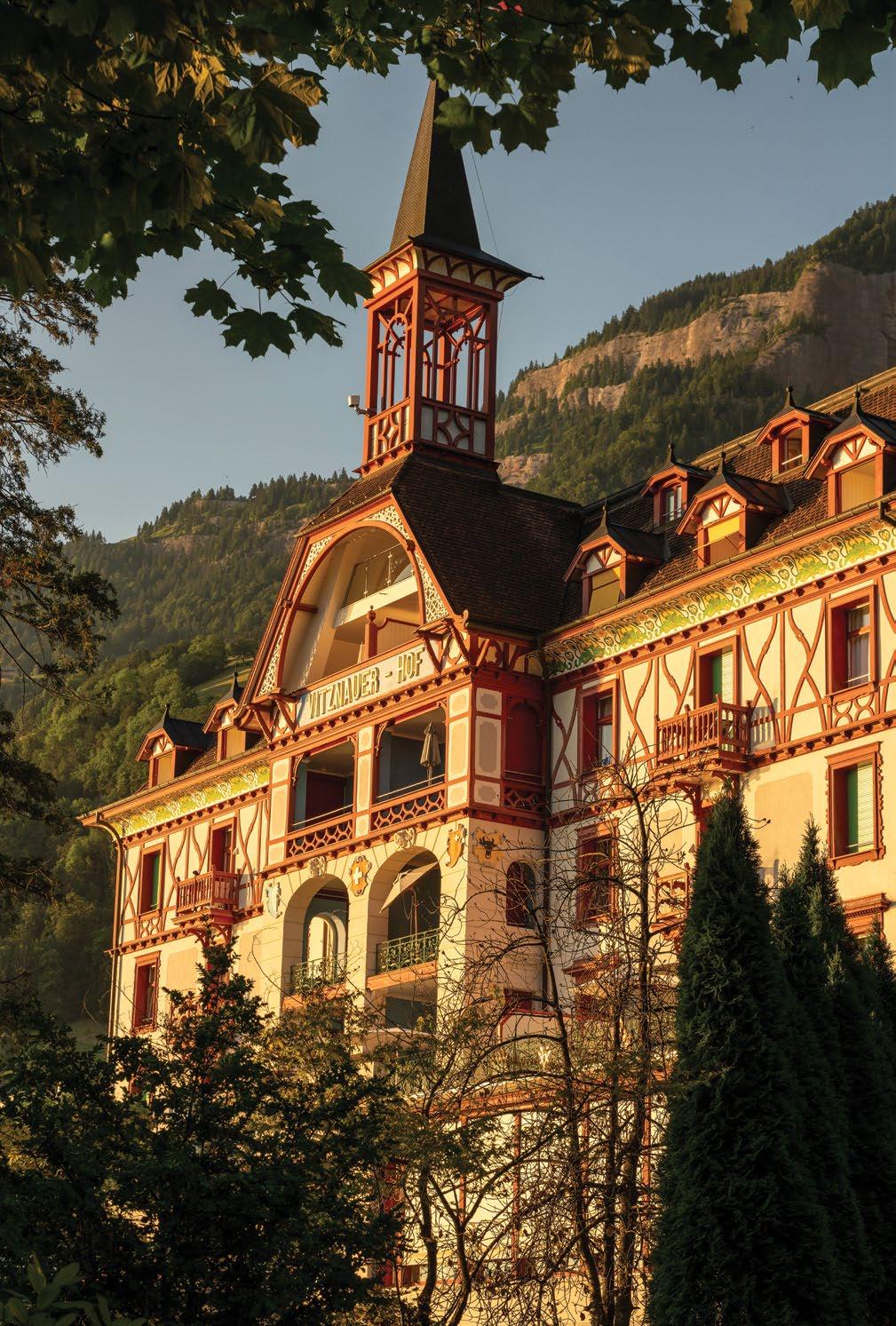
82 - NEXT MAGAZINE - N o 20 TRAVEL
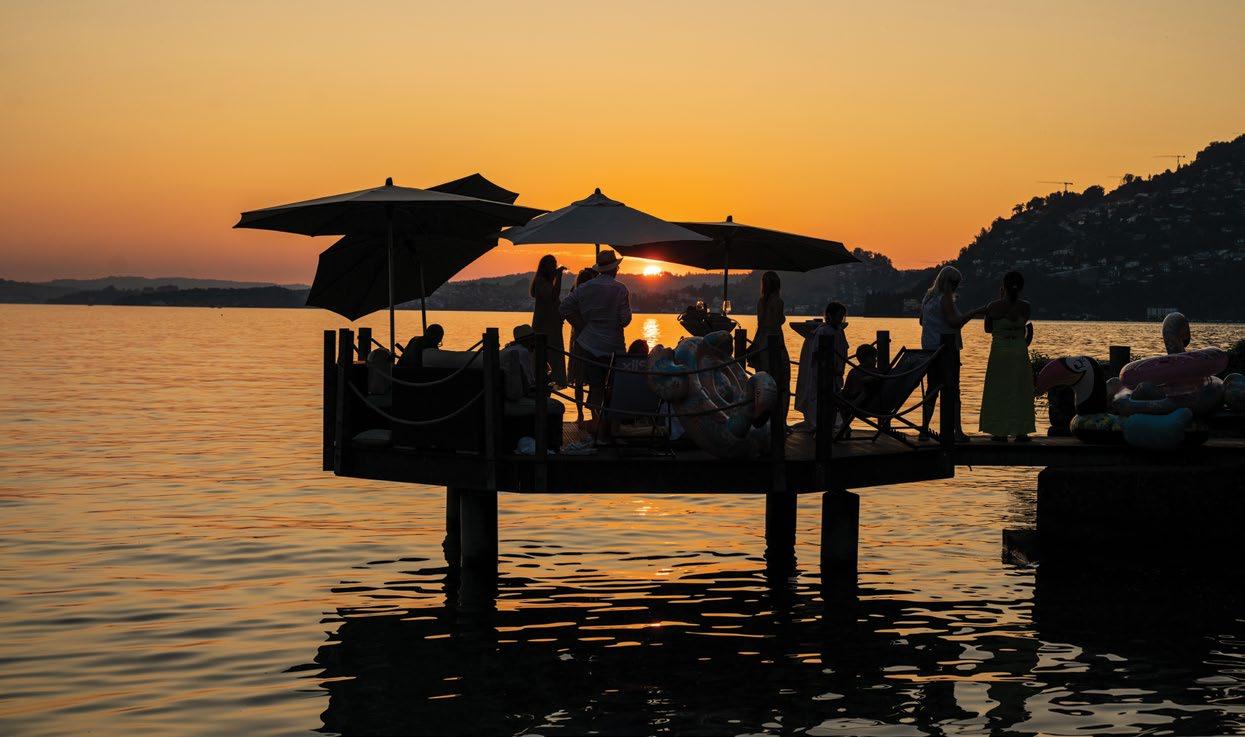
Raphael also takes into account the real problems encountered in this high-pressured industry. For example, a collaboration between the hotel and a private rehab clinic leaves staff members privy to advice and intervention talks on substance abuse, and Raphael even takes it upon himself to help his international team navigate the bureaucracies of nomadic work. “I involve people. Of course, I have to make the final decision, otherwise everything would remain on hold, but I’m very open to the different opinions within the Vitznauerhof family. My open-door policy generates a positive result, and I support my team as much as I can.”
Despite his contemporary approach, Raphael is building upon a 120-year history of elite holidaying, one that was influenced by Queen Victoria herself back in 1868… “the first influencer, so to speak,” remarks Herzog. It was she who had kickstarted the fashion of respiting oneself to this part of the world, generating high-end tourism in this once isolated fishing village. It then became dotted with opulent hotels and chalets servicing the rich and powerful. However, most of these had perished in time, due to their flammable nature. But Switzerland likes to adhere to its trademarks, and Hotel Vitznauerhof is a shining example of the regeneration of traditional architecture. Over the years, this
chalet-style structure with its art nouveau interiors has served as a superb retreat for celebrities such as Princess Gina von Liechtenstein and Richard Strauss.
This aspect of old-school luxury can be experienced in the hotel cigar and whiskey room, which once served as a revered hotel bar back in the day. “It’s our very own smoker’s lounge. It’s unique in Switzerland, in that smoking has been banned in all public spaces and restaurants, except for this part of the country. It takes on a very quiet atmosphere during the summer season, but in the colder months, it’s a popular area to congregate in.”
But perhaps the lure of the outdoors here is too strong, and Raphael Herzog’s team is here to deliver all the required ancillaries. Your stay here comes with one of the most medicallycharged spas on the international menu, as well as outdoor services such as glamping, paddle boarding, electric scooters, and touring motorboats with a skipper. And if you want to bring the indoors outdoors, there’s also a sauna-gondola located on the hotel’s private beach. Now, this is Alpine luxury that’s made us feel at home.
N o 20 - NEXT MAGAZINE - 83 TRAVEL

MARIO

ABELA
N o 20 - NEXT MAGAZINE - 85 ART

Mario Abela, a contemporary artist from Gozo - Malta, explores the intricate relationship between humanity and nature in our modern age. Through his artworks, Abela invites us to ponder the delicate balance and profound interdependence that sustains life on Earth. He encourages us to recognise the interconnected web of existence, where all living beings coexist and evolve within a shared ecosystem.
Growing up in Gozo, Abela brings a unique perspective shaped by his surroundings. He believes in presenting narratives with drama and intensity, making them more captivating and thoughtprovoking. Despite drawing inspiration from Baroque influences, Abela's art is firmly rooted in the present. He addresses pressing issues of our time, particularly humanity's impact on the environment during the Anthropocene era — a period characterised by human dominance and ecological uncertainty.
Abela challenges viewers to perceive the world differently. He urges us to break away from conventional ways of understanding
and to embrace new perspectives. By doing so, he aims to deepen our appreciation of life's complexity. His artworks often employ symbolic imagery that conveys movement and transformation, symbolising the dynamic interaction between human activities and the natural world. Through his art, Abela highlights the delicate equilibrium between human civilisation and the environment.
His artistic vision transcends geographical and cultural boundaries, resonating with audiences worldwide. His work serves as a poignant reminder of the interconnectedness of life and the urgency of addressing environmental issues. Through his art, Abela seeks to inspire positive change and foster a greater sense of environmental stewardship among viewers. By blending artistic expression with critical environmental themes, Abela's work encourages us to confront the challenges of the Anthropocene with creativity and empathy. He challenges us to rethink our relationship with nature and to embrace a more harmonious coexistence with the natural world.
86 - NEXT MAGAZINE - N o 20 ART


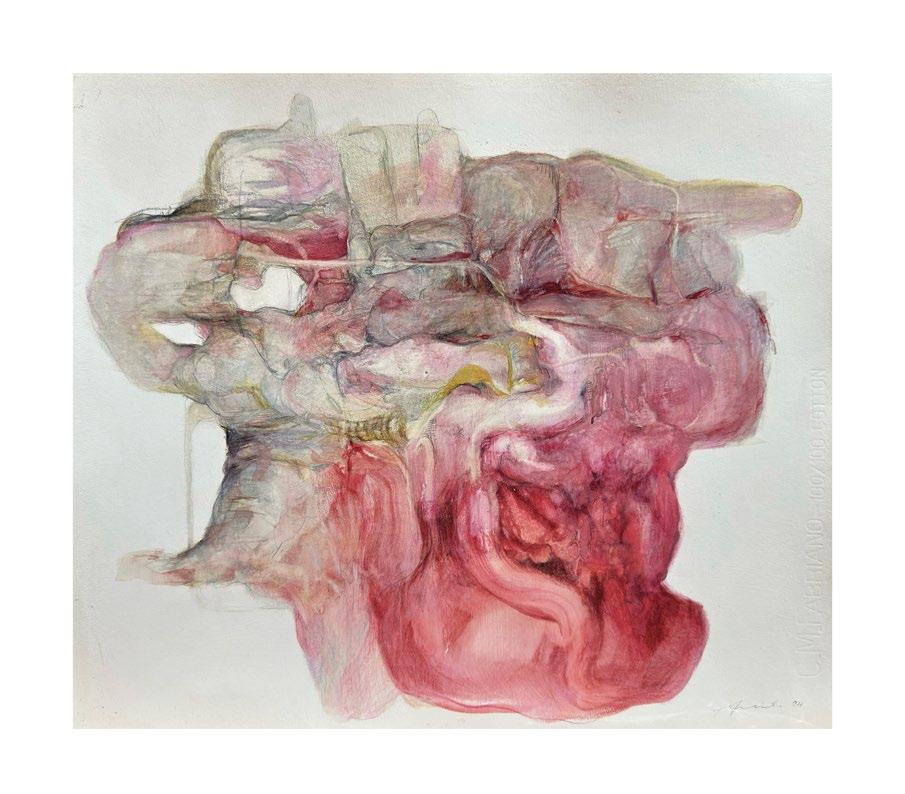
88 - NEXT MAGAZINE - N o 20 ART

In essence, Mario Abela's artistic journey prompts us to reflect on our relationship with nature and the responsibilities it entails. His work encourages us to reconsider our role in the Anthropocene and to adopt a more empathetic and sustainable approach to living on Earth. Abela's art invites us to contemplate our place within the broader ecosystem and the connections that bind us to nature—a message that resonates deeply in today's world grappling with environmental crises.
Mario Abela is a Gozitan artist whose works draw from diverse mediums and techniques, mainly painting, drawing and collage. His background is in art and history education, and digital arts.
Abela has received numerous accolades throughout his career. These include being longlisted for the 2018 Aesthetica Art Prize (USA). He was also a finalist for the Spring 2023 - Hopper Art Prize (USA), among others. His works have been exhibited in various group and solo shows such as ‘Wood Love Some Space’ (2015) at Art..e Gallery, ‘Dislocated Geographies’ (2018) at Spazju Kreattiv, ‘Leave at Dawn - Return by Dusk’ (2019) at Vini e Capricci and ‘Shadows of a Wanderer’ (2023) an online media exhibition.
Abela is a senior lecturer by profession at the Malta College of Arts, Science & Technology - Institute for the Creative Arts.
www.abelamario.com | abela_mario
N o 20 - NEXT MAGAZINE - 89 ART
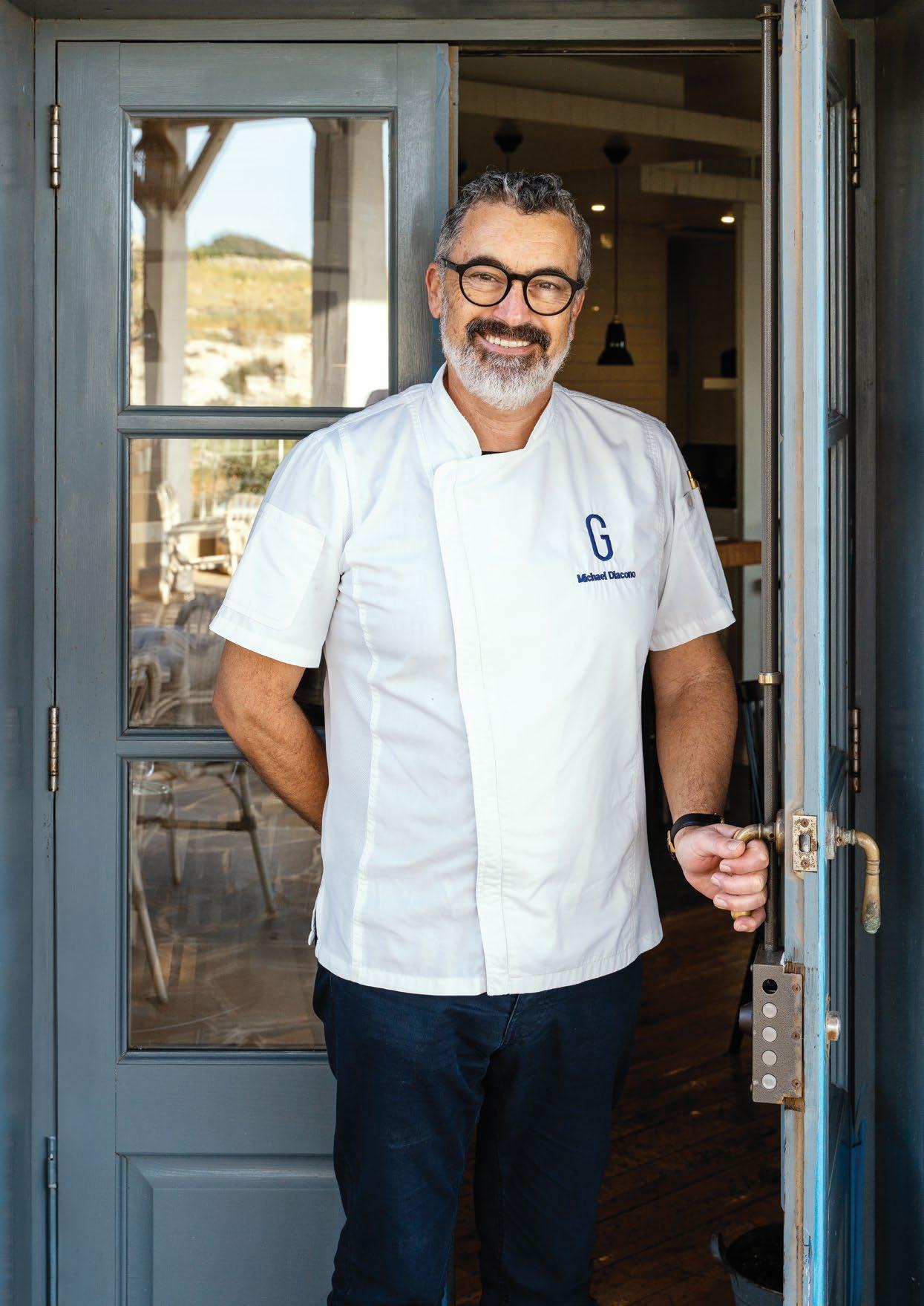
Recipes by Michael Diacono

Michael Diacono's passion for food and cooking ignited during his formative years. Growing up in a bustling Maltese household, where the kitchen was always abuzz with activity, he naturally gravitated towards culinary pursuits. However, his journey into the world of catering unfolded later when his family acquired a prominent restaurant in St Julian’s. During his sixth form years, Michael found himself immersed in the culinary realm, working part-time during summers, an experience that unveiled a new world of possibilities.
As his siblings took the reins of Giuseppi’s in Mellieħa, Michael embarked on his full-time career in the kitchen at the tender age of 18. From there, his trajectory was one of constant growth and evolution. Fifteen years ago, alongside
his brother Karl, he assumed ownership of Rubino, marking a significant milestone in his culinary journey. Subsequently, seven years ago, he ventured into a partnership with his nephew Chris, relocating Giuseppi’s to the Salini Resort.
Throughout the years, Michael has not only honed his culinary skills but also become a familiar face on both local and international platforms. He has showcased his talents on various TV and radio programs, represented Malta on numerous occasions abroad, and contributed a plethora of articles to newspapers and magazines, solidifying his reputation as a culinary authority. In this issue Michael shares his favourite recipes with us.
N o 20 - NEXT MAGAZINE - 91 FOOD
Photography by Julia Boikova
Fresh mussels with ‘nduja & butter beans
Superb flavours and textures with a broth crying out for dunking into with Maltese bread. ‘nduja is a spicy sausage paste from southern Italy and is easily found in most larger stores or delis.

Serves 4 as a starter
Prep and cooking time 30 minutes
INGREDIENTS
5 tbs EVOO
4 cloves garlic, peeled & finely chopped
30g ‘nduja
½ tsp fennel seeds
1 tbs tomato paste
16 cherry tomatoes, halved
8 basil leaves, torn
1 tin butter beans, drained
1 kg cleaned fresh mussels
1 gls dry white wine
Handful fresh parsley, chopped
METHOD
Pour the EVOO into a large pot that has a tight fitting lid. Heat and add the garlic. Cook for a few seconds then add the ‘nduja and fennel seeds. Stir, while frying till the ‘nduja melts down, then add paste. Cook this down for 2 minutes before tipping in the cherry tomatoes. Cook to soften the tomatoes. Add the basil and butter beans and stir fry on high heat for 2 minutes. Add the mussels, stir and pour the white wine over. Cover and cook 5-6 minutes till the shellfish are all open. Sprinkle with parsley. Serve at once with plenty of Maltese bread ‘per fare la scarpetta’.
92 - NEXT MAGAZINE - N o 20 FOOD
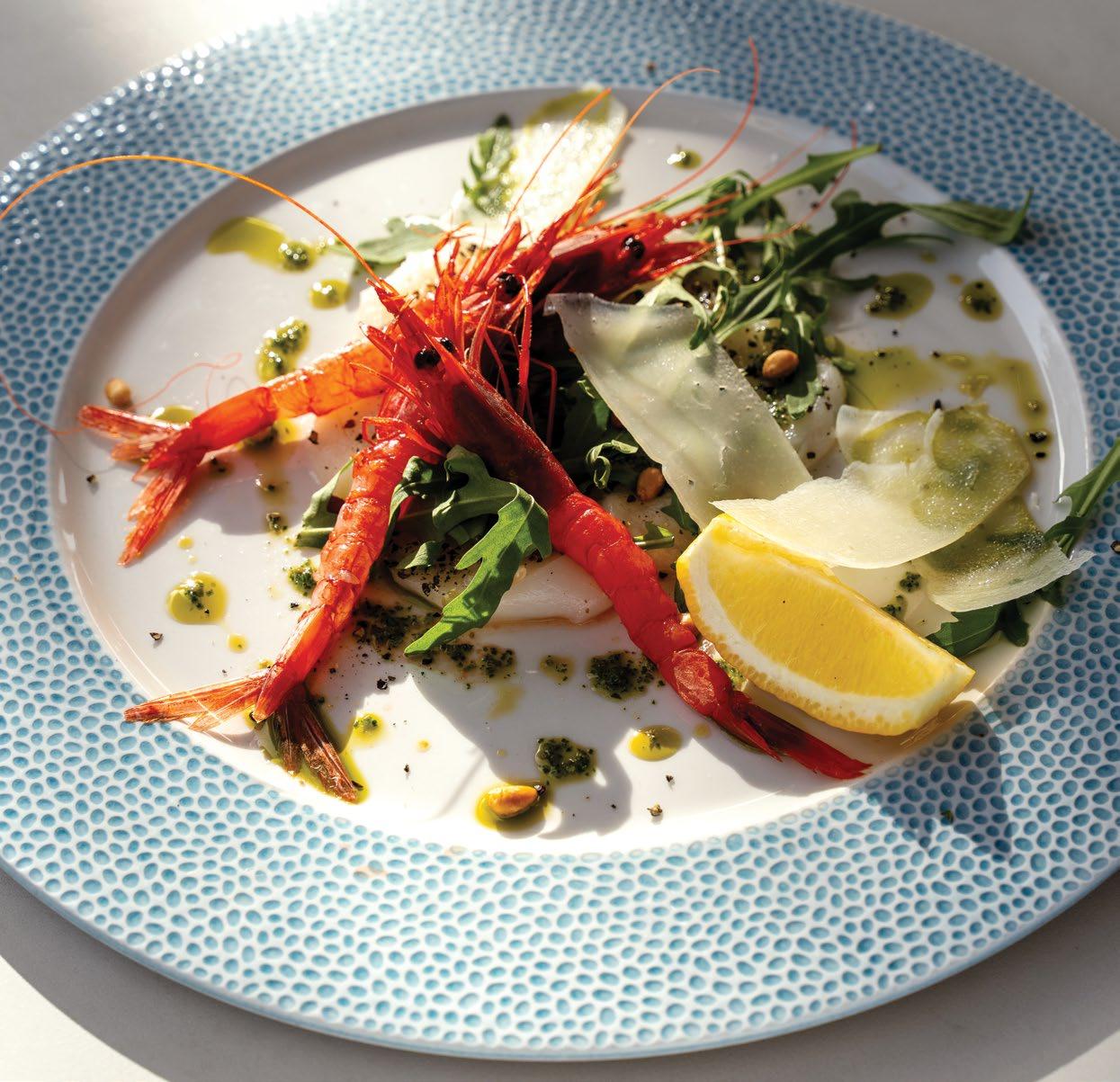
Carpaccio of Scallops & Raw Prawns with Pine Nuts & Pecorino
Not much cooking required here either. Just plating skills needed really.
Serves 4
Prep time. 30 minutes
INGREDIENTS
8 very fresh scallops, coral removed (keep this and use in a pasta sauce)
16 fresh red prawns, shelled & deveined
Sea salt flakes and freshly milled black pepper
60g Pecorino Shavings
60g Toasted Pine Nutes
Few micro greens to garnish
Aprox 30ml EVOO
METHOD
Toast the pine nuts in a hot non-stick pan. Leave to cool.
Peel and devein the prawns. Slice the fresh scallops into thin rounds and arrange onto 4 chilled serving plates. Place the prawns into the centre. Season with salt and pepper. Garnish with Pecorino and pine nuts. Finally drizzle with parsley oil and decorate with micro greens.
N o 20 - NEXT MAGAZINE - 93
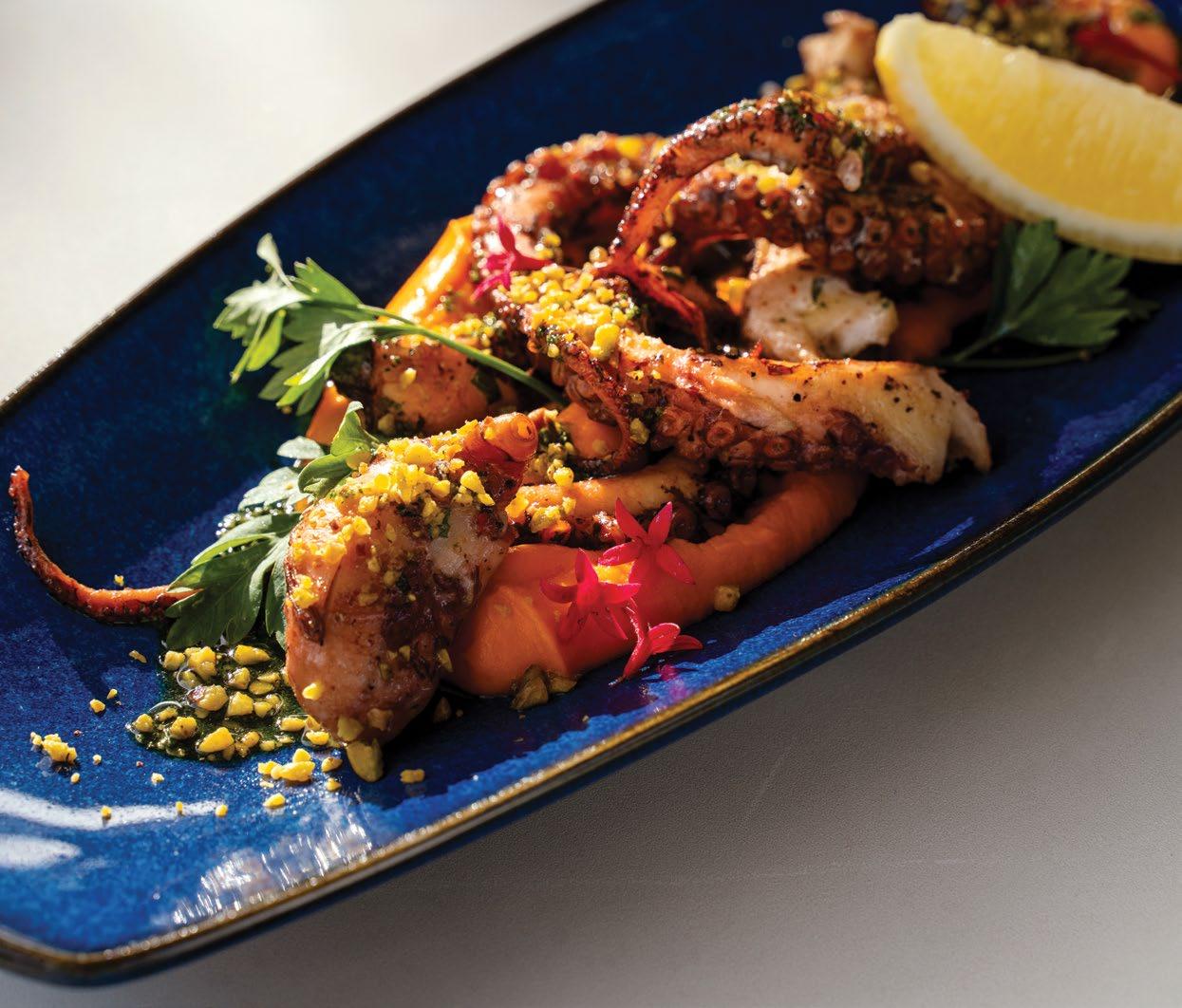
Smoked Octopus on carrot puree with toasted pistachio nuts
Serves 6
Prep and cooking time 2 hrs
INGREDIENTS
1kg ready frozen octopus
2 bayleaves
1⁄2 lemon
4 cloves garlic, peeled & finely chopped
Handful parsley, finely chopped
Chili
4 tbs EVOO
Salad leaves
6 to 8 dry pine cones for smoking
50g toasted pistachio nuts, chopped
METHOD
Place frozen octopus into a pot. Cover with water. Add the bay leaves and 1/2 lemon. Place on the heat and bring to the boil. Lower the heat, cover and simmer for 1hr till tender. Turn the heat off and leave to cool for 30 mins in the water then drain. Remove the beak if still there and cut into smaller pieces. Preheat oven to 180C.
Transfer to a shallow baking tray. Add the chopped garlic, parsley and EVOO. Season and mix well. Place in the oven and bake for 8 mins. Meanwhile, prepare a small baking tray by lining well with foil. Place the pine cones in this.
Turn the heat on the oven down to the lowest setting and turn off the fan. Place the pine cones on the bottom of the oven. Using a blow lamp carefully set the cones on fire then shut the oven door. The fire should extinguish and create smoke in the oven. If not, turn the fan on to help. Smoke
the octopus for 5 mins then remove and serve warm on the carrot puree topped with chopped toasted pistachio nuts. (Obviously a good extractor or very well ventilated room is a must. Oven will need to be rinsed after to remove smoky scent).
CARROT PUREE
800g carrots, peeled
320ml water
1 tsp ground cumin powder
1/2 tsp ginger powder
2 tsp salt
30g butter
Chop the carrots roughly and place into a pot with the rest of the ingredients. Bring top the boil, then cook gently for 20 minutes till carrots are tender. Use a stick blender to process to a smooth puree.
94 - NEXT MAGAZINE - N o 20
Lemon Lava Cake

INGREDIENTS
120g white chocolate
65g butter
95g sifted icing sugar
2 egg yolks
0.5 tsp vanilla extract
1 tbsp lemon juice
Zest of 1 lemon
135g plain flour, sifted
Pinch of salt
2 eggs
METHOD
Spray dariole moulds and coat with flour.
Melt butter and chocolate on Bain Marie. Mix in sugar, eggs, yolks, vanilla and lemon juice and zest. Gently fold in flour and salt. Do not over work. Pour into prepared dariole moulds and leave in fridge till needed. Oven 185C. Bake 15 mins.
You may garnish with fresh strawberries and an ice cream or whipped fresh cream.
N o 20 - NEXT MAGAZINE - 95 FOOD
Makes 4 dariole moulds
PRESERVING SALINA NATURE RESERVE
Emanuel Mallia, the esteemed manager of the Salina Nature Reserve in Malta, passionately delves into the local impacts of global warming and atmospheric pressure on the region's avian inhabitants. Amidst the serene backdrop of Salina's wetlands, Mallia explains the profound consequences of escalating atmospheric pressure changes, known colloquially as "atmospheric sieges," which trigger sudden shifts in sea levels. He recounts instances where sea levels plummet below normal only to surge dramatically above, inundating critical habitats with saltwater and marine debris, like dead posidonia oceanica and plastic.
These atmospheric upheavals, Mallia explains, wreak havoc on the delicate balance of the reserve's brackish wetlands by flooding it with salt water, disrupting ecosystems and necessitating lengthy restoration efforts. Detailing a recent project funded by an external organisation to rehabilitate a previously destroyed wetland, Mallia underlines the challenges posed by such disturbances, which extend beyond immediate environmental impacts to include long-term habitat degradation and species displacement. As an example, these events of last June destroyed all the nests of the breeding birds (at the time), which substantially lowered their chance of having a successful brood.
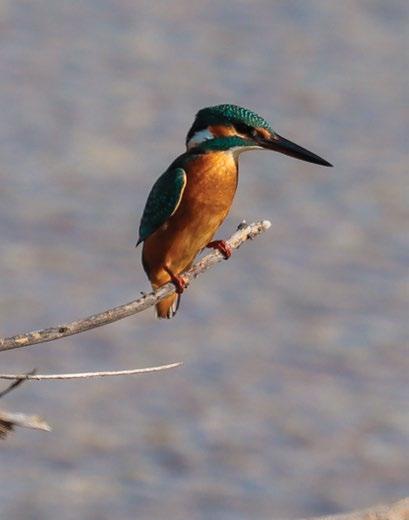
We inquire with Emanuel regarding the significance of the national killifish, a rare species with specific habitat requirements. Mallia discusses the impact of global warming on these fish, noting their preference for lower salinity despite their tolerance for varied salinity levels. Flooded saltpans become hyper saline due to evaporation, posing a threat to the fish population. Despite their abundance in Salina salt pans, these fish, only 6 cm in length, hold national importance. Emanuel outlines the salt level management process, where sea water enters salt pans at 3.8% salinity and exits at 15-16%, preventing salinity levels from exceeding 20%—lethal for killifish. Restoring equilibrium after flooding requires extensive efforts due to the introduced salinity.
Furthermore, the severity of the stormy weather as well as rising sea levels, caused by changing climate, comes with damaging the salt pans walls and big stone blocks being moved by the waves. The repair of all these costs a lot of money and the reserve has to wait for government entities.
Mallia addresses the ecological ramifications of marine debris influxes , such as the decomposition of posidonia vegetation leading to nutrient overloading and algal blooms. These blooms, Mallia explains, exacerbate oxygen depletion in waterways, further
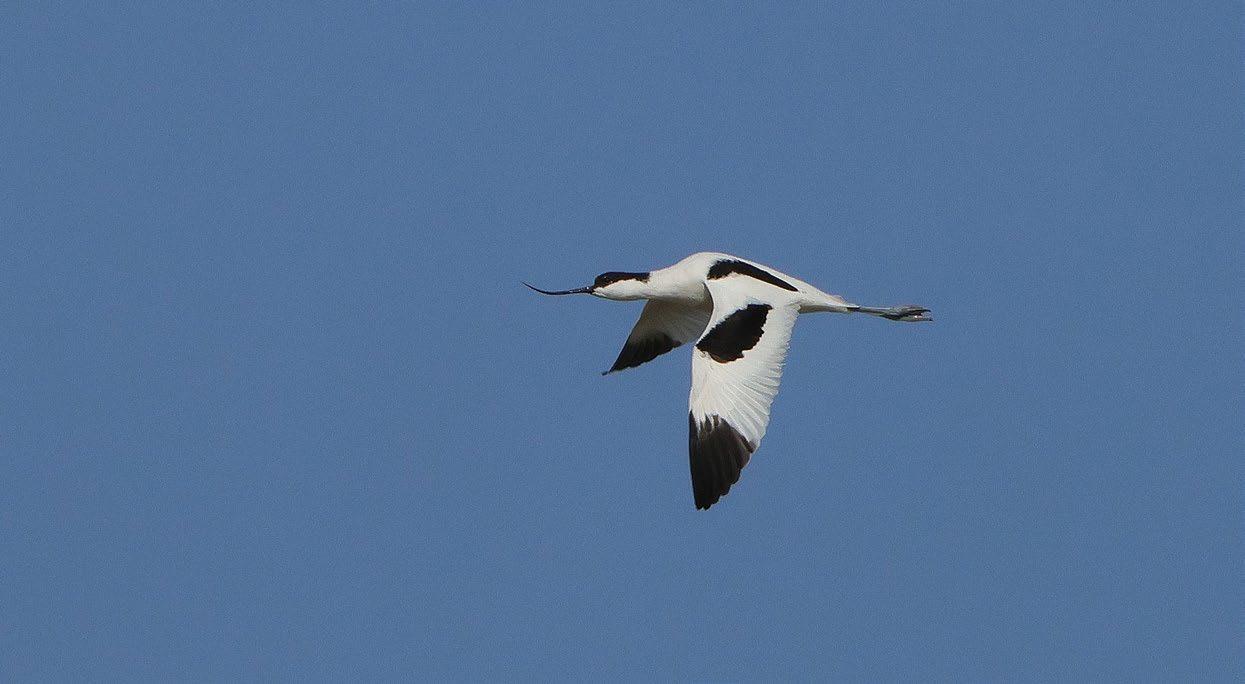
ENVIRONMENT
Words by Julia Boikova
Photo by Mario V Gauci
Photo by Jonathan Caruana


relatively safe. These shifts highlight the impact of global warming on predator-prey dynamics, emphasising the intricate balance within ecosystems. As climate change accelerates, understanding and mitigating its effects on biodiversity become imperative for preserving ecological stability. Adaptation strategies must consider the interconnectedness of species and the cascading effects of environmental shifts on entire ecosystems.
In conclusion, Mallia emerges as a steadfast champion for avian conservation, his unwavering dedication to preserving Malta's natural heritage underscored by his profound insights and tireless advocacy. Through his stewardship of the Salina Nature Reserve, Mallia embodies the spirit of resilience and adaptation necessary to confront the myriad challenges posed by a rapidly changing climate. How can we help? Supporting bird conservation efforts in Malta requires significant backing, particularly in influencing policy. With politicians shaping laws, the strength lies in numbers. A robust membership base amplifies lobbying power, crucial for policy advocacy. However, funding remains a challenge. Project-specific grants are available, but administrative costs are often overlooked. Membership dues provide unrestricted funding essential for administrative tasks and legal support, crucial yet difficult to secure through project grants. Thus, increasing membership and encouraging donations are vital for sustaining conservation initiatives. By bolstering support through membership growth and financial contributions, we can enhance our capacity to protect Malta's avian biodiversity effectively.
imperilling aquatic species and disrupting ecosystem functioning. Now with the effect of global warming on nature, not just fish and birds. Malta is becoming drier and warmer and it means certain species of plants are suffering because it's too dry.
Changes in flowering, seed production, and fruiting periods are disrupting ecosystems, affecting species dependent on plants, particularly birds and insects. Birds synchronize their nesting with peak food availability, necessitating earlier migrations to breeding sites. Winter-breeding birds in Europe migrate south, adjusting their return to match food availability, crucial for breeding success. As temperatures rise, snakes and reptiles become active earlier, posing a threat to nesting birds. For instance, the Sardinian warbler's first brood, usually nesting in March, faces increased predation from early-active reptiles. Even subsequent broods in late April suffer higher predation rates due to earlier reptilian activity. This disruption contrasts with the natural cycle, where the first brood remains
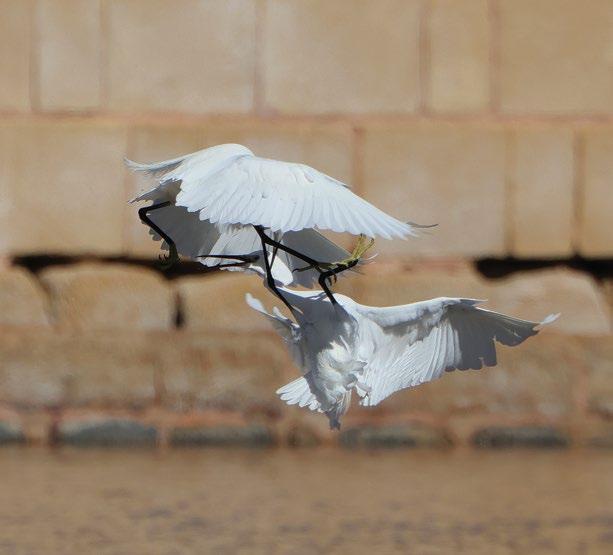
N o 20 - NEXT MAGAZINE - 97
Photo by Mario V Gauci
Photo by Mario V Gauci
Sunset, Sunrise Synchrony
Is there a more obvious cliché than a sunset photo? What question is more childlike than "where does the sun go"?
Driven by the belief that undermining what we usually take for granted often reveals unexpected implications, seven years ago, after studying maps and times of sunrises and sunsets, I discovered that only twice a year at the exact moment in which on the Maltese coast we perceive the sunset, on a different beach of another archipelago, in Hawaii, you’ll find someone who is watching the exact same sun rising.
This ideal relay passage brings together, through two similar but opposite events, places 12,000 km apart, at the end and at the beginning of a new day. The event is rarer than you might think given that for the rest of the year the Maltese sunset is otherwise synchronized with a sunrise in the open ocean.
In March 2017, with the help of kind collaborators who responded to my call from Hawaii, I filmed the event from Malta, immortalising this sunset/sunrise synchrony.
Coincidentally, as though some ancestral questions do still hang over us unanswered, the location I chose to create this artwork is located a short distance from Ħaġar Qim temples, thousands of years old structures oriented towards the cosmos and destined to mark the seasons through the sun like meridians.
“..The sunset is a special homage that the sun pays to me personally,” as Calvino puts it in his book Palomar. He was alluding to the fact that, wherever you move, the reflection of the setting sun on the sea always points only to you, forming a sword of light of which you alone are the summit.
In fact, both the sunset and sunrise are phenomena that exist only in relation to an observer. Without a localised point of view in the right place and time, all you’d get are rotating celestial bodies, but no sunset as we understand it.

Through my artwork, I tried to give tactility to this relationship between individual perception and all-encompassing reality, between the privilege of our uniqueness, as recalled by Calvino, and the condemnation of our incompleteness as finite beings in time and space.
Could a polyphonic vision, then, be a more adequate framework to understand reality?
A vision that incorporates heterogeneous and partial perspectives, not as the sum of elements in isolation but rather in the form of relationships. On the other hand, there is no exact time when the sun sets and when it rises but it does so constantly and simultaneously, on the condition that there is someone observing it.
This question is not just limited to the observation of astronomical events, but to how we perceive and respond to the world in general.
There seems to be a proportionality between the magnitude of our problems and the narrowness from which we observe them. Embracing a broader space-time perspective, which goes beyond the limitations of the individual and the single point of view, inevitably imposes a redefinition and prioritization of our problems but above all, it poses new questions of meaning.
Would notions such as borders or war take on a different meaning, if not become entirely meaningless, through a cosmic perspective?
Would the environmental emergency take on a different meaning if examined in a space-time period that goes beyond the narrowness of our daily lives?
To see the video of this work go to Alberto’s instagram page - @_alberto_favaro_

98 - NEXT MAGAZINE - N o 20
Alberto Favaro is an Italian architect residing in Malta from 2003. His architectural work has always been accompanied by artistic research, with the intent to question and problematise space.
ART
He makes use of different mediums to express his work such as graphic art, photography, video, sculpture and art installations.
 Photography by Julia Boikova
Photography by Julia Boikova












presented by:
For more information and tickets, visit www.showers-event.com | / showersevent VIP table service +356 7995 9561. Duration: 2pm-1AM
Saturday 6th JUly 2024 from 2pm
Bene MARSHALL (UK) // Ilir Soleil (SE) // Mia Wave (ES)
STARRING: Marco
Dj Sabrina Martinez (MT) // Tiffany (MT) // Uppeke (SE)
GeNErani (IT)










































































 CONTESSA AT THE PHOENICIA MALTA
CONTESSA AT THE PHOENICIA MALTA









 Words by Nicolà Abela Garrett
Words by Nicolà Abela Garrett
 Tanizaki’s Shadows, Gozo | Photo by Hanna Briffa
Tanizaki’s Shadows, Gozo | Photo by Hanna Briffa

































 Words by Nicolà Abela Garrett | Photography by Il Palazzo Experimental
Words by Nicolà Abela Garrett | Photography by Il Palazzo Experimental




































 Photography by Julia Boikova
Photography by Julia Boikova











